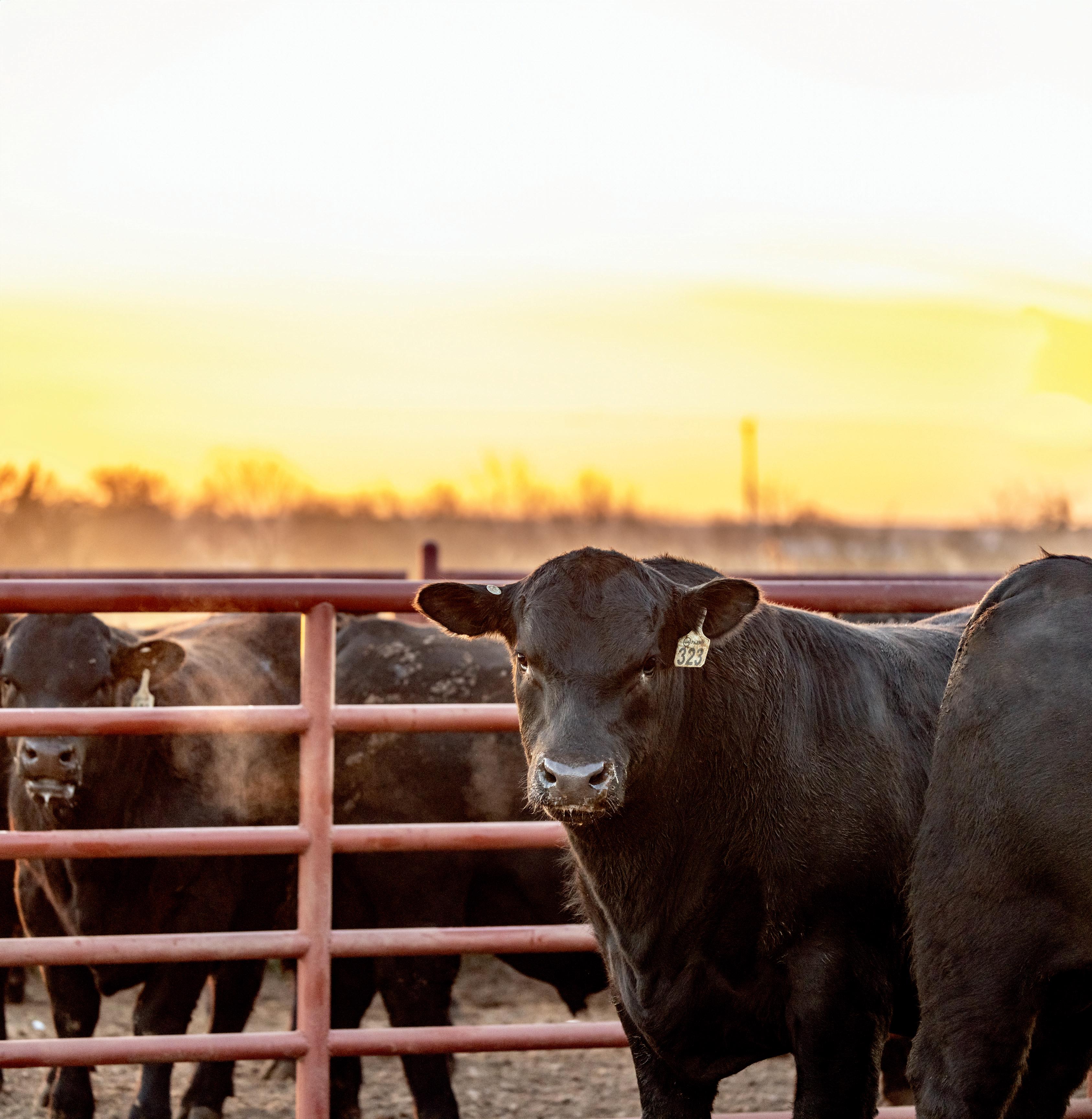Energy Leases
Experts discuss the landscape for wind and solar energy contracts.

Experts discuss the landscape for wind and solar energy contracts.
As opportunity builds, use a systems approach to increase cow numbers.
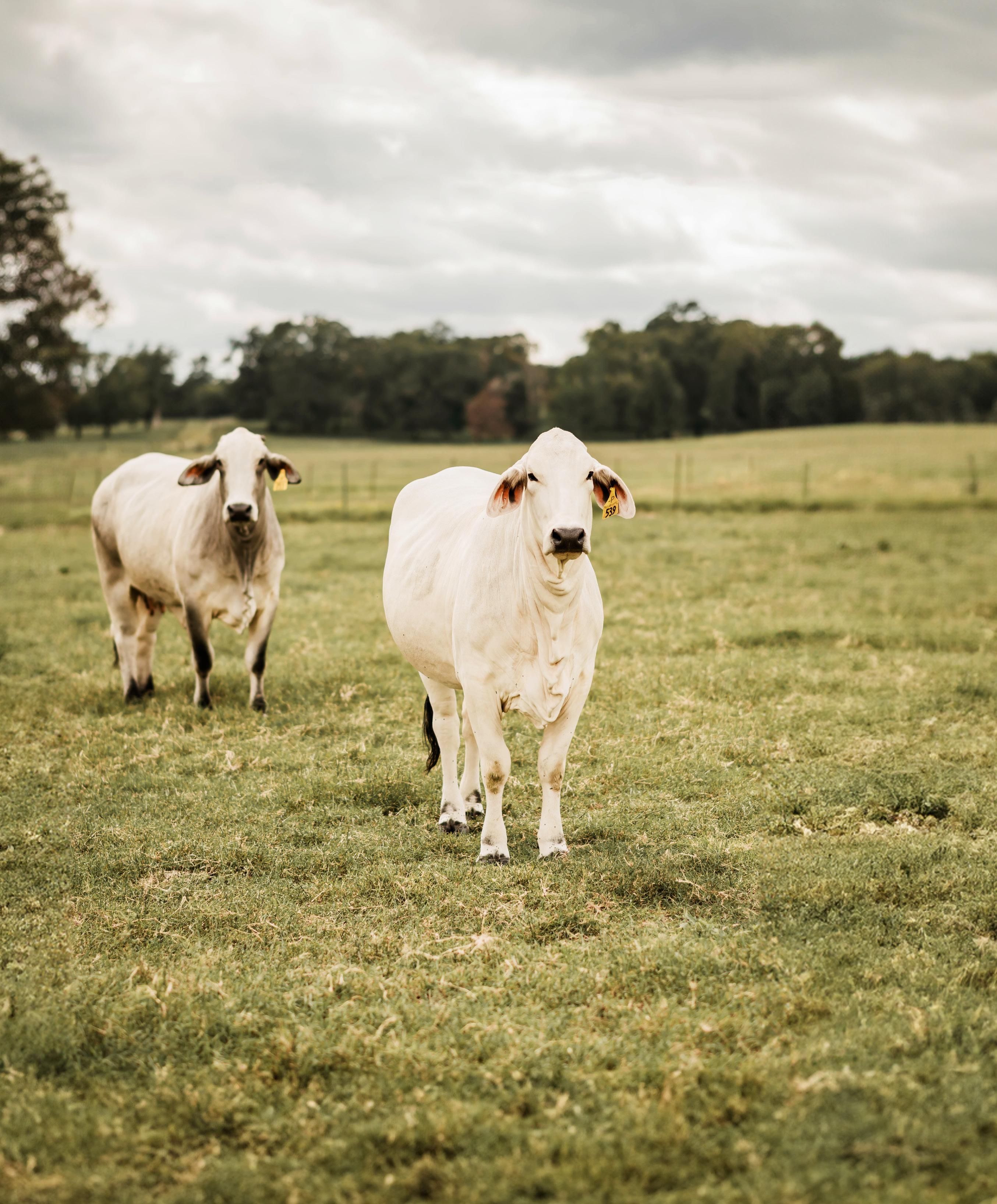

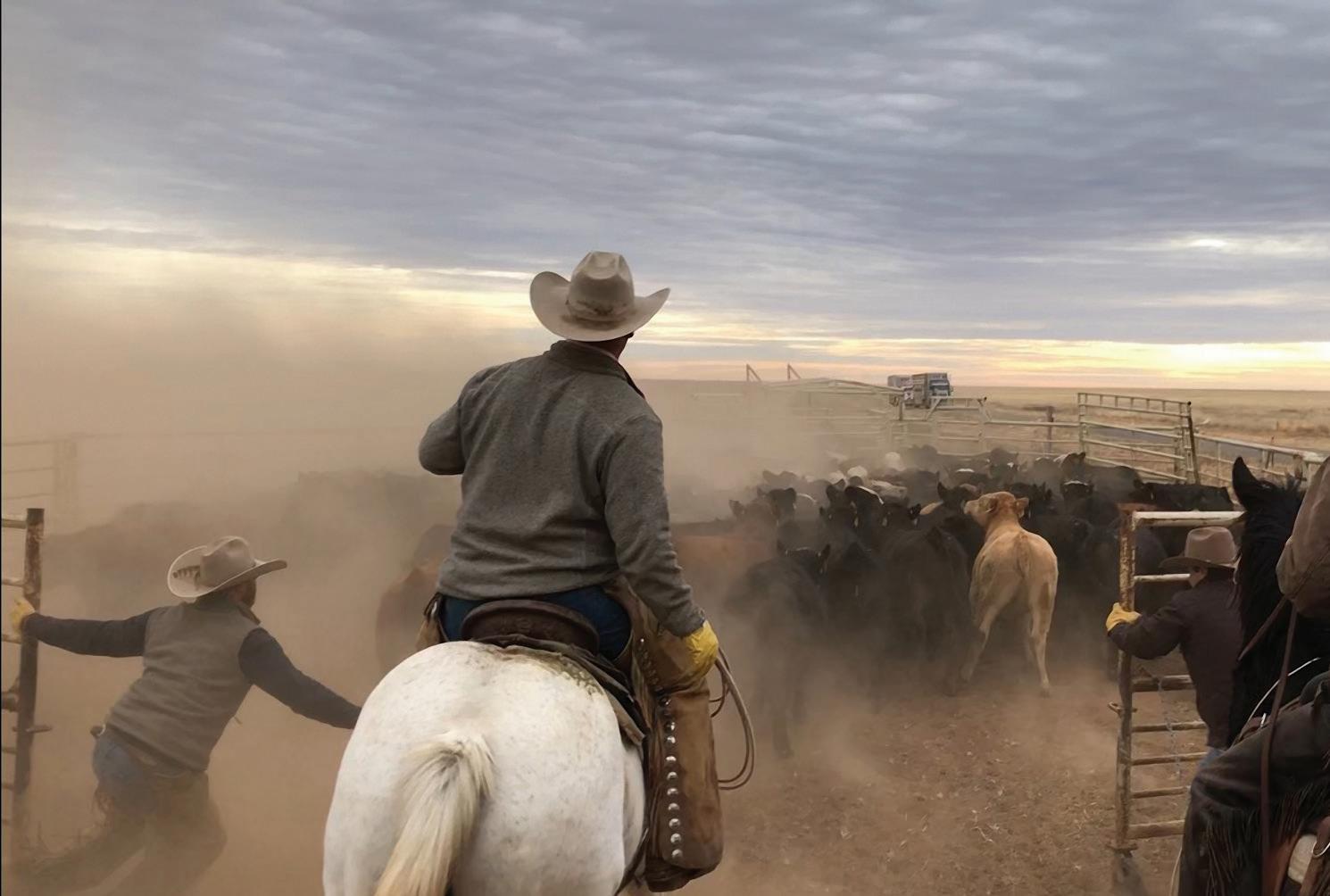

Birdwell Plainview, TX (806) 681-3667



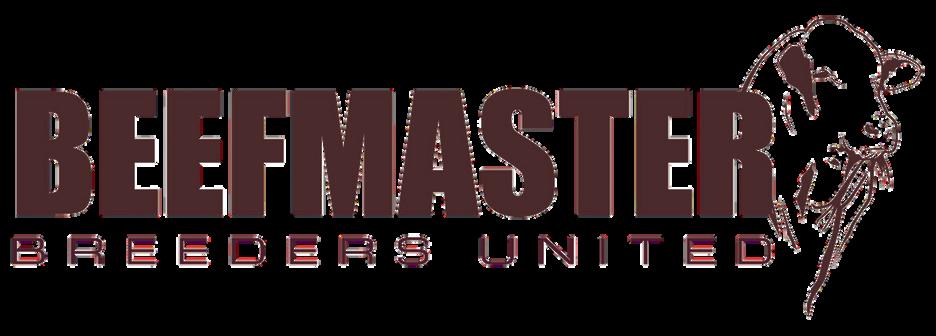
Considerations for a herd rebuilding strategy.
By Diane Meyer

With renewables on the rise, experts offer advice on wind and solar energy leases.
By Jena McRell
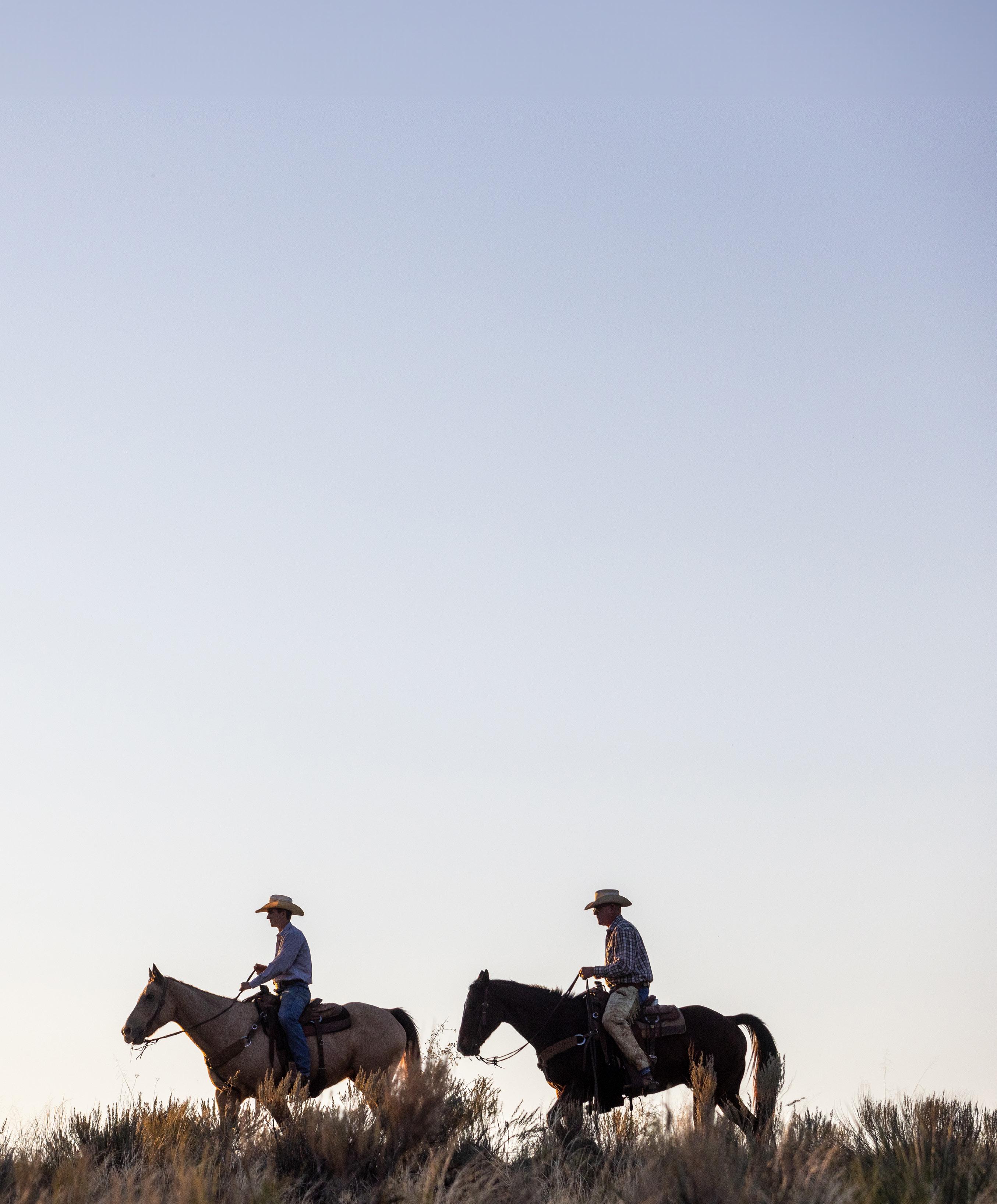
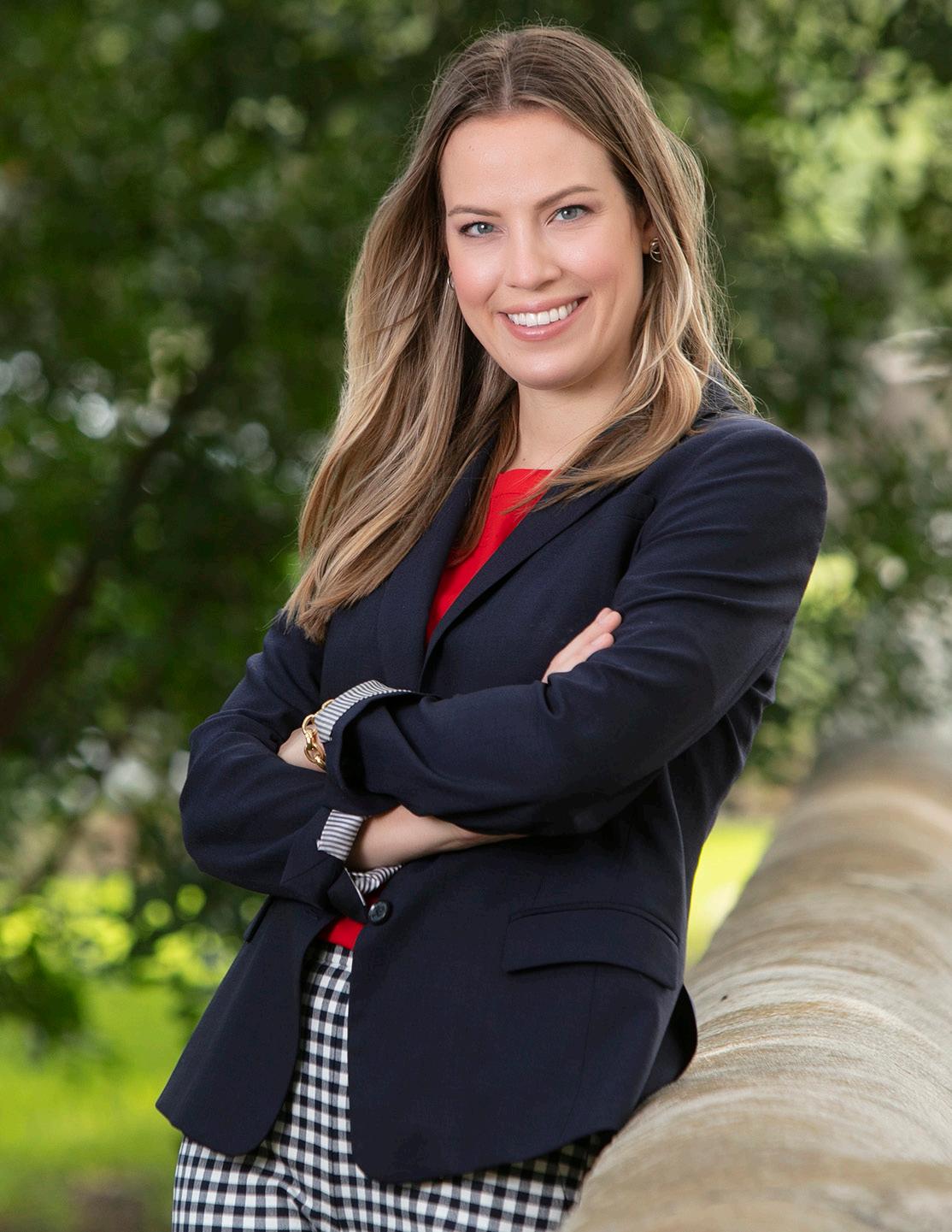
As the saying goes, when life gives you lemons, make lemonade.
In the cattle business, where much is unpredictable and out of our hands, it is important to find silver linings during challenging times.
For those who were faced with the difficult decision of culling the herd due to drought or other factors, today’s favorable market conditions could offer a chance to start the rebuilding process. Whether bringing in new genetics or retaining the herd’s best, adversity brings opportunity to build back even stronger.
Clay Mathis, head of the animal science department at Texas A&M University, sheds light on how these decisions impact the entire production system. In his words, “Today’s problems were yesterday’s solutions.” Explore considerations for taking a systems-based approach to rebuilding your herd beginning on page 10.
Alternative energy leases for wind and solar production continue to proliferate across Texas and the Southwest. In our second feature story, we caught up with experts on what this means for cattle raisers and landowners. When engaging in a renewable energy lease makes sense, it is critical to ensure certain private property rights are protected.
Last month, I wrote about this spring’s historic wildfires, a tragedy impacting producers in the Panhandle and Western Oklahoma. While devastating, this challenge also offers a glimmer of hope.
Read about the 6666 Smokehouse Creek and Windy Deuce Wildfire Benefit in this issue, too. The generosity of so many provides hope for those facing loss.
A special thank you to Shelby Kirton, Texas & Southwestern Cattle Raisers Association manager of communications and marketing, for her exceptional help with this month’s edition. Her writing, meticulous edits and unique voice have made their way into the following pages.
Enjoy her work, along with that of so many who pour their time into these pages. T C

Jaclyn Roberts Parrish Executive Director of Communications & Marketing/ Editor-in-Chief, The Cattleman

Every season brings new opportunities — to be more efficient, to expand your operation, to increase your yield. There’s always hope for something more or better. We’re here to help you achieve it with lending and insurance products that help you grow and protect your operation. And as the largest agricultural lending cooperative in Texas, we offer cooperative returns to our members. So you share in our success. Now that’s something to be optimistic about. To learn more, visit CapitalFarmCredit.com.
Published by Texas & Southwestern Cattle Raisers Association
P.O. Box 101988 Fort Worth, Texas 76185
Phone: 817-332-7064
Fax: 817-394-1864
Subscription Inquiries: (orders, address change, problems) tscra@tscra.org or 800-242-7820 tscra.org
Jaclyn Roberts Parrish Executive Director, Communications & Marketing/Editor-in-Chief jaclyn@tscra.org • 817-916-1794
Shelby Kirton Manager of Communications & Marketing
Jena McRell Managing Editor
Kayla Jennings Elyssa Foshee Sanders Proofreaders
Grace Dunham Executive Director, Events & Partnership gdunham@tscra.org • 817-916-1745
Kyle Conway Director of Corporate Relations & Sponsorships kconway@tscra.org • 817-916-1746
Heather Heater Graphic Design & Print Production Manager
Production support by: GRANT COMPANY grantcompany.net
The Cattleman/TSCRA tscra.org
Cattle Raisers Insurance cattleraisersinsurance.com
Law Enforcement tscra.org, click on Theft & Law
Cattle Raisers Convention cattleraisersconvention.com
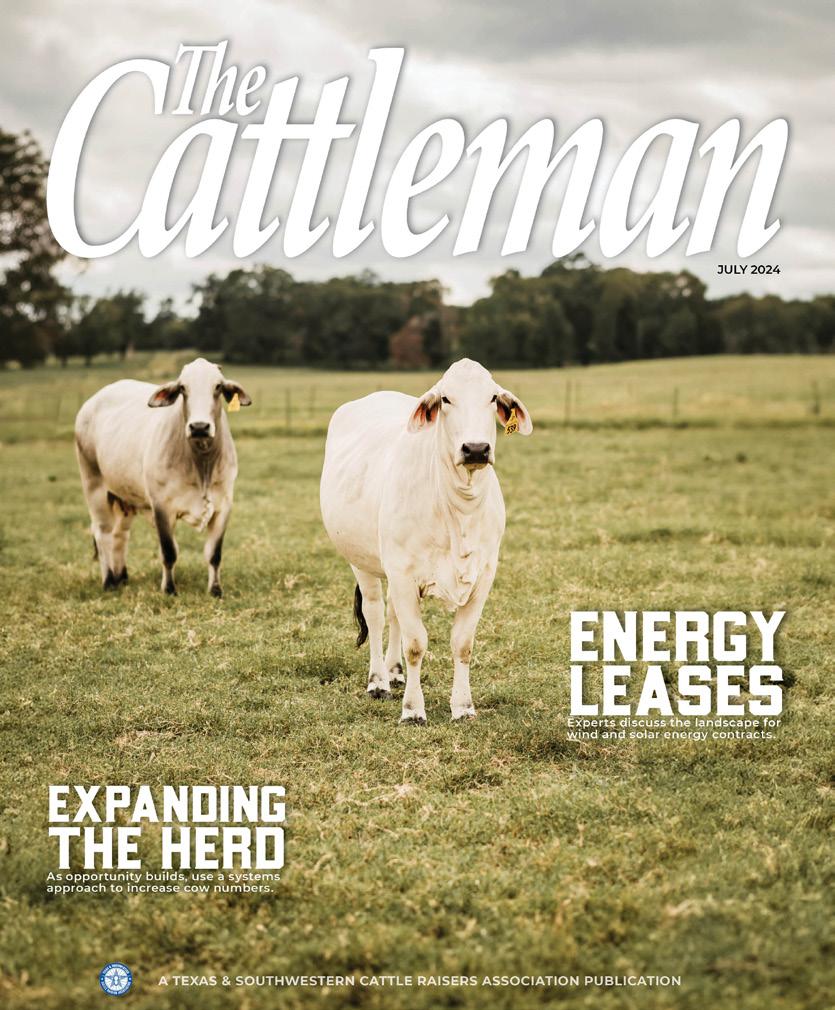
Brahmans graze summer pasture in East Texas.
by Katie Barnett
The best views come while on horseback.
by Russell Graves

By Diane Meyer
With cattle supplies still low, many cow-calf producers are walking the tightrope of expansion. Premiums for cows and feeders are enticing, yet input costs and interest rates remain obstinate.
Earlier in the spring, there were signs of slower heifer feeding. According to an April 20 report by Oklahoma State University Agricultural Economist Derrell Peel, heifers comprised 38.5% of total feedyard inventories, down from January’s 39.7%.
Even so, replacement heifer inventory kept decreasing, and the beef cow herd kept shrinking.
In 2023, heifer slaughter soared to 40% of total fed slaughter — a high previously set in 2000 and 2001. Peel reported that for the next herd expansion to begin, the heifer slaughter percentage “must drop below the long-run average of just over 37% and likely to the 35-36% range. There is no indication that is happening yet.”
Though herd growth may still be a dot on the horizon, there are strategies to consider for long-term stability when the time comes to rebuild.
When restocking or growing operations, expansion presents the opportunity to change an entire production system. That is according to Texas A&M University’s Animal Science Department Head, Clay Mathis, Ph.D.
In a presentation earlier this year during the 2024 Cattle Industry Convention in Orlando, Florida, Mathis advocated for a systems approach to herd rebuilding.
This problem-solving mindset accounts for the relationship between every factor making up a single system. Applied to ranching, challenges like drought, labor and capital should not be approached as stand-alone pillars, but as codependent layers.
“Systems thinking is where we see the whole of an issue and we see the parts, and we’re interested in how they’re interconnected,” Mathis said. “We’re all systems thinkers to some degree.”

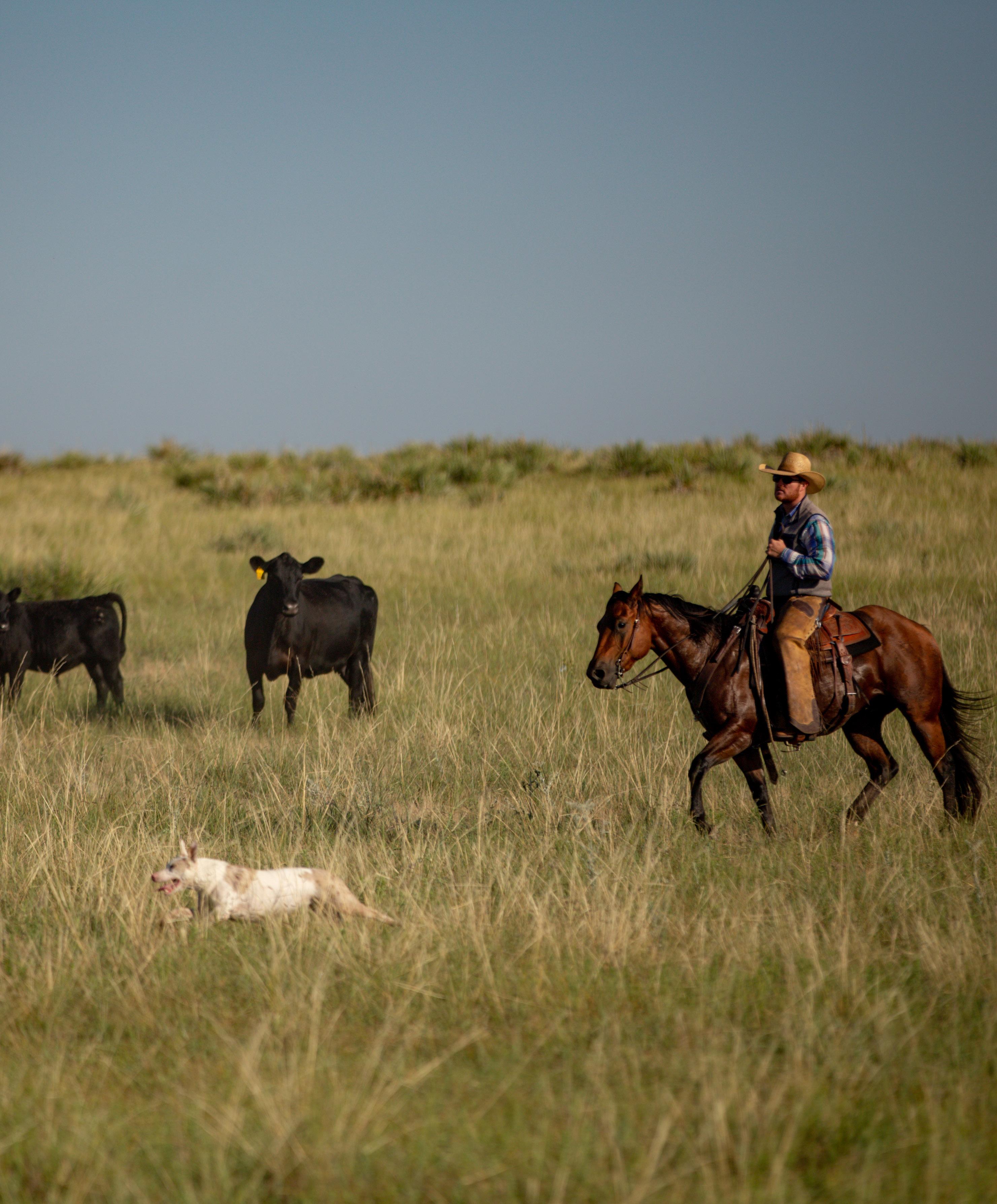

Mathis used a systems approach in his former role as director of the King Ranch Institute for Ranch Management. To describe systems thinking, he compared management and production systems at ranches across the U.S., identifying commonalities among particularly diverse and well-managed cow-calf operations based in Nebraska, Texas and Wyoming.
Six commonalities among the managers who built resilient production systems were:
• Land stewardship
• Accounting
• Crossbreeding and heterosis
• Marketing all classes of cattle
• Willingness to adapt
Prioritizing what matters most
These guiding principles allow for a systems approach to the operation and what future opportunities might be in store. In particular, the ranch managers used those areas to optimize feed, labor and depreciation costs, which Mathis said represent more than half of the total expenses on a cow-calf operation.
“If we have a high-leverage decision that influences profitability, you can bet it’s probably going to impact labor, purchased feed or depreciation, and most likely impacts all three,” he said.
Safeguarding healthy and productive rangeland at each location was the underlying principle of longterm stability. Noting these managers were “numbers junkies,” Mathis said sound accounting systems and a definitive measure of unit cost of production enabled those managers to make informed decisions and stay in the black. Implementing crossbreeding for the gift
of heterosis and marketing all classes of cattle well were also necessary for those commercial operations to withstand pitfalls.
“Have you heard that today’s problems were yesterday’s solutions?” Mathis asked. “That’s what we’re after — understanding the issues that we face well enough to create better solutions.”
When adding animals to the herd, another scenario to play out is how the new arrivals might influence overall herd health.
Whether adding a few or a few hundred head, health and biosecurity need to be prioritized for long-term growth. Jody Wade, a veterinarian with Boehringer Ingelheim, offers health considerations for selecting and selling replacement heifers.
“There are two really big items: nutrition and vaccines,” Wade says. “If we can vaccinate properly and prepare heifers through the yearling growth phase, they should be bulletproof by the time they start breeding and getting sold.”
Noting the market premiums for replacements, he recommends asking the following questions before signing on the dotted line:
• What is their vaccination history?
• What pathogens have they been tested for?
• Have they been tested for persistent infection?
• Is there paperwork documenting test results and vaccination records?
Answers to those questions will help map the health history of arriving animals and protect the existing herd.
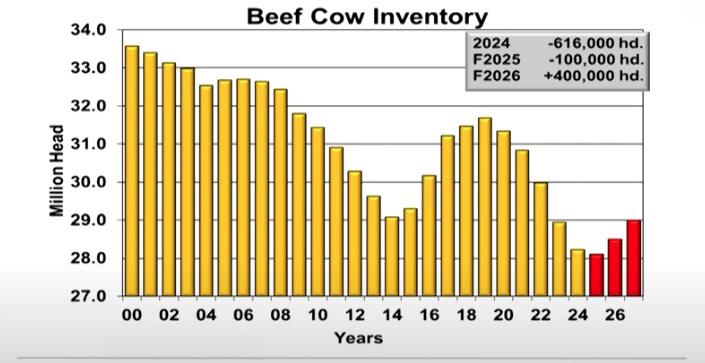
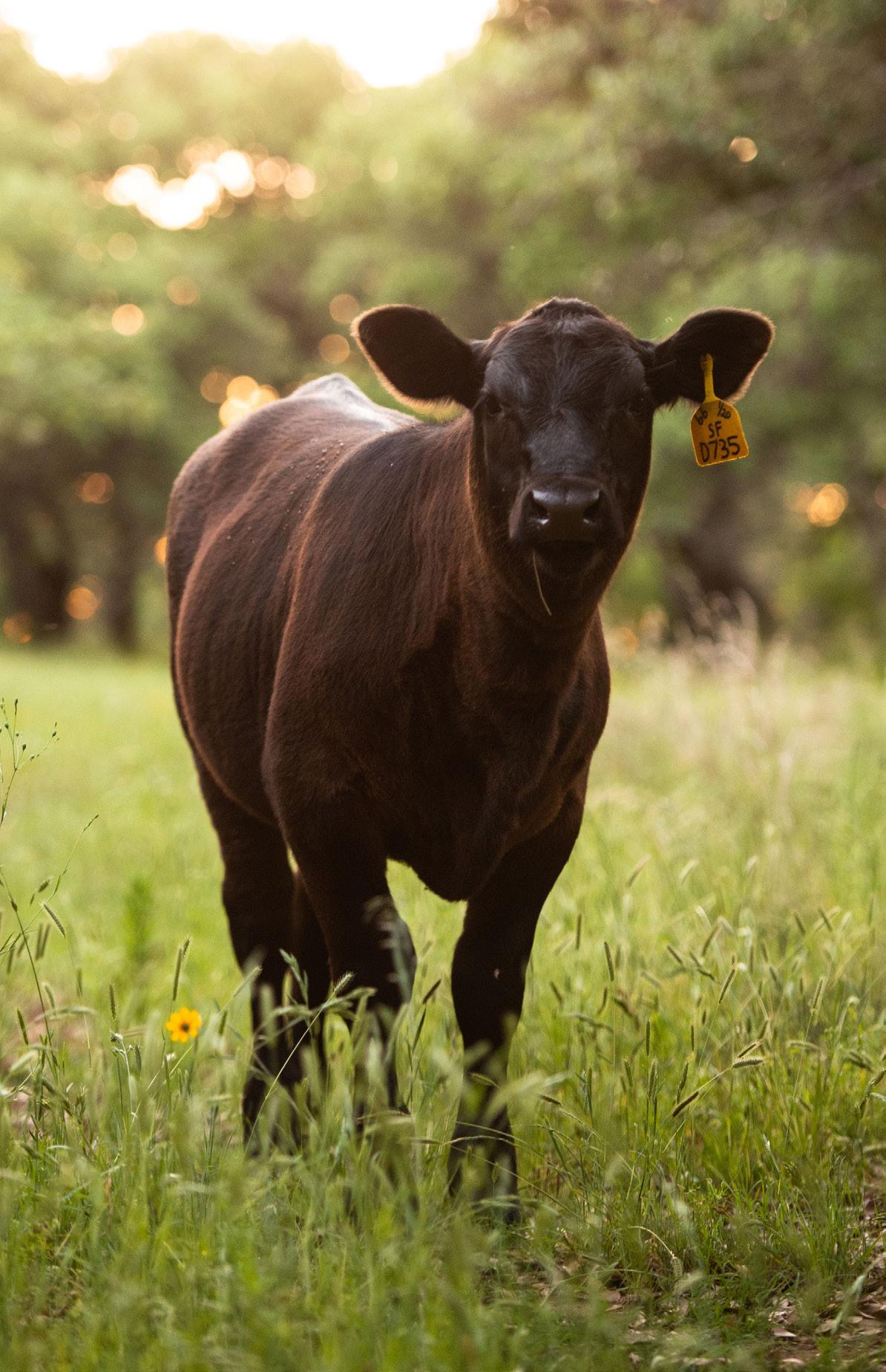
For example, if animals have been exposed to bovine viral diarrhea, or BVD, then they will carry the antigen to their next locations.
“If you have animals that haven’t been exposed to that virus before, it could be pretty devastating to your home herd,” Wade says.
When animals do arrive, a quarantine period is highly advised.
On the other side of the equation, Wade encourages sellers to document vaccinations and viral tests as part of their marketing plans. Vaccine records ensure females will uphold production cycles into motherhood and have immune systems capable of fighting diseases that cripple fetuses.
Wade recommends a modified-live vaccine program for replacement heifers. Research has shown proper vaccination will protect more than 90% of fetuses from BVD infection or becoming persistently infected. Killed vaccines are not as successful in heifers, he says.
In his work, Wade says he increasingly observes operations that use a modified-live vaccine prebreeding, and a killed vaccine during gestation to increase colostrum antibodies.
“Killed vaccines are phenomenal at producing good colostrum antibodies in the cow for the calf,” he says.
All this to say, genetics still make a huge difference in how animals perform in different environments as they grow into adulthood. Wade applauds replacement heifers from Texas, Oklahoma and the southeastern states for their resiliency in the face of heat stress and drought.
“If they’re tough enough to make it through those things, then they can make it just about anywhere,” he says.
In the face of prolonged and intense drought periods, it is imperative to stock pastures with genetics that make efficient use of available forage. “It starts at the soil and the root systems and the grass,” Mathis said of land management. “That’s the foundation of everything.”
James Clement III, a Texas & Southwestern Cattle Raisers Association director and former King Ranch employee who worked with Mathis, says land management is the biggest limiting factor in maintaining animal count through weather cycles.
Citing research illustrating the importance of the top six feet of soil in protecting the environment, he stresses a grazing pattern that allows plants to recoup, regrow and not “leave the place looking like a parking lot.”
Today, Clement is the senior vice president of grass and rangeland at the soil measurement and mapping company EarthOptics. He says data they collect proves livestock are beneficial to grasslands.
“They’re speeding up the cycle of photosynthesis and grass growth and keeping that land healthy,” he explains. “It’s also providing added cashflow.”
In this way, a comprehensive understanding of available native grasses and forages, along with the soil beneath the surface, helps not only boost an animal’s ability to graze and put on pounds, but also offers added income through biodiversity or carbon credits.
“If you can quantify it, then there’s an argument to be made to monetize it, because the person managing better by the land is actually doing a larger benefit to the overall ecosystem and the Earth,” he says.
According to Clement, another factor impacting both potential revenue streams and forage availability is wildlife management.
For instance, at his family’s ranch in South Texas, Nilgai antelope are abundant. They populate quickly and eat as much forage as a mature elk — grass that could feed more cows. This necessitates finding a delicate balance between keeping the antelope population at bay to reserve enough grass for the cow herd and maintaining a wildlife herd big enough to provide additional cashflow.
From a systems perspective, Clement makes decisions by asking, “As wildlife becomes a bigger part of our bottom line, how do we make all of this work in concert and not prioritize a single thing?
“It’s always pulling back. It’s not solving what’s wrong with this one acre. It’s, ‘Why is that acre a problem at all, and what do I have to change to make that work?’”
While experts agree the next expansion phase of the U.S. beef cow herd is likely to be slower than prior cattle cycles, looking ahead and preparing for what is to come

will be beneficial for ranchers and landowners. Thinking through all parts of the equation from a systems approach will allow for the greatest return when the time comes around.
“If we’re going to build the production system of the future, we have to know where we’re going,” Mathis said. “Think deeply about the challenges you face with your unique situation… so you can hopefully build your production system so it is even more resilient in the future.”
In the long-run, Wade says increasing cow numbers with quality replacements is necessary to produce quality beef. And though it may be a hard road, it is one cattle raisers have traveled before, and will travel again.
“We’re furnishing protein for the world, and we want to put a great protein product on the plate that people are going to be happy with,” he says. T C
Diane Meyer is the associate director of content for Grant Company based in St. Joseph, Missouri.
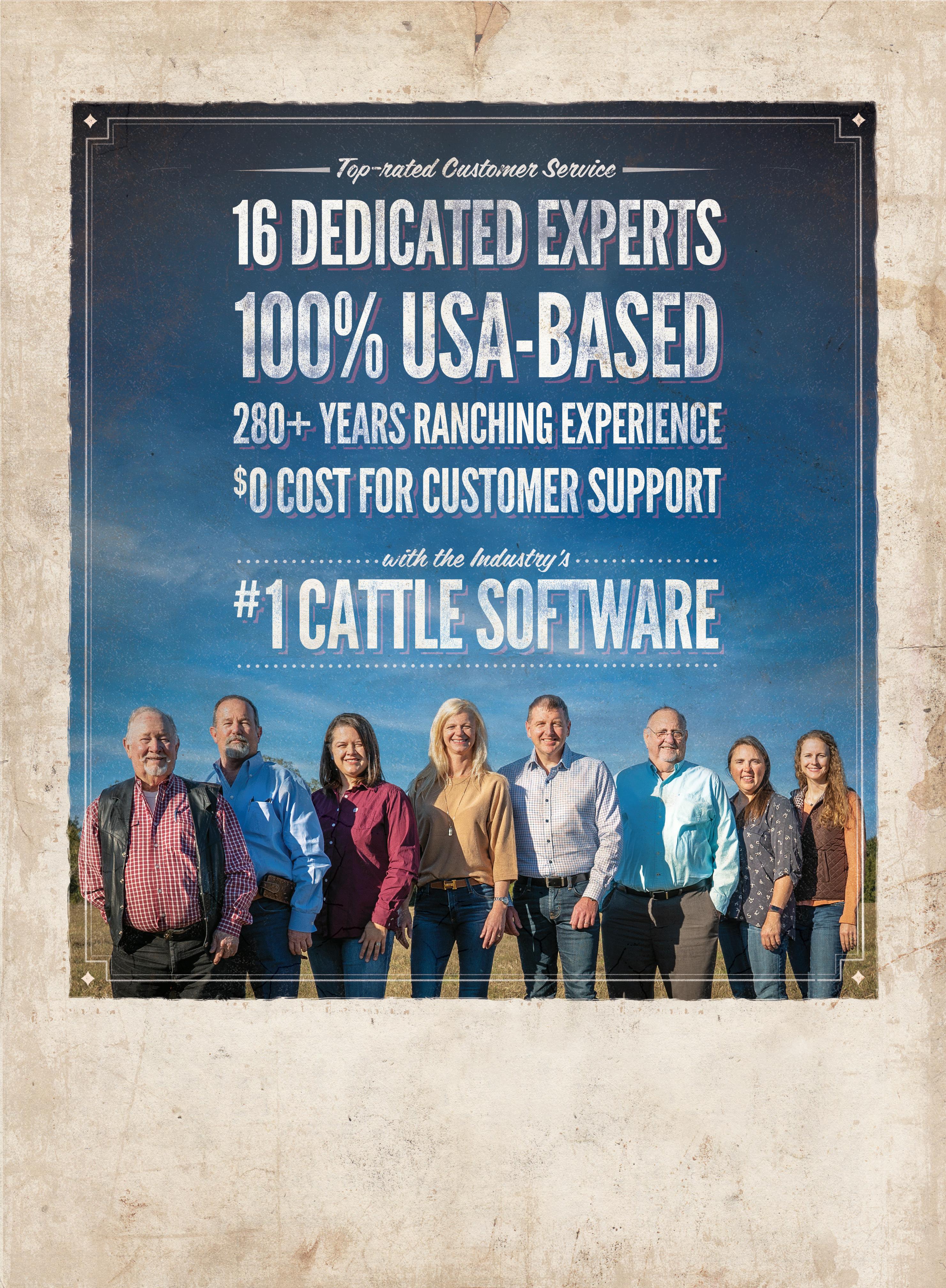


By Jena McRell
Asurprising number of hands were raised when attorney Garrett Couts posed the question, “How many of you have been approached or dealt with a renewable energy company?”
The audience, gathered March 22 for a School for Successful Ranching session during the 2024 Cattle Raisers Convention & Expo in Fort Worth, was scattered with lifted hands in response.
The informal poll reflected a growing trend across Texas and the entire U.S., as the race to secure renewable energy contracts intensifies.
Spurred by a myriad of factors, ranging from federal incentives and subsidies, statewide energy demands and corporate responsibility measures,
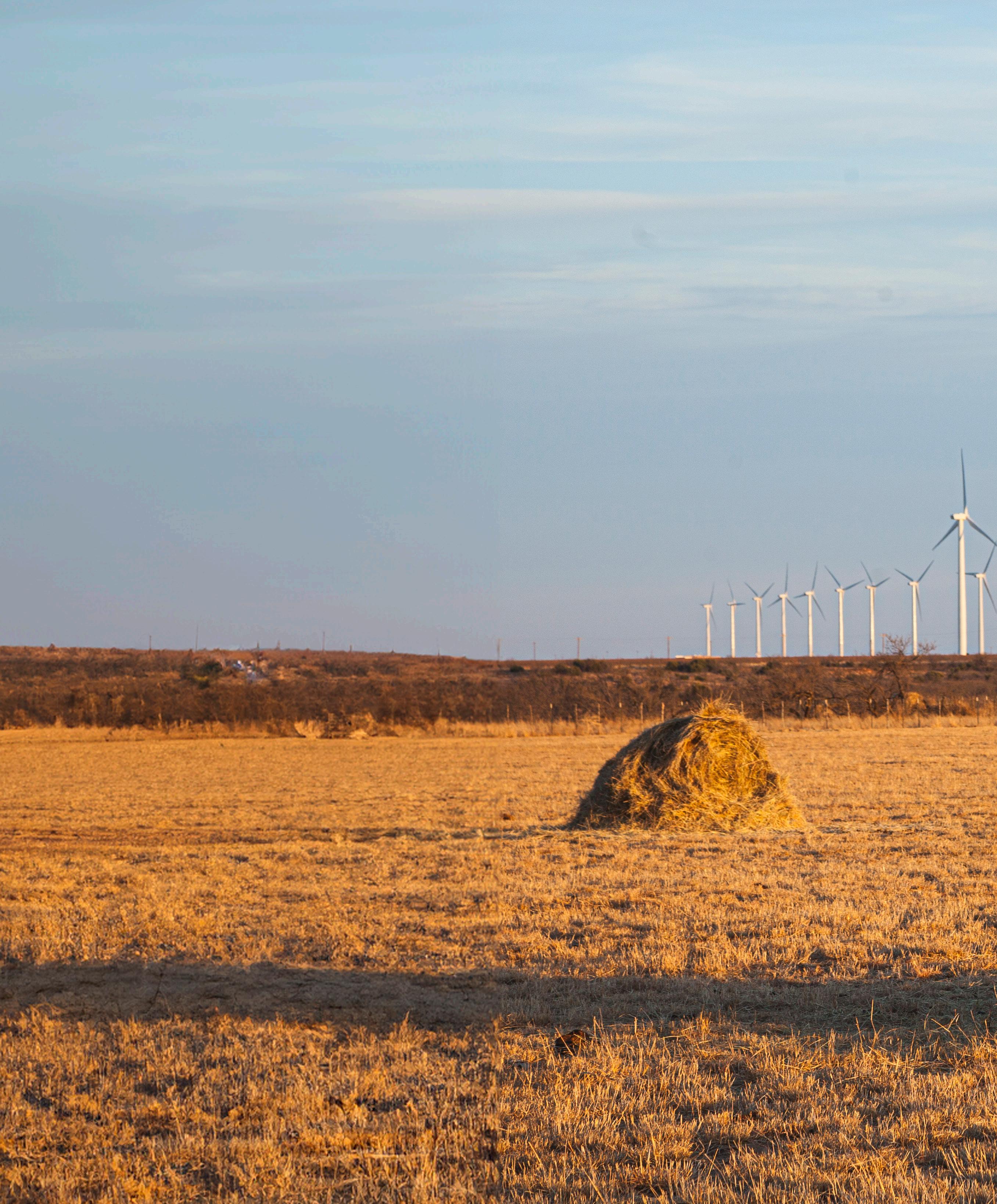
renewable energy leases and sourcing power from wind and solar mechanisms have grown rapidly in recent years. This means more energy companies are knocking on landowners’ doors.
Harkening back to the oil and gas rush, investors are looking to capitalize on the Lone Star state’s abundant resources — fresh air, sunshine and open space.
Throughout the past two decades, landowners and rural communities have seen both sides of the often-contentious issues. Discussions surrounding economic development, private property rights and the need to protect working lands are heard from varying points of view.
And the conversations are heating up fast.
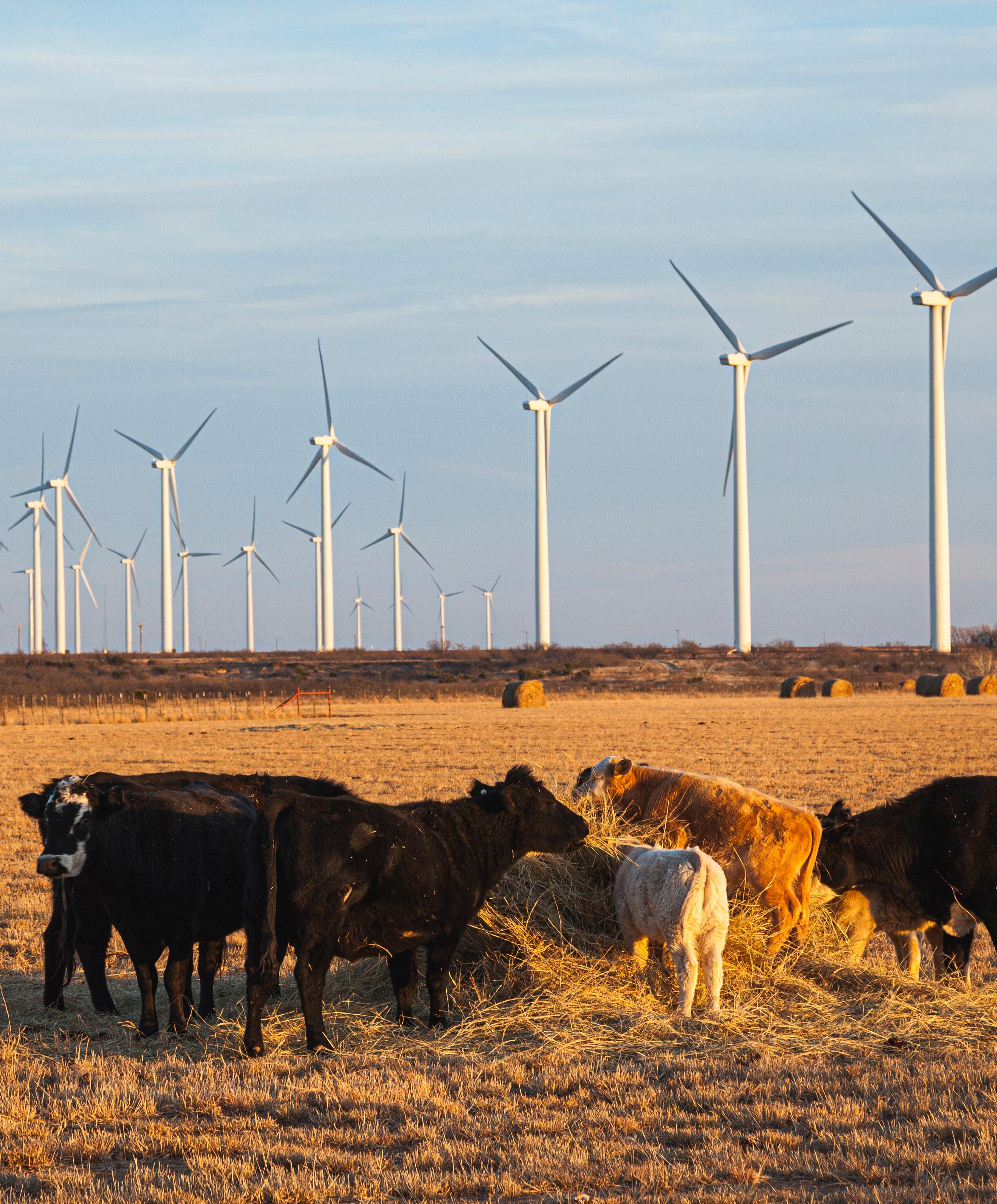

Bolstering green energy has been a priority in Texas since 1999 when the state’s renewable portfolio standards were established.
At the time, the goal was for renewable energy to generate 10,000 megawatts by 2025. That number has already surpassed — nearly quadrupled — by windsourced electricity alone.
As of January 2024, the Electric Reliability Council of Texas, or ERCOT, reports more than 38,800 megawatts of installed wind capacity — the most of any state in the nation, a position Texas has held for nearly 20 years.
For reference, ERCOT also says one megawatt of electricity can power about 200 Texas homes during periods of peak demand.
Based on the group’s forecasts for summer 2024, wind will account for about 25% of total generating capacity in Texas. Solar is around 13%. Combined, ERCOT says the two represent 38% of operational installed capacity.
The numbers paint a picture of how renewable sources impact the state’s power grid, which shoulders increasingly heavy demand loads.
But much of the story remains to be told.
Concerns over efficiency, transmission, dependability and longstanding impacts to the natural landscape remain top concerns debated among county commissioners, state legislators and rural neighbors alike.
“There’s little law related to wind and solar leases,” said Joe Will Ross, an attorney from San Angelo, during a Ranching 101 webinar hosted by Texas & Southwestern Cattle Raisers Association. “Everything we know about wind and solar leasing is derived from more than 120 years of oil and gas litigation.”
Nationwide, county governments are taking a stand against industrial wind and solar development. A recent USA TODAY report found about 15% of U.S. counties have effectively halted new utility-scale wind, solar, or both.
That’s not the case in Texas.
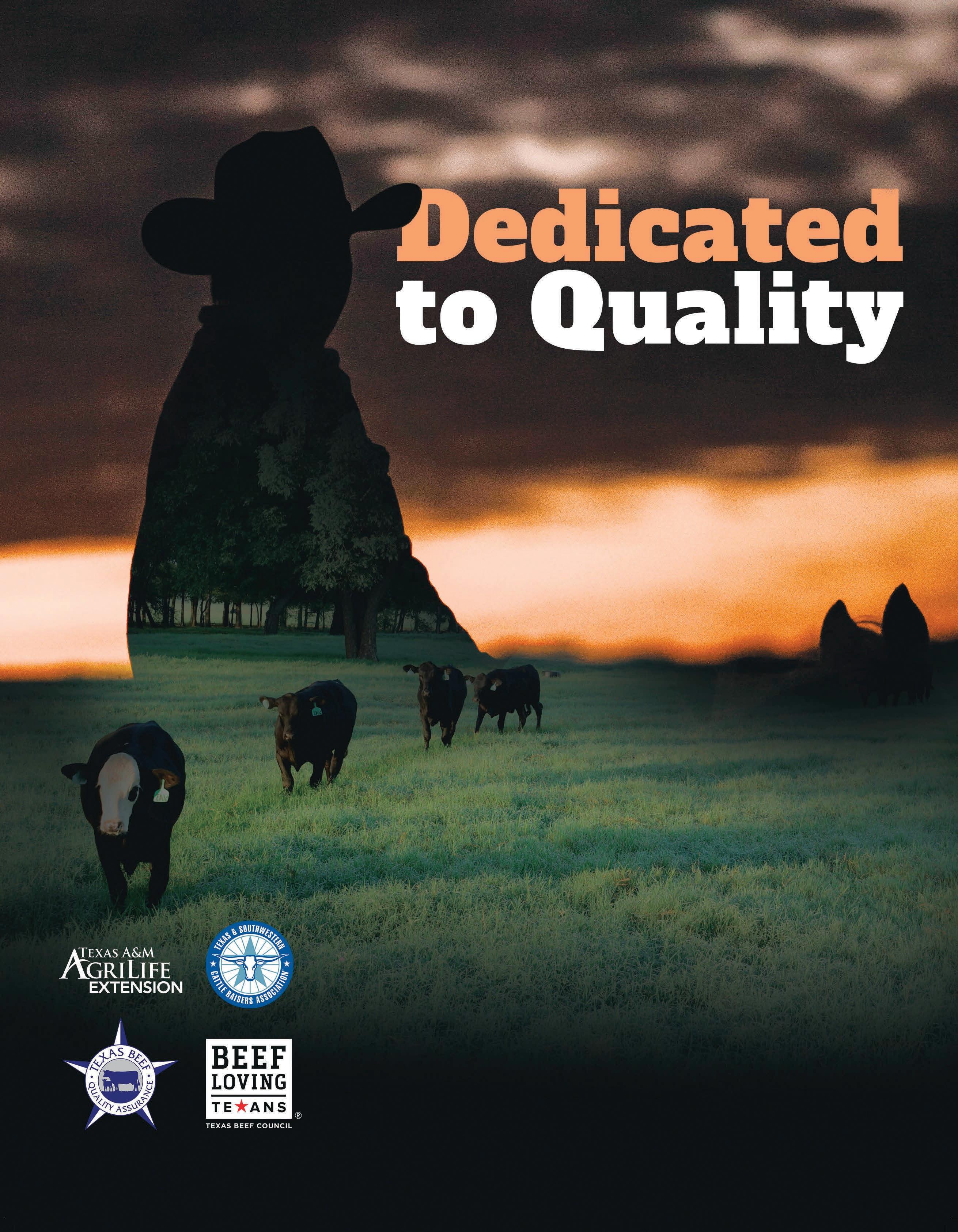





In August 2023, the attorney general’s office issued an opinion that county governments have no statutory authority to bar solar farm development. “To my knowledge, that’s about the only legal authority in the state of Texas on renewables,” Ross said.
Protecting private property rights and a landowner’s ability to act according to their wishes remain the top priorities. With the number of inquiries on the rise, it is likely many more property owners will be approached about considering a renewable energy lease.
“The attitude we’re seeing now from landowners is, ‘If my neighbor’s going to have the wind turbines and I have to look across the fence at them, I might as well be looking at them on my property and earning income’,” Ross said.
“Is it even worth our time?” That’s the No. 1 question Couts receives concerning renewable energy leases.
The answer comes down to finances, he said.
Understanding the current financial picture of the ranch is key, including line-items such as income generated per acre, payments for rented ground or other revenue streams.
“Money certainly isn’t everything, but it is the easiest way to decide whether you want to invest time on the lease or call it quits,” Couts said.
Each project is unique depending on the location and its potential to generate energy. Ross said the majority of solar deals are on a per-acre, per-year basis. He has seen them run anywhere from $50 to $850 per acre.
“It can be quite lucrative depending on how big your property is,” Ross said.
An April report from the Ag Economy Barometer, a collaboration between Purdue University and CME Group, showed a majority of 400-plus agricultural producers surveyed nationwide said they were offered more than $1,000 per acre for solar leasing. About 19% also said they had been actively engaged in discussions. That’s up significantly over year-ago levels of less than 10%.
Payments on wind-generated energy can vary depending on the contract. Ross said a landowner can be paid on the gross royalties from the turbines, a set, per-acre fee or minimum annual lumpsum payment plus royalties. It is important to be clear on the parameters of the specific lease being offered.
Couts said to consider the tax implications, too. Agriculture or open-space use exemptions are no longer applicable for acres under wind or solar leases.
“If that acreage gets taken for a wind or solar facility, that will most likely no longer be the primary use of that acreage, according to your local tax authority,” he said.
The change in tax burden can be negotiated into the final lease so that the renewable energy company helps cover the cost. Whether the cost is covered wholly, in part, or not at all, landowners should be aware of the status change for tax purposes.
Myriah Johnson, Ph.D., lives near Gainesville and serves as vice president of corporate sustainability for Farm Credit Services of America, a financial cooperative serving Iowa, Nebraska, South Dakota and Wyoming.
Johnson said ranchers and farmers, especially those in Iowa, are increasingly looking to incorporate solar projects to offset their own energy needs. USDA’s Rural Energy for America Program is a popular way to help finance renewable energy projects for agricultural producers and rural businesses.
On an industrial scale, Johnson said it is important to remember the power grid system involves a strategic, phased and balanced approach. Diversification is essential. When considering a renewable energy lease on a property, she reminded producers there are positives and negatives to weigh.
“What does it mean for you?” Johnson said. “You have to think about it in your specific context and goals of your operation.”
It’s also important to remember that a sustainable environment relies on economic factors, Johnson said. Whether it is a ranching operation or complex state-wide power grid, the payoff needs to be there.
“There are many ways to look at this,” she said. “And it is worth highlighting not just the environmental, but the economic sustainability side, too. If a lease is saving [or generating] money that allows the landowner to make the land payments or keep ranching, that improves economic sustainability.”
When considering a renewable energy lease, Couts and Ross agree that the first step is hiring an attorney. Never sign the first draft offer.
Legal experts with agriculture and renewable energy experience will help ensure private property rights are protected — and landowners receive the most value out of the project.
Realizing that hiring legal counsel is a significant expense, Ross said a reputable renewable energy company should be willing to cover most or all of the attorney fees. But it needs to be in writing.
“I’ve seen fees that are reimbursed up to $5,000 to $10,000,” Ross said. “In between those two numbers is probably a good starting spot as to what attorney fees could be.”
Couts said before he reviews a lease, he first calls the company to see if they are open to negotiations. “If they say, ‘The neighbors have already signed it, so we can’t negotiate custom terms with you,’ don’t sign that lease,” he advised.
Money certainly isn’t everything, but it is the easiest way to decide whether you want to invest time on the lease or call it quits.”
— Garrett Couts, Brady & Hamilton LLP

Because most of the population is unfamiliar with ranching and the demands it brings, having an advocate between a landowner and the renewable energy company is critical.
Couts said most of the representatives he has worked with are not from Texas, but are from places like Florida, California or even Europe.
“If you are going to let someone on your property for up to 50 or 60 years, you want to know that they are acting a certain way,” Couts said. “We add pages and pages of terms on these contracts.”
During his presentation to cattle raisers in Fort Worth, Couts shared slides outlining provisions to keep in mind when negotiating a lease.
First among them is fire protection. He recommended landowners require the renewable energy company to carry fire extinguishers at all times.
From large-scale construction to operation maintenance, company contractors and employees should be prepared for any fire threats. Also, Couts said to put in writing they are not allowed to start any fires on the property either.
Fencing, a huge investment by the landowner, is another item to address within a lease.
“You want them to be aware of what fencing standards you have on the ranch,” Couts said. “If they cut or damage your fence, what is the standard for them to replace or repair that fence?”
After signing a wind or solar lease, landowners can expect the project to evolve in three phases.
Option Period: 3 to 5 years
• Conduct studies to determine wind or solar energy potential
• Analyze power transmission lines
• Conduct an environmental study, gather soil biological data
• Determine plans, secure financing and complete title work
Construction Period: 9 to 18 months
• Project is finalized and construction begins
Operations Period: Varies according to lease terms
• Begins on the commercial operations date, when the wind or solar power is transmitted and sold
• Leases are generally 25 to 30 years, with options to renew that are either 5 to 10 years each
What happens at end of use?
Under Texas state law, the energy company is required to return the surface to its original condition upon the termination of the lease.
Generally, this can take up to 24 months. Most landowners will request roads constructed through the project be left as is.
Source: Joe Will Ross, San Angelo-based attorney

“Providing quality beef to our neighbors in need”

The Mission of Horns 4 Hope is to provide protein, in the form of quality ground beef, to food insecure families and individuals. Through donations, we work with food pantries and other entities to ensure distribution to those in need.

“And do not forget to do good and to share with others, for with such sacrifices God is pleased.” -- Hebrews 13:16

www.ho rn s4hop e .o rg
Identifying what livestock may graze the pastures in or surrounding the leased ground is also important. In a solar agreement, Ross recommended outlining the right to graze sheep or other small animals where the panels are located.
Clearly communicate the ranch’s biosecurity protocols, as well as what should happen if livestock are injured.
Access to roads is another big consideration.
“Almost every single lease you’ll see, we will give them the right to build roads anywhere they want,” Couts said. “In addition to that, almost every lease also gives access to use current roads.”
A landowner can sometimes advise on where the roads can be located, but sometimes they cannot. Whether they build the roads or use existing ones, Couts said the renewable energy company needs to be responsible for maintenance.
Water rights, which typically aren’t as complex as they would be in an oil-and-gas lease, should be outlined in a specific list of how water from the property can be used.
Couts also said a landowner should reinforce with the energy company that they want to be involved in the construction process. Wind turbines are especially complex when it comes to installation.
“The construction process for wind looks like a sciencefiction meteorite site,” he said. “Yes, they need to build their project, but you might want to have some controls over that.”
Other noteworthy restrictions might include guests allowed on the property, alcohol and drug bans, and speed limit enforcement. Additional legal considerations include determining the venue should a court case arise, or stipulations for what happens if the energy company sells out or ends the lease prematurely.
“If they are not willing to put it in ink, they are not willing to follow it — plain and simple,” Couts said. “You want to make sure whatever you need is in the lease.”
As much as energy companies may stress urgency, Couts reminded landowners they hold the keys. Slow down. Ask questions. Negotiate the needed terms, and make sure it’s clear where both parties stand.
He said there are two deadlines for renewable companies, which are the interconnection date, when they must plug power into the Texas grid, and the deadend financing date.
“If they are coming at you saying this is a fire sale, you as the landowner get to decide the timeline, not them.” T C
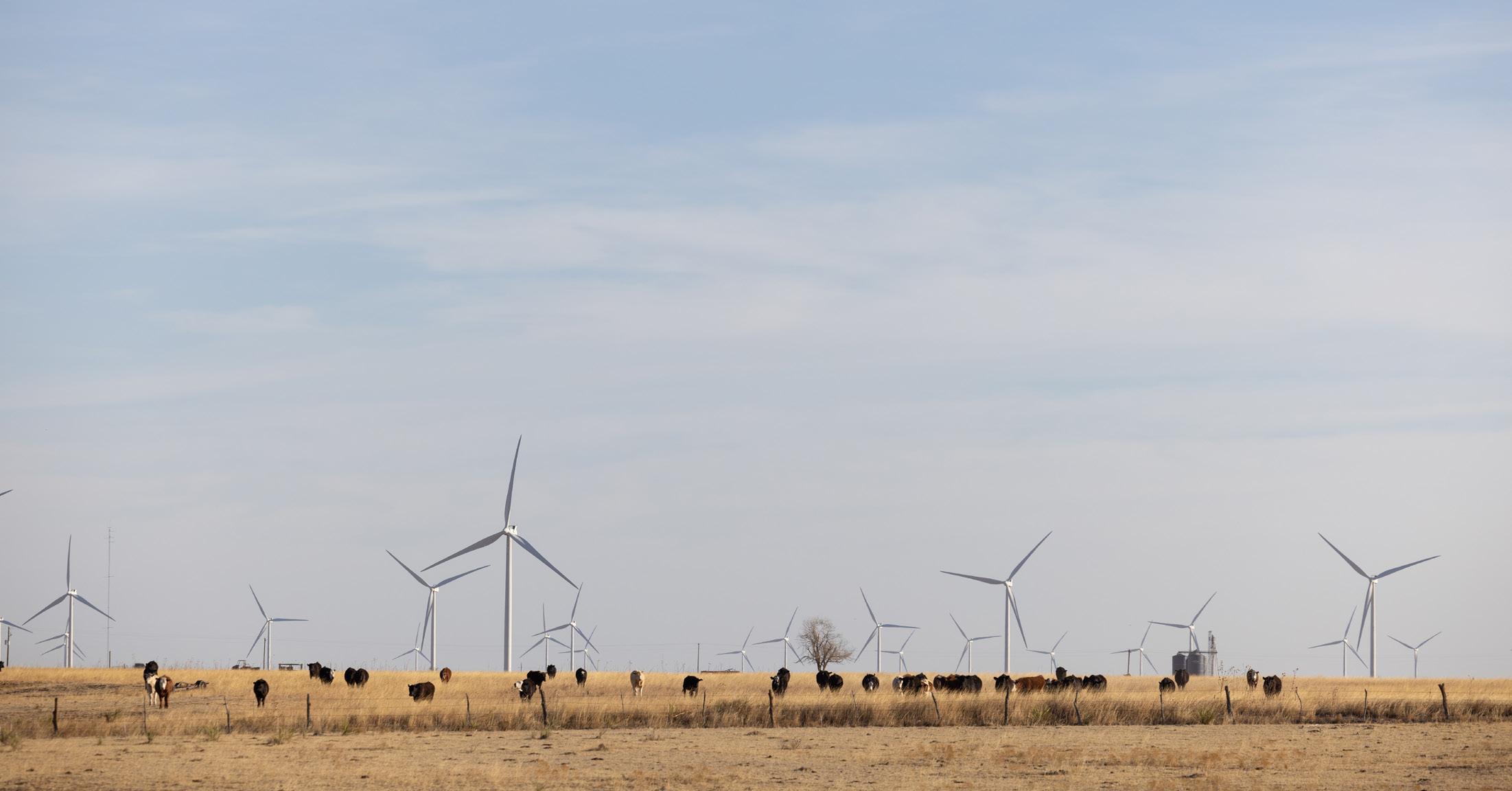
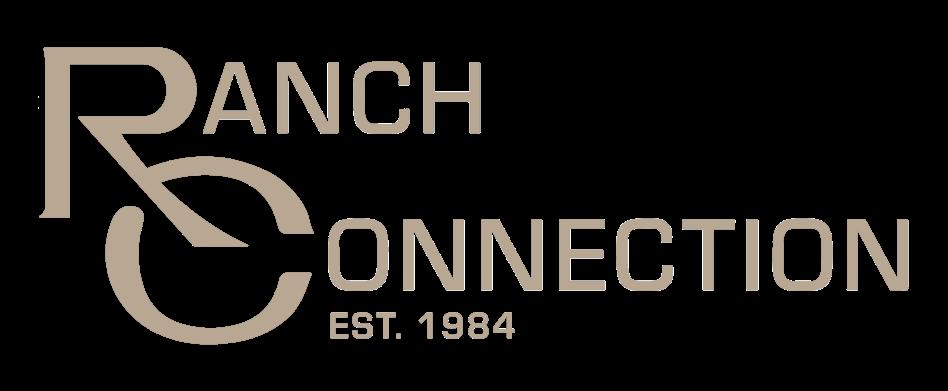



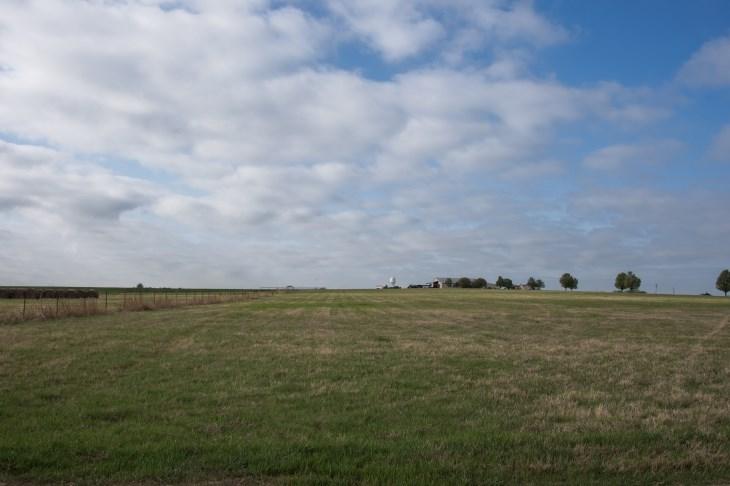

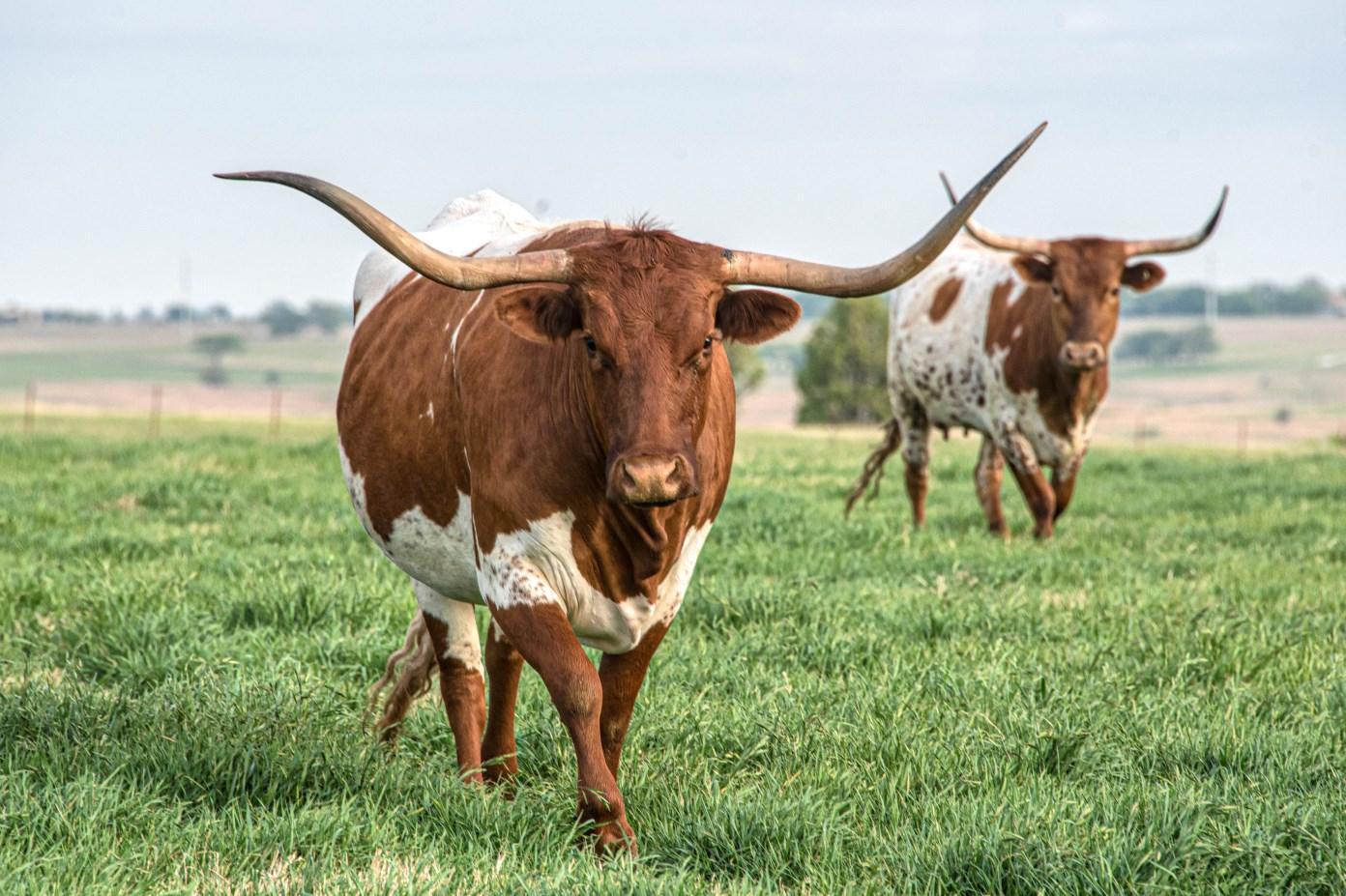





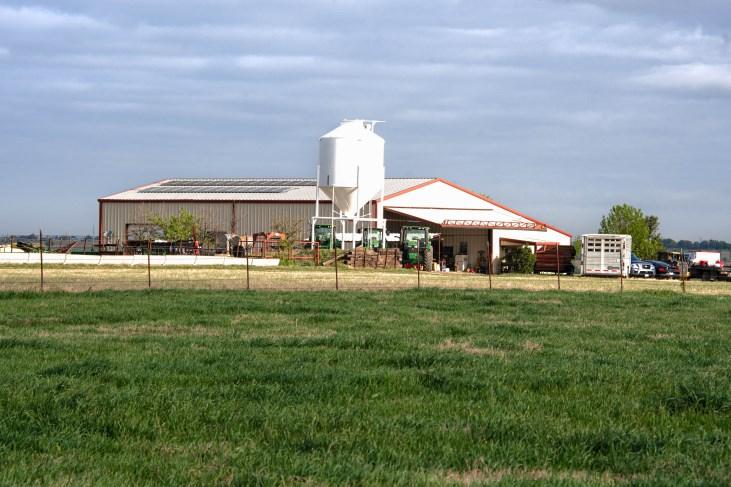




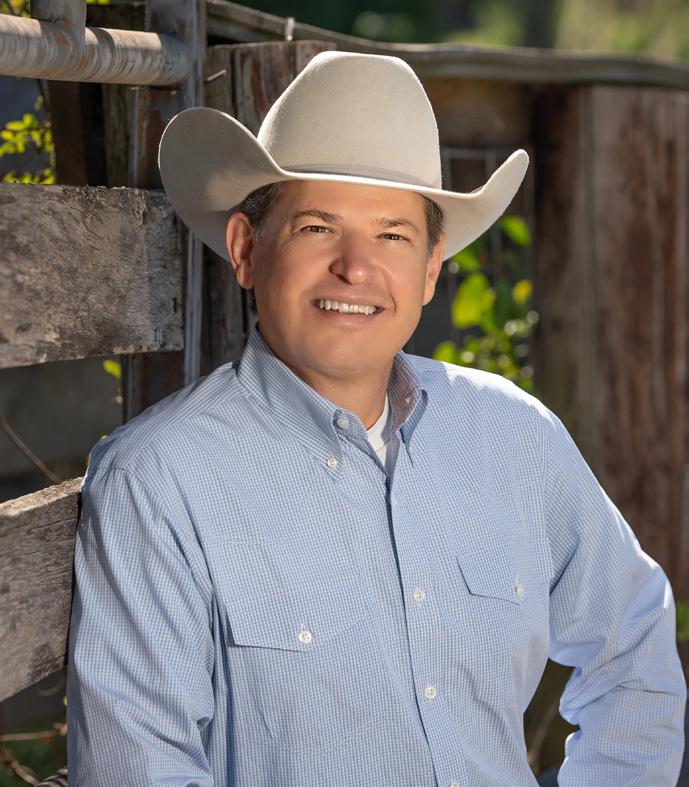
By Carl Ray Polk Jr., Texas & Southwestern Cattle Raisers Association president
Community embodies a sense of unity among those who share common values and goals.
From the earliest days of Texas & Southwestern Cattle Raisers Association, a spirit of community was evident. In 1877, the association was founded by 40 cattlemen in Graham who felt called to organize a way to protect land and livestock in the Southwest. As they gathered, they sought a solution for common threats.
Today, the same responsibility is evident, especially in the wake of great loss.
In the months following historic wildfires in the Texas Panhandle and Western Oklahoma, I have witnessed the power of people coming together in the greatest times of need. From donations of hay, fence, feed and other supplies, to financial contributions through the TSCRA Disaster Relief Fund, we have supported our own.
Families and communities are continuing to rebuild from significant damage caused by the largest wildfire in Texas history. Many recovery efforts are beginning from the ground up, and there will be countless long days ahead. But our fellow ranchers and friends are not alone — and there is much reason for hope.
As of mid-May, more than $900,000 in donations from the TSCRA Disaster Relief Fund have been distributed to ranching families affected by the wildfires, and, by the time you’ve read this column, much more will have been distributed.
We plan to continue distributing funding to those in need for as long as it takes to help them to rebuild.
In last month’s publication, we had the opportunity to recognize supporters who donated to the TSCRA Disaster Relief Fund. In the weeks since, the outpouring of generosity has continued.
On May 6, the Four Sixes Ranch, Taylor Sheridan and Ryan Bingham, in partnership with Hotel Drover, brought together businesses and individuals to give back to victims of wildfire through the 6666 Smokehouse Creek and Windy Deuce Wildfire Benefit.
Raising $1.5 million to benefit the TSCRA Disaster Relief Fund, the event showcased tremendous support for our communities.
While the financial gift was certainly inspiring, there was an even greater sense of hope in the room that evening. People believe in cattle raisers. They believe in what we do and why we do it.
As we all know too well, this won’t be the last disaster we face. There will be more wildfires. There will be droughts. There will be regulations. There will be odds stacked against us.
This isn’t simply a hard time. Ranching is a hard career.
Our mission at Texas & Southwestern Cattle Raisers Association is to advance and protect the stewards of land and livestock in the Southwest. A mission that would not be possible without each of you.
Words cannot appropriately express our gratitude, but it is a great honor to represent each of you in this community of cattle raisers. T C
Rep. Ken King, District 88, has served in the Texas House of Representatives since January 2013.
After redistricting passed during the 87th Legislative Session, his district expanded from 17 to 19 counties in the Panhandle and South Plains.
He currently serves as chairman of the House Licensing and Procedures Committee, and is a member of the House Public Education Committee. He also serves on the House Research Organization Board of Directors, which provides unbiased information regarding each bill debated on the House floor.
in the House including: the Rural Caucus, the Republican Caucus, the Energy Caucus, the Texas Legislative Manufacturing Caucus and the Sportsman Caucus.
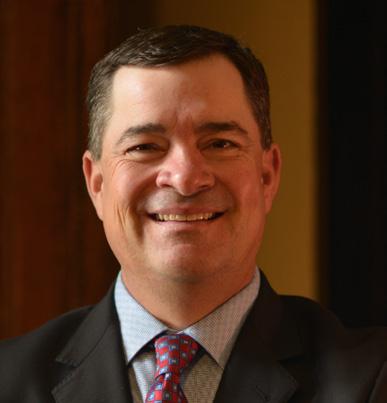
Rep. Ken King
King was also appointed by Speaker Dade Phelan to chair the Investigative Committee on the Panhandle Wildfires. In addition to these committees, King is also a member of various caucuses
Prior to being elected to the Texas Legislature, King served more than five years on the board for Canadian Independent School District, presiding as president for half of that tenure.
He was a member of the Hemphill County Appraisal District’s Executive Board for more than four years and served as board chairman for more than three years.
King was born and raised in Canadian. He and his wife, Robin, have two grown children. He is president of Black Gold Pump and Supply Inc. They are active members of the First United Methodist Church in Canadian and the KK125 Ovarian Cancer Research Foundation. T C

6666 Smokehouse Creek and Windy Deuce Fire Relief Benefit raises $1.5 million for the TSCRA Disaster Relief Fund.
Story by Jaclyn Roberts Parrish Photos by Andrew Devereaux
Once among the largest livestock markets in the world, the Fort Worth Stockyards today represent a glimpse into the historic culture that built the West.
Its brick-paved streets, wooden corrals and daily cattle drives are home to shopping, dining and entertainment venues, many of which are well-preserved, making the heart of Cowtown the perfect backdrop for an evening intended to keep Western culture very much alive.
On May 6, more than 200 guests gathered in the historic Fort Worth stockyards to support ranchers impacted by record-breaking wildfires in the Texas Panhandle and Western Oklahoma. The 6666 Smokehouse Creek and Windy Deuce Fire Relief Benefit was organized in response to more than 1.2 million acres of land burned in catastrophic wildfires in late February.
The fires left behind great loss. Communities lost their homes. Ranchers lost livestock. Fencing was scorched. Hay and feed were gone.
While ranchers began to slowly rebuild, the reality looked bleak for some: there was no coming back. This benefit sought to change that.
The 6666 Smokehouse Creek and Windy Deuce Fire Relief Benefit was co-hosted by Four Sixes Ranch owner, Taylor Sheridan, and Ryan Bingham, in partnership with Hotel Drover.
Guests included actors from the Yellowstone series, Fort Worth elites and ranchers who joined for a cocktail hour, seated dinner, live auction led by Taylor Sheridan and music from Ryan Bingham.
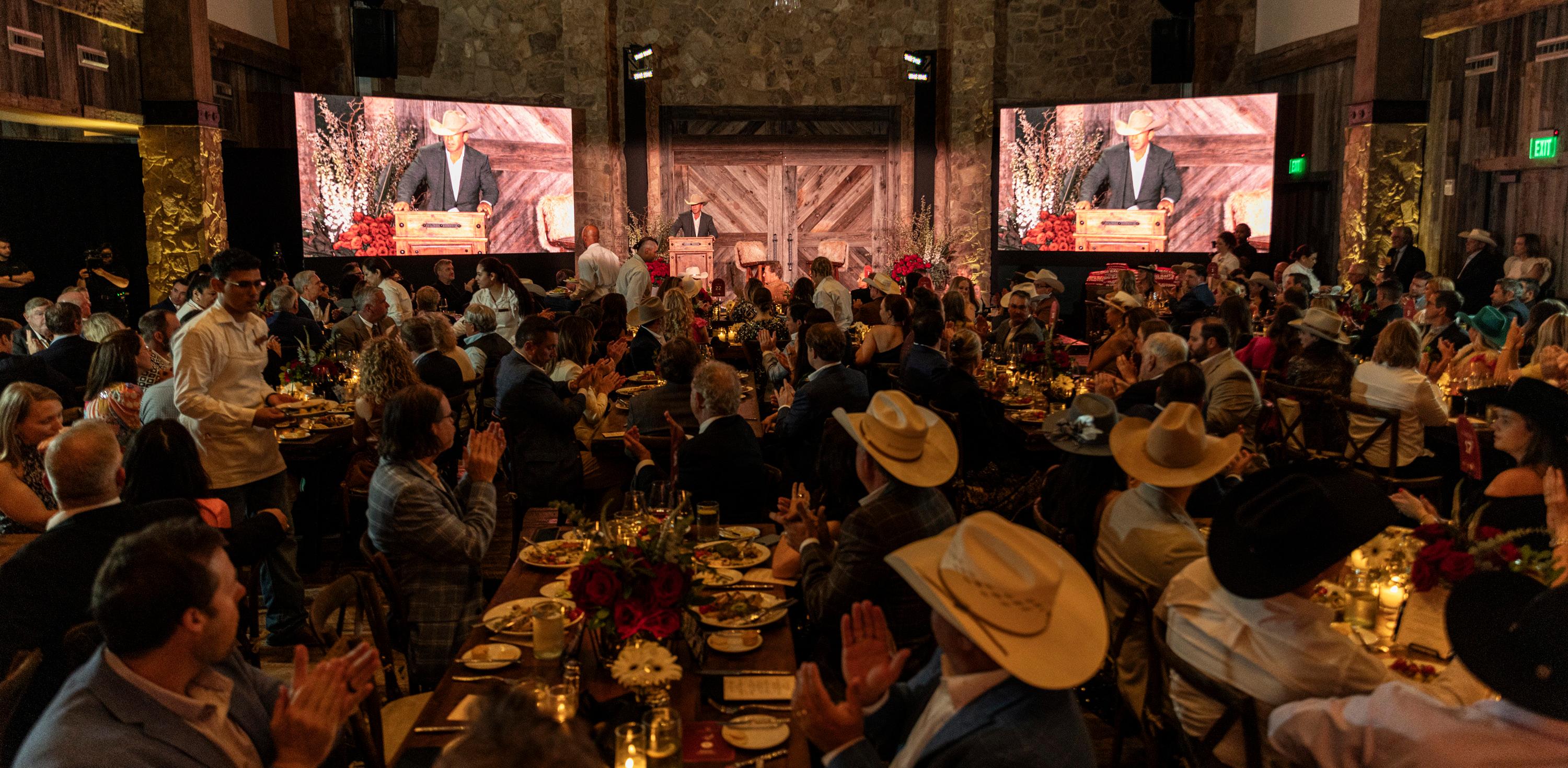
But the heart of the event was the wildfire victims themselves. Through a generous donation from Ariat, 10 families impacted by the wildfires were in attendance.
“Thank you for reminding us there is always hope no matter how dark it may get,” said Judy Cambern, owner of Cambern Cattle Co. and a Smokehouse Creek Fire victim. “We're hanging on, and we're looking forward with great hope for things yet to come.”
Ariat was joined by other presenting sponsors: Bingham’s Bourbon, Cinch, Encore Global, Hotel Drover, J5 Brands, Kubota and Tito’s Vodka.
“We felt it was important to stand alongside Taylor Sheridan and his Four Sixes Ranch to support this benefit and the victims of the recent fires, many of whom have been part of the Ariat family for over three decades,” said Susan Alcala, Ariat vice president for partnership marketing.
The evening raised a collective $1.5 million for the TSCRA Disaster Relief Fund.
While the efforts of the benefit were commendable, there was a clear message: more work is ahead.
Texas & Southwestern Cattle Raisers Association President Carl Ray Polk Jr. emphasized the need to identify and deliver aid to victims quickly. This came alongside an announcement that $900,000 in funding from the association’s disaster relief fund was already on its way to ranchers.
“The funds raised through the 6666 Smokehouse Creek and Windy Deuce Fire Relief Benefit will directly benefit ranchers and landowners in these rural communities,” Polk said. “We are committed to helping as long as it takes them to rebuild and are exceptionally grateful for the support of Taylor Sheridan and Ryan Bingham, along with the partnerships and sponsors standing alongside us in this effort.”
The funding raised by the event extended the reach of the TSCRA Disaster Relief Fund, which, at the time of press, represented a collective $2.4 million.
In addition to financial contributions, donated supplies were provided to ranchers and wildfire victims.
The 6666 Smokehouse Creek and Windy Deuce Fire Relief Benefit also featured remarks from Rep. Ken King, who was appointed chair of the Investigative Committee on the Panhandle Wildfires. He gave an update on recent hearings held in the Panhandle that can impact policy at the state legislature in 2025.
The hearings resulted in a better understanding of the cause of the wildfires, steps to prevent such efforts and opportunities to better respond to future disasters.

Rep. Ken King discusses the impacts of the February wildfires and sheds light on the state’s response strategies to improve disaster preparedness in the future.
“One thing we learned from the wildfires is that our volunteer fire departments are fully underfunded, understaffed and underequipped,” King said. “We need more funding focused on departments with 50 members or less, and we have to get the equipment in their hands."
Texas & Southwestern Cattle Raisers Association Director and Four Sixes Ranch General Manager Joe Leathers also provided remarks during the benefit, noting the impact such devastating loss has had on communities.
Leathers, who was navigating impacts of wildfire on the historic Four Sixes Ranch himself, noted that the loss is difficult to put in words.
“Navigating the aftermath has been incredibly challenging,” Leathers said. “These fires have severely damaged the cattle and ranching industries, leading to long-term economic impacts, which may prevent some from returning to ranching.”
Yet with financial aid, a spirit of support in championing change, and belief in ranchers on the ground, Polk said the event left much reason for hope.
“This won’t be the last disaster we face,” Polk said. “We have more battles ahead, and the cattle community is resilient.”
Texas & Southwestern Cattle Raisers Association encourages victims of these fires to apply for funding at tscra.org/disasterreliefapp. T C
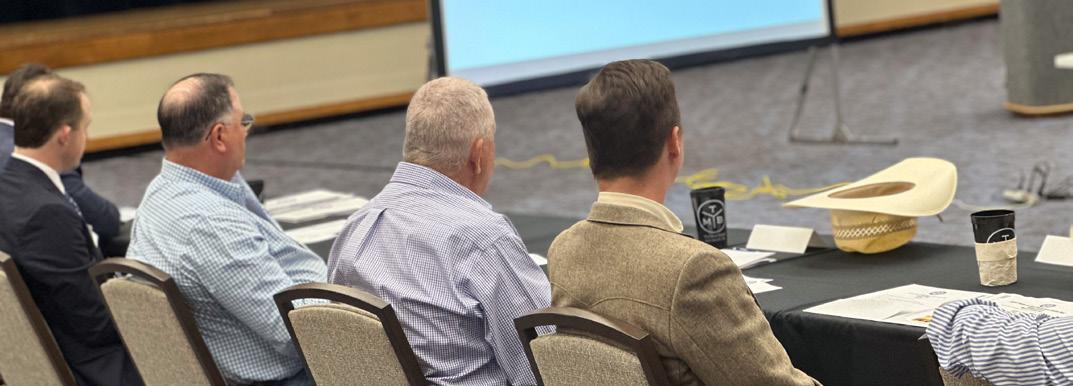
Texas & Southwestern Cattle Raisers Association held its 2024 Policy Committee Meetings May 6-8 in Fort Worth. More than 150 committee members were in attendance throughout the event.
The membership development committee kicked off the meeting to discuss association promotion, recruitment and retention strategies to ensure the vitality and growth of the Texas & Southwestern Cattle Raisers Association membership base.
In addition, four policy committees convened to address critical issues facing the industry. These committees looked into key areas of cattle health, marketing, natural resources and property rights.
These meetings provided a platform for committee members to hear from experts in their fields, approve new and expiring policies and develop policy guiding the association’s priorities in preparation for the 89th Texas Legislative Session.
Hannah Boyd, originally from Goliad, joined Texas & Southwestern Cattle Raisers Association as an event coordinator May 13, following the successful completion of her spring internship with the organization.
Boyd’s deep-rooted connection to agriculture has fueled her passion for the industry from a young age. Growing up immersed in ranching has provided her with a distinct perspective and valuable insights into the challenges and opportunities faced by cattle raisers. She graduated from Texas A&M University in December 2023 with a bachelor’s degree in agricultural economics.
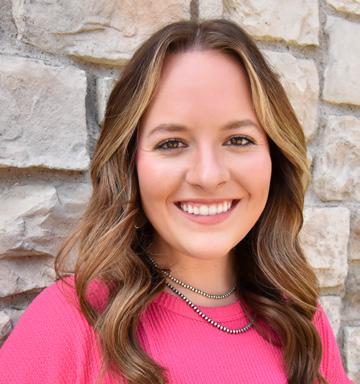
Hannah Boyd
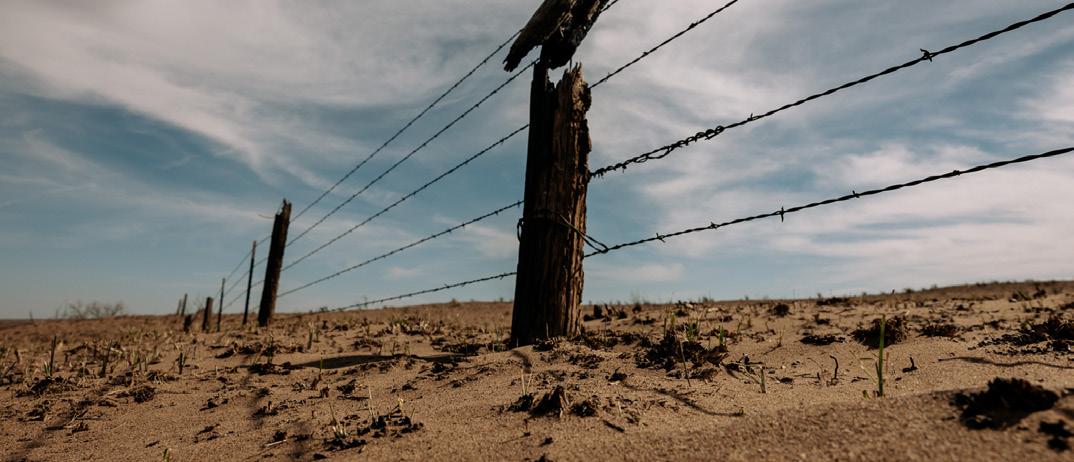
In May, Texas & Southwestern Cattle Raisers Association announced the distribution of $900,000 in financial assistance through the TSCRA Disaster Relief Fund. This signifies the first of ongoing financial assistance going directly to cattle raisers impacted by the largest wildfire in Texas history.
The distribution of funds comes after thousands of individuals and businesses came together to generously donate to the TSCRA Disaster Relief Fund in support of cattle raisers facing staggering losses.
Recent data from Texas A&M AgriLife Extension Service estimates the region faced agricultural losses totaling $123 million. This includes losses of livestock, equipment, fencing, hay, feed and more.
The TSCRA Disaster Relief Fund continues to accept applications for financial aid from landowners and cattle raisers in disaster-declared counties in Texas and Oklahoma impacted by the Smokehouse Creek, Windy Deuce and other catastrophic wildfires this spring.
Individuals are encouraged to apply for aid online at tscra.org/disasterreliefapp.
In early May, U.S. Sen. Ted Cruz and U.S. Rep. Ronny Jackson introduced legislation under a farm bill proposal to extend aid through the Livestock Indemnity Program to include losses of unborn animals due to weatherrelated disasters.
Texas & Southwestern Cattle Raisers Association President Carl Ray Polk Jr. issued the following statement in support of the proposal:
“The Livestock Indemnity Program is a helpful resource for ranchers recovering from natural disasters, but its effectiveness is limited by a gap in the program. The LIP fails to compensate ranchers for the loss of their calf crop.
“In the Texas Panhandle, the devastating effects of this gap are particularly glaring in the wake of the recent wildfires. This legislation will help the LIP better reflect the true losses faced by ranchers and shorten the time needed to recover from devastating events.”
Texas & Southwestern Cattle Raisers Association and Texas Grazing Lands Coalition announced a new partnership of the Texas Environmental Stewardship Award Program in May.
Texas ESAP is a state-based award that recognizes outstanding stewardship practices and conservation achievements of Texas cattle raisers and land managers. Texas & Southwestern Cattle Raisers Association opened the first-ever application period May 1 to July 1 for the 2025 Texas ESAP.
“Texas cattle raisers are instrumental in caring for our open space, and the Texas Environmental Stewardship Award Program provides a prestigious platform to recognize these efforts,” said Texas & Southwestern Cattle Raisers Association First Vice President and Texas Grazing Lands Coalition Chair Stephen Diebel.
The Texas Environmental Stewardship Award recipient will be announced at the Cattle Raisers Convention & Expo in April 2025. The winner will go on to compete for the Region IV Environmental Stewardship Award title and, if awarded, the national title.
Texas & Southwestern Cattle Raisers Association is accepting applications for the 2025 National Cattlemen’s Beef Association Young Cattlemen’s Conference.
Representatives from across the U.S attend the 8-day program, set for June 2025, focused on developing young leaders in the beef industry.
Attendees will begin the program in Denver, traveling to Nebraska, Ohio and Washington, D.C. Producers and professionals will better their understanding of all segments of the industry while expanding their professional network.
Texas & Southwestern Cattle Raisers Association will select up to three applicants to attend the summer 2025 conference. Applicants must be 25-to-50years-old active, good standing members of Texas & Southwestern Cattle Raisers Association and National Cattlemen’s Beef Association.
Applications are due Aug. 1. Interviews will be held Sept. 21 in Boerne during the TSCRA Young Producer Clay Shoot. Learn more about the program and how to apply at tscra.org. T C
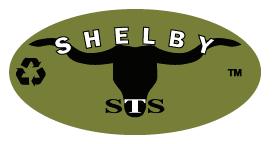



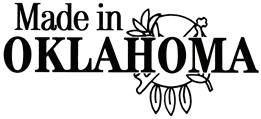
Joe Freeman, of Llano, was elected May 7 to serve on the Texas State Soil and Water Conservation Board. He represents area 2, which consists of 50 counties in the western to trans-Pecos region, encompassing, 43 Soil and Water Conservation Districts.
“I am honored to be elected to serve on Texas Soil and Water Conservation Board to continue the admirable work of the agency and its mission to encourage the wise and productive use of natural resources across the state,” Freeman said.

He has been a director on the Llano Soil and Water Conservation District since 2015, where he currently serves as secretary.
In other areas of leadership, Freeman currently serves as founder and president of the Cowboy Christmas for Kids Charity; and is a member of Texas & Southwestern Cattle Raisers Association, among other organizations and leadership capacities.
Freeman is a fifth-generation rancher who runs a cow-calf operation in Llano County. He and his wife of 46 years, Carol, have two children, Ross and Sarah. He also has four grandchildren.
Established in 1939, the Texas State Soil and Water Conservation Board administers Texas’ soil and water conservation law and delivers coordinated natural resource conservation programs through the State’s 216 soil and water conservation districts.
Additionally, the board is the lead agency for planning, implementing and managing programs for preventing and abating agricultural and silvicultural nonpoint sources of water pollution.
Texas State Soil and Water Conservation Board also works to ensure that the state’s network of 2,000 flood control dams are protecting lives and property by providing operation, maintenance, and structural repair grants to local government sponsors.
The board consists of five elected members and two gubernatorial appointees who must be actively engaged in farming or ranching. The five board members are chosen in a convention type election by Soil and Water Conservation District directors in the area in which the member represents.
The U.S. Roundtable for Sustainable Beef recently concluded its 2024 General Assembly Meeting in St. Louis, Missouri, signifying a noteworthy achievement in the organization’s dedication to promoting sustainability within the beef industry.
A key outcome of the meeting was the election of new officers and members to the board directors.
The newly elected officers, each serving one-year terms, are as follows: Chair Mike Williams, California Cattlemen’s Association; Chair-elect Nancy Labbe, The Nature Conservancy; and Secretary/Treasurer Scott Anderson, CRI Feeders.
Chad Ellis, Partnership of Rangeland Trusts, serves as the immediate past chair.
In addition to the officers, the U.S. Roundtable for Sustainable Beef welcomed new member organizations and delegates to its 2024 Board of Directors, ensuring broad industry representation.
• Allied Industry
• Primary: Myriah Johnson, Farm Credit Services of America
• Appointed: Jessica Gilreath, Elanco Animal Health
• Packer/Processor
• Primary: Paula Alexander, Tyson Foods
• Appointed: PJ Newcomb, Golden State Foods
• Retail/Foodservice
• Primary: Belinda Richardson, McDonald’s
• Appointed: Michelle Zackin, Walmart
• Civil Society
• Primary: Nancy Labbe, The Nature Conservancy
• Appointed: Rob Manes, The Nature Conservancy
These newly elected leaders will play a pivotal role in driving organizational progress and promoting continuous improvement throughout the beef value chain. Standing board of directors include:
• Allied Industry
• Primary: Tim Hardman, Fulton Marketing Group
• Appointed: Lance Zimmerman, Rabobank North America
• Packer/Processor
• Primary: Brooke Davis, Lopez Foods
• Appointed: Rob Cannell, National Beef
• Producer
• Primary: Mike Williams, California Cattlemen’s Association
• Appointed: Gene Lollis, Florida Cattlemen’s Association
• Producer
• Clayton Huseman, Kansas Livestock Association
• Tom McDonald, Texas Cattle Feeders Association
• Retail/Foodservice
• Primary: Bruce Davis, Sysco
• Appointed: Jessica Willingham, Sysco
• Civil Society
• Primary: Hugh Aljoe, Noble Research Institute
• Appointed: Jeff Goodwin, Texas A&M Center for Grazinglands and Ranch Management
Clint Rusk, an experienced professor and administrator at several of the nation’s top agricultural universities, as well as a nationally recognized leader of a top cattle breeding association, has been named executive director of Texas Tech University’s newly launched Ranch Management Program, according to officials at Texas Tech’s Davis College of Agricultural Sciences & Natural Resources. He officially stepped into his new role on May 20.
“The ranching way of life has been in my blood since 1960, when my mom and dad purchased the ranch we grew up on near Sun City, Kansas,” Rusk said. “I love meeting and working with ranchers. I am motivated by students and enjoy helping them achieve their goals.”
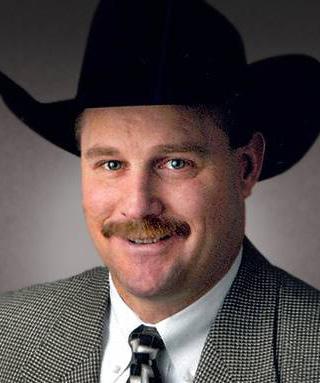
Rusk will be based in Texas Tech’s Department of Natural Resources Management, where he will focus on recruiting top students into the master’s level graduate program in ranch management, as well as developing partnerships with stakeholders for experiential, immersive, on-ranch internship opportunities.
According to Department Chair Warren Conway, Davis College’s recently established non-thesis graduate program centers on providing participating students with a world-class education in the theories, methods, and boots-on-the-ground ranch management.
Focused on bridging the disciplines of natural resources management, economics, and livestock and animal sciences, he said the new academic opportunity blends classroom training with on-ranch experiences and internships to produce highly qualified and experienced ranch managers.
Rusk joins Texas Tech following his service as executive vice president of the American-International
Charolais Association in Kansas City, Missouri.
He received his bachelor’s degree from Kansas State University in 1980 and returned to the family ranch for five years following graduation. He then shifted to Fort Collins, Colorado, to manage the purebred cattle unit at Colorado State University.
In 1987, Rusk added to his university duties, taking on coaching Colorado State’s Livestock Judging Team. He received his master’s degree and doctorate from Colorado State.
Following his graduate program, he joined Purdue University, serving as a youth livestock specialist for 13 years. In 2009, he was named professor and head of South Dakota State University’s Department of Animal & Range Sciences. In 2012, he was named head of Oklahoma State University’s Department of Animal & Food Sciences, a position he held for a decade.
Oklahoma CattleWoman Ruth Coffey has been named American National CattleWomen President.
Coffey, of Spring, Oklahoma, was named to the position Jan. 30 during the 2024 Cattle Industry Convention in Orlando, Florida. Throughout the next year, Coffey will support the initiatives of the organization along with CattleWomen President Elect Nikki Weston, of Utah, and Vice President Casey Matzke, of Texas.
Coffey, her husband, Chuck, and their children, run the Double C Cattle Co., a fifth-generation cowcalf operation. In 2019, the Coffeys were awarded the Oklahoma Leopold Conservation Award, and in 2020 they were the recipients of the National Cattlemen’s Beef Association Environmental Stewardship Award.
Coffey enjoys spending time outdoors with her horses and grandchildren. She is most looking forward to learning about the ways in which her fellow cattlewomen raise cattle in their regions and getting to study the different sectors of the U.S. cattle industry.
The 70th annual Texas A&M Beef Cattle Short Course Aug. 5-7 in Bryan-College Station is open for registration. The event is hosted by the Texas A&M AgriLife Extension Service and the Texas A&M College of Agriculture and Life Sciences Department of Animal Science.
The event is the largest beef cattle educational event in the world, with an expected crowd of 2,000 producers attending, said Jason Cleere, Ph.D., conference coordinator and AgriLife Extension statewide beef cattle specialist in the Department of Animal Science, BryanCollege Station.
From the Cattleman’s College to the Texas Aggie Prime Rib Dinner, the nationally and internationally recognized three-day event offers producers more than 50 hours
Join or renew your membership today.
Member benefits include the support of TSCRA Special Rangers, government relations advocacy, educational programs, networking and social events, member-only discounts, The Cattleman magazine and phone app, and insurance services.

To learn more about membership, scan the code above or visit TSCRA.org.
Please thank the representatives from these companies for their support of TSCRA programs.
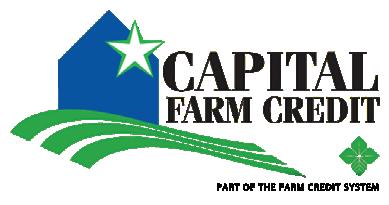
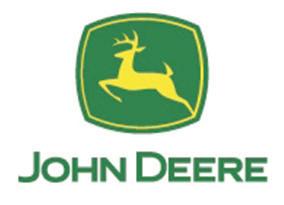


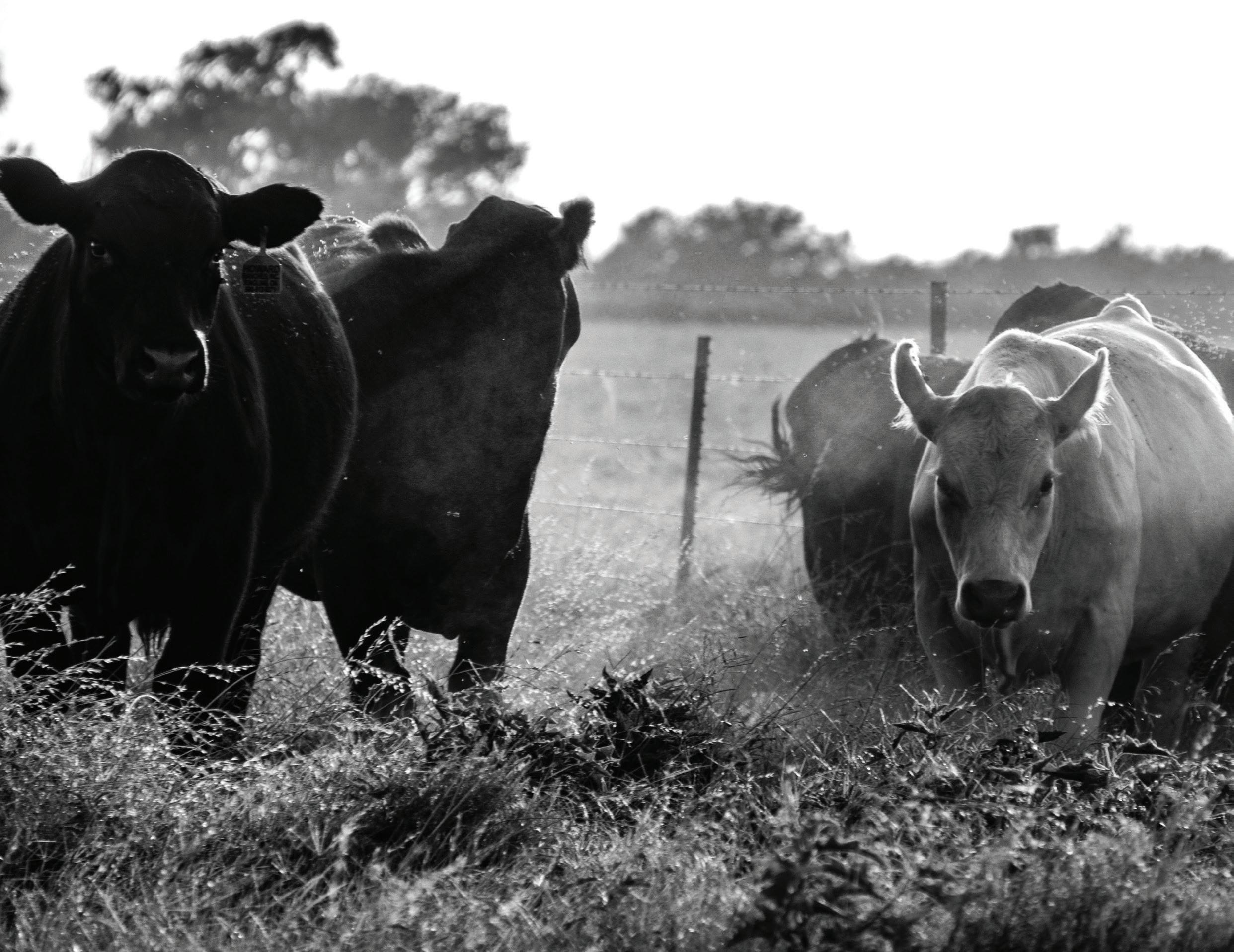
TSCRA members — ask about discounts from the following partners!
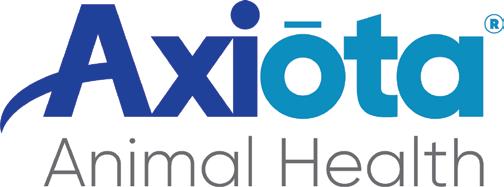







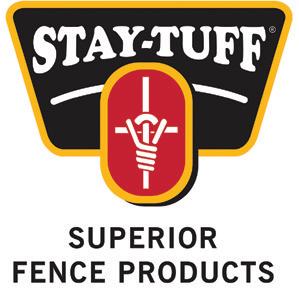
of training across 20 courses covering basic ranching practices, new technologies and hot topics.
It also offers attendees access to more than 150 agriculture-related businesses and trade show exhibitors and continuing education units for both pesticide license holders and veterinarians.
Cleere said the event includes the standard sessions it is famous for, as well as the technology session added last year. This year, the youth track for high school students will return for the first time since 2019.
Cleere said presentations will cover subjects ranchers are eager to learn more about: the cattle market and the weather outlook.
“The market is great right now, but as we rebuild our herds, the biggest question is: ‘Will the prices fall off as fast as they did after 2014?’” he said. “The rebuilding happened really fast during that time, and the prices came back down quickly. So, the question is: ‘How long will this market be as good as it is?’”
Forage and grazing management are typically highinterest sessions at the event, Cleere said, as well as the two basic ranch management sessions.
“We have a lot of people who come to the beef cattle short course who are just getting into the business or are thinking about getting into the business,” he said. “Those sessions help set the stage for what they need to learn over the next two days.”
Noble Research Institute, the nation’s largest nonprofit agricultural research organization, announced the upcoming launch of Noble Business Essentials.
The program is designed with easy-to-implement strategies tailored specifically for farmers and ranchers to learn essential business management skills, insights and practices.
Noble Business Essentials, developed in collaboration with Ranch Management Consultants, incorporates content from the successful Ranching for Profit curriculum to provide easy-to-understand financial strategies for ranchers and farmers to better evaluate their current financial situation, calculate their unique income potential and plan for positive net farm income.
Upon completion of the course, attendees gain the skills to identify their optimal combination of land, labor and capital to maximize revenue potential and ensure the sustainability of their ranching operation.
“Ranching is a life many of us love, but for that life to persist, first it must be a business,” said Dallas Mount, owner of Ranch Management Consultants. “When
ranchers apply business principles to the operation, it can transform their lives and the futures of their families for the better.”
Noble Business Essentials marks the third addition to Noble’s regenerative education series, which launched in 2023 with Noble Land Essentials and Noble Grazing Essentials.
“Noble Research Institute’s mission is to guide farmers and ranchers in applying regenerative principles that yield healthier soil, more productive grazing land, and business success,” said Hugh Aljoe, director of ranches, outreach and partnerships at Noble Research Institute. “We believe that Noble Business Essentials can be the first step for many producers in achieving such success.”
Beef exports were below last March’s large volume, but export value was the highest since June 2023. That’s according to according to data released by USDA and compiled by the U.S. Meat Export Federation.
March beef exports totaled 108,218 metric tons, down 10% from the large volume posted a year ago — but still the highest of 2024. Export value was $889.9 million, down slightly from a year ago (-0.3%) but the highest in nine months.
March export value equated to $454.62 per head of fed slaughter, the highest since mid-2022.
March highlights included the third largest volume on record to the Caribbean, including an all-time high to the Dominican Republic, and shipments to the Middle East strengthened significantly. While March volumes to South Korea and Mexico were below last year, export value still trended higher.
“Beef demand in the Caribbean was outstanding in March, and we continued to see a strong rebound in the Middle East as well as some positive signs in Korea and Japan, where the foodservice recovery is making progress,” said Dan Halstrom, U.S. Meat Export Federation president and CEO. “It’s a challenging situation in terms of supply availability, but the value U.S. beef commands internationally is very encouraging — as evidenced by March export value climbing to more than $450 per head.”
January to March beef exports totaled 311,865 metric tons, down 4% from the first quarter of 2023, but export value increased 6% to $2.48 billion.
Markets achieving first quarter value growth included South Korea, Mexico, Hong Kong, the Middle East, the Caribbean, Central America, Colombia, the Philippines and Singapore. T C


Ranching 101 webinar to discuss actions affecting calf prices.
Join Texas & Southwestern Cattle Raisers Association for the next Ranching 101 webinar at 1 p.m. Tuesday, July 16. Interested members can register by scanning the QR code below.
In the hour-long session, attendees will hear from an industry expert who will discuss key strategies and decisions impacting the profitability of calf sales.
Learn about market trends, best practices in herd management and actionable steps to maximize returns. Take advantage of this opportunity to gain valuable knowledge and improve financial outcomes.
Ranching 101 webinars provide participants with practical, sound guidance on the tools and equipment needed to get started in ranching or land ownership. The monthly webinar is available online on the third Tuesday of every month. Registration is complimentary for any association member. Visit tscra.org to learn more. T C



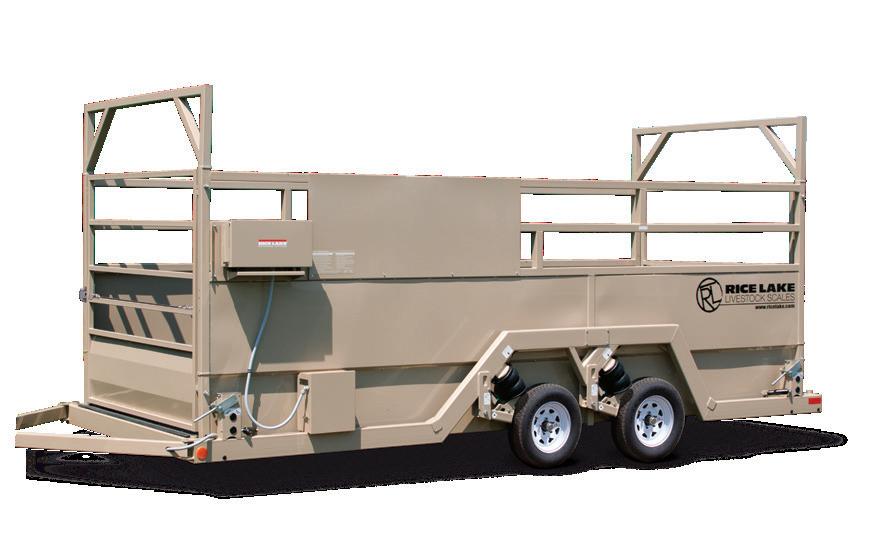
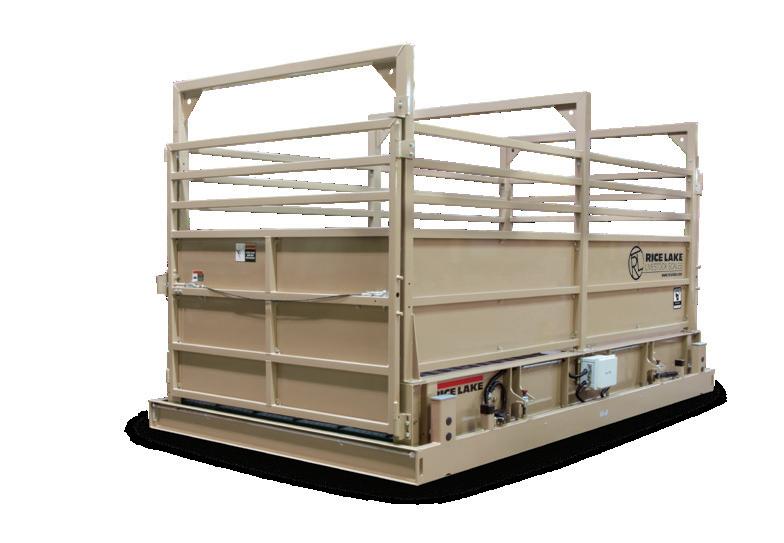
PAUL FREDERICK ENGLER, 94, of Amarillo, died May 3.
Born Aug. 23, 1929, in Stuart, Nebraska, to Henry Paul Engler and Jenny Gill, he was a lifelong entrepreneur with a love of cattle.
Engler bought his first herd at 12 years old. He graduated high school at 15 and continued to the University of Nebraska, graduating in 1951.
In 1960, Engler founded Hereford Feedyard and became an executive at Iowa Beef Packers in 1972. He moved to Dumas in 1975 and founded Cactus Feeders.
Engler received numerous awards and recognition in the industry throughout his career. In May 2022, he
received an honorary Ph.D. in business administration and agriculture from West Texas A&M University from the Paul and Virginia Engler College of Business and the Paul Engler College of Agriculture and Natural Sciences.
Engler’s legacy is not confined to his lifetime. It thrives through the University of Nebraska, West Texas A&M University, and the Paul F. and Virginia J. Engler Foundation.
He is survived by his children Michael (Dalia) Engler, Teresa (Dan) Raizen, Matthew Engler, Mark Engler, Jennifer (Tom) Coleman, and Sara (Steve) Cady; nine grandchildren; four great-grandchildren; stepdaughters Claudia (John) Gilson, Cathleen (Jeff) May and Caroline (Steve) Fauks; and sister Katherine Anderson. T C

Saturday,July27@10:00a.m.–SanSaba
Saturday,August24@10:00a.m.–SanSaba
Saturday,September28@10:00a.m.–SanSaba ConsignmentsWelcome!
WEEKLY SALES HELD AT 11:00 a.m.
Monday – Mason Thursday – San Saba Formoreinfoonabove salesoronlineviewing andbidding,pleasecall orvisitourwebsite.
TSCRA Special Ranger investigation leads to the arrest of Corey Lockett and Ali Fedell.
Corey Lockett and Ali Fedell were arrested on felony theft of livestock charges after a lengthy investigation led by Texas & Southwestern Cattle Raisers Association Special Ranger Darrel Bobbitt.
Bobbitt began investigating the case after being contacted by a Houston County resident who believed her ex-boyfriend, Lockett, had stolen and sold a horse she owned.
The victim was told by Lockett that her horse had been killed in a train accident after escaping its pasture. However, after being in contact with an individual who purchased a horse matching the description of her horse, the victim became suspicious.
In July 2022, Bobbitt launched an investigation that confirmed the victim’s horse was alive and had been sold to a new owner in June 2022. Further investigation revealed Lockett did not act alone, soliciting assistance from Fedell to orchestrate the sale of the horse.
Arrest warrants were issued for Lockett and Fedell, and both individuals were apprehended. Fedell pleaded guilty in the 349th District Court May 15, 2023, and received a deferred adjudication with community supervision for a period of five years.
Lockett followed suit, entering a guilty plea in the 349th District Court Nov. 13, 2023. He was sentenced to 10 years, which was later suspended to five years of probation under community supervision and $5,000 in restitution.
Texas & Southwestern Cattle Raisers Association would like to thank Houston County District Attorney’s Office for their joint effort in the investigation. T C

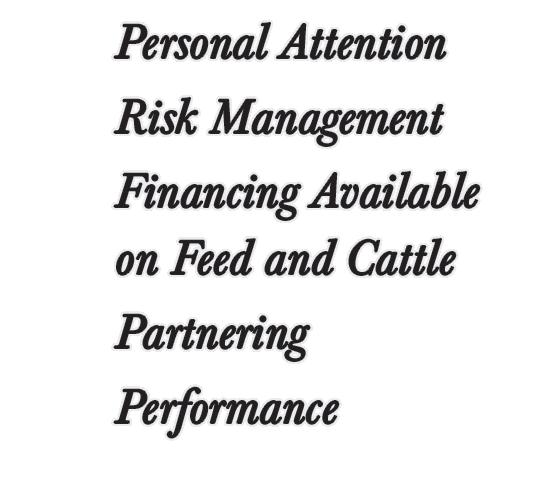







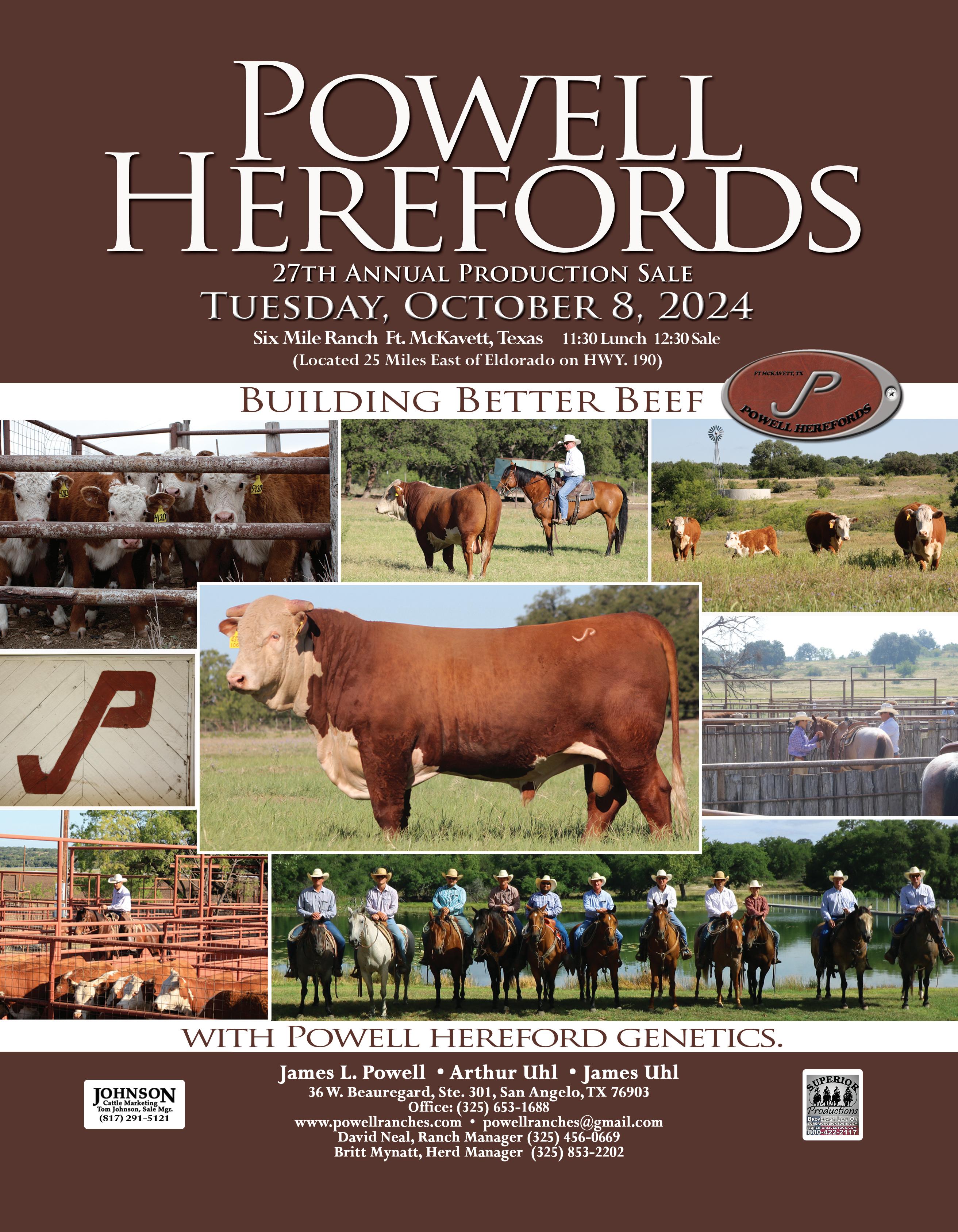
Longhorn missing in Donley County.
Texas & Southwestern Cattle Raisers Association
Special Ranger Chris Ward reports a black Longhorn cow missing off County Road 18 in Donley County. The 4-year-old cow has a left drop horn, a white ear tag with No. 1 and a “Mill Iron” branded on her left rib. The cow was heavy bred when last seen in October 2023. Anyone with information on this case is urged to contact Ward at 806-205-0119.
Horse stolen in Tarrant County.
Texas & Southwestern Cattle Raisers Association
Special Ranger Robert Pemberton reports an Arabian horse stolen from a property off Knots Street in Fort Worth. The 8-year-old gelding is dappled grey with a scar on his nose. Surveillance footage shows a male subject exiting in a white, late 2000s Ford Crown Victoria, fourdoor car and then riding the horse down the street. The incident occurred in the early hours of April 29. Anyone with information on this case is urged to contact Pemberton at 903-450-3900.
Bred heifer missing in Hopkins County.
Texas & Southwestern Cattle Raisers Association
Special Ranger Bo Fox reports a black bred heifer missing off County Road 1125 in Cumby. The heifer weighs approximately 900 pounds and has “Circle T” branded on her left hip. She was last seen April 18.
Bred heifer missing in Mount Pleasant.
Fox also reports a black, heavy bred heifer missing off FM1001 in Mount Pleasant. She has orange tags in both ears and was last seen April 16.
Cattle missing in Red River County.
The special ranger reports eight cow-calf pairs missing from a property near County Road 2386 in Detroit. The black or red European-influenced commercial cattle are solid colored with some white faces. The cows have a yellow or green ear tag and “HX” branded on their left
hip. They were last seen Jan. 20. Anyone with information on these cases is urged to contact Fox at 903-348-9638.
Cattle missing in Crockett.
Texas & Southwestern Cattle Raisers Association
Special Ranger Darrel Bobbitt reports an Angus plus bull and Brangus cow missing from a property off Walker Road in Crockett. The black Angus Plus bull has “-K ” branded on the left hip. The black Brangus cow has “-C” branded on the left hip. They were last seen April 15.
Black Brangus bull missing in Crockett.
Bobbitt also reports a black Brangus bull missing off Highway 21 East in Crockett. The 2-year-old bull has an electronic ID tag, white ear tag with herd No. 415 and a “Rafter C” brand. He was last seen April 17.
John Deere tractor, John Deere Gator and Bobcat welder missing in Houston County.
The special ranger reports a John Deere tractor, John Deere Gator and Bobcat welder stolen off Highway 21 West in Crockett. The gate lock was cut to steal the equipment, last seen April 15. Stolen items include:
• 2012 John Deere 5065M tractor, serial No. 1P06100DCBH021460
• 2012 John Deere Gator, UTV, model XUV 6251, serial No. 1M0625GSJCM043407
• Bobcat welder, blue miller, serial No. NC490122R
Equipment stolen in Cherokee County.
Bobbitt also reports several pieces of equipment stolen off Highway 175 West, halfway between Jacksonville and Frankston. Stolen items include:
• 2015 Polaris Ranger 570 Crew, two-row seating UTV, olive green with black top, VIN 3NSRUA572FG87731
• John Deere Z425 zero-turn, 5-inch mower, green and yellow, VIN M0Z425J062754
• A John Deere Gator UTV was also stolen and recovered a short distance away from the property.
Evidence indicates multiple individuals are involved. The equipment was last seen the night of April 26 and discovered missing April 27. Anyone with information on these cases is urged to contact Bobbitt at 936-222-2144.
Cattle missing in Lampasas County.
Texas & Southwestern Cattle Raisers Association Special Ranger Marvin Wills reports 12 Hereford cows,
10 Hereford calves and a red bull missing in Lampasas County. The cows are branded with “D over V” on their right shoulder. The bull has “PX” branded on his left hip. The cattle were last seen April 30. Anyone with information on this case is urged to contact Wills at 254-223-2330.
Two cows missing in Runnels County.
Texas & Southwestern Cattle Raisers Association Special Ranger H.D. Brittain reports two red, motley-faced cows missing from a pasture in Runnels County. The cows have “Mesa T” branded on their left hip and were last seen March 1. Anyone with information on this case is urged to contact Brittain at 325-340-2268.
Calf missing in Matagorda County.
Texas & Southwestern Cattle Raisers Association Special Ranger Brent Mast reports a dark red calf missing off Ramble Road in Sargent. The week-old calf was last seen April 21. Anyone with information on this case is urged to contact Mast at 936-714-6619.

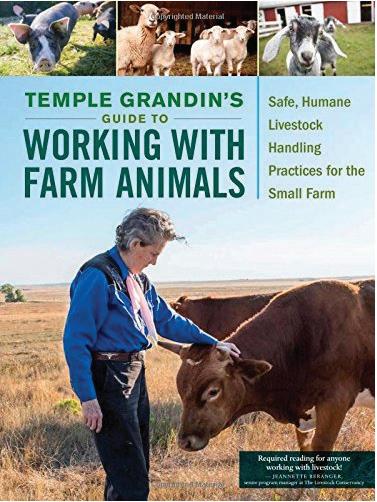
Bull shot and killed in Cleveland.
Texas & Southwestern Cattle Raisers Association Special Ranger Mike Boone reports a registered Red Angus bull shot and killed off County Road 2132 in Liberty County. The bull was shot during the night of April 12 or early morning hours of April 13. After killing the bull, the individual or individuals entered the Plantation Ranch and butchered the deceased bull. Anyone with information leading to the arrest of these subjects is encouraged to contact Boone at 409-658-5725.
Two Braford pairs missing in Cuero.
Texas & Southwestern Cattle Raisers Association Special Ranger Robert Fields reports two Braford pairs missing from a property near Friar Road in DeWitt County. The cows are approximately 3-years-old and have “two zeros connected with a bar over a zero” branded on the right hip. The cows also have No. 42 and No. 45 branded on the right hip or right thigh. The black Angus-cross calves are approximately 4 to 6 months old with no marks or brands. They were last seen April 1.

Cow-calf pair missing in DeWitt County.
Fields also reports a Brahman-cross cow-calf pair missing from a property off Candido Road in Yorktown. The yellow, Brahman-Jersey crossbred cow has “circle R over connected N” on her left hip. The three-monthold calf has no brand or markings. They were last seen in February.
Heifer missing in Gonzales County.
The special ranger reports a Charolais-cross heifer missing off County Road 197 in Gonzales. The heifer has a half-moon under bit on its left ear, a red ear tag in its right ear with “Haecker Cattle” and weighs approximately 160-190 pounds. On the night of April 26, an individual described as a short heavyset Hispanic male, approximately in his mid-sixties, was seen looking through the calf pen. Anyone with information on these cases is urged to contact Fields at 361-207-5207.
Black Angus bull missing in Brown County.
Texas & Southwestern Cattle Raisers Association
Special Ranger Todd Jennings reports a black Angus bull missing off County Road 225 near Brownwood. The bull weighs approximately 1,800 pounds with a No. 26 green ear tag in the left ear and a “J open AL connected” brand on the left hip. He was last seen March 10.
Cow missing in Kendall County.
Texas & Southwestern Cattle Raisers Association
Special Ranger Todd Jennings reports a black motleyfaced, mix-bred cow missing from a property off Highway 46 near Bergheim. The cow has no brands or markings and was last seen March 27.
Three Angus calves missing in McCulloch County.
Jennings also reports three black Angus calves missing off U.S. 377 in McCulloch County. Two of the three-month-old heifers have red ear tags with No. 80 and No. 62 in the left ear with an under-bit notch in
their right ear. The third calf is unmarked. The calves were last seen April 19.
Equipment stolen in San Saba County.
The special ranger reports a John Deere tractor, Bad Boy lawn mower, several John Deere attachments and numerous other agriculture-related items stolen off County Road 437 in Cherokee. Stolen items include:
• 2019 John Deer 40-44M tractor, PIN 1LV4044MLKK108597
• 2019 John Deer RV2073 rear blade, PIN 1XFRB20XCJ0017260
• 2019 John Deer S8752 pallet fork, PIN SBPF49
• 2019 John Deer rotary cutter MX6 PIN 1P00MX6CLKP076800
• John Deer front-end loader
• Bad Boy Zero Turn lawn mower
• 2007 Cougar travel trailer, Texas plate No. VEH9847, VIN 4YDT3022272504500
Last seen April 1, these items, along with numerous other household and agriculture-related items, totaled $35,950 in value.
Angus bull missing in Llano County.
Jennings also reports a registered black Angus bull missing off State Highway 71 in eastern Llano County. The yearling bull is branded with an “E over X ” on his left shoulder and a “J17” freshly branded on his left hip. He has a white tag in his left ear with No. 11, and 3343B tattooed on his lip. The bull was last seen April 4. Anyone with information about these cases is urged to contact Jennings at 830-997-7585. T C
TSCRA offers a cash reward for information leading to the arrest and/or grand jury indictment of individuals for theft of livestock or related property. Anonymity is guaranteed. To provide information, call the Operation Cow Thief tip line at 817-916-1775.


TSCRA member wins Regional Hugh Hammond Bennett Excellence in Conservation Award.
Story and photo by Josh Colligan
The National Conservation Planning Partnership recently recognized Carroll Collier as the 2023 Hugh Hammond Bennett Award for Conservation Excellence, South Central Regional Producer of the Year.
Collier, a Texas & Southwestern Cattle Raisers Association member who operates Collier Farms near Chico with his daughter, Jeannette Shaw, is the first Texas producer to receive this award.
“It’s a big honor to me. I didn’t realize that I was working toward that,” he said. “I was just doing my best and trying to make our land better than we found it.”
The Hugh Hammond Bennett Award for Conservation Excellence recognizes individuals at the local, state and national level for extraordinary achievements and contributions to the soil and water conservation movement in the U.S.
“I think it was almost a necessity that he gets rewarded for all the conservation he’s done and tried to incorporate into his operation,” said USDA Natural Resources Conservation Service District Conservationist Ernest Dunson.
“When he first started working with us, the agency was actually the Soil Conservation Service. He was a quick adopter when it came to new technologies or practices. He was all for it.”
Collier’s relationship with Natural Resources Conservation Service, dating back to the 1960s, began with building water structures and continues today with an active Conservation Stewardship Program contract. Some of the conservation practices he has implemented throughout the years include native and introduced grass plantings for forage; critical area plantings for erosion control; grade stabilization structures; water sources; and thousands of feet of fencing for rotational grazing.
One conservation strategy, cover crops, has been used for more than a half-century on the farm.
Collier’s grandfather introduced the practice on the cropland in a strip-cropping system to counter soil erosion. He adopted the practice for his pastures to build soil health and provide supplemental grazing for the crux of his operation — Red Angus cattle and dorper sheep.

“I saw the need from following him,” Collier said of his grandfather. “He was a great example for me; he raised me. He was a real good conservation-minded man on everything.”
In addition to his direct contributions to land conservation, Collier has hosted several education outreach events at Collier Farms. Shaw has taken the reigns of that part of the operation since retiring from the education system. The farm has hosted the local Rotary Club, schools, community groups and Natural Resources Conservation Service staff for training events.
“I retired from being a school counselor and teacher, and I just have the desire to educate people as much as possible about the importance of agriculture and where real food comes from,” Shaw said. “I feel like the more people we can get on the farm and share in the farm experience, the more they will want to learn and have an appreciation for what farmers and ranchers do.”
Even after working on the land for more than 60 years, Collier continues to seek ways to improve his operation’s resilience. In the short-term, he’s looking to add new cross-fences and upgrade existing fencing to sheep standards so more fields can be utilized by all livestock, which will diversify his grazing operation even further.
“I’ve always wanted to leave this land better than I found it,” he said. “It means everything to me for our next generations.” T C
Josh Colligan is a public affairs specialist for USDA’s Natural Resources Conservation Service based in Weatherford.
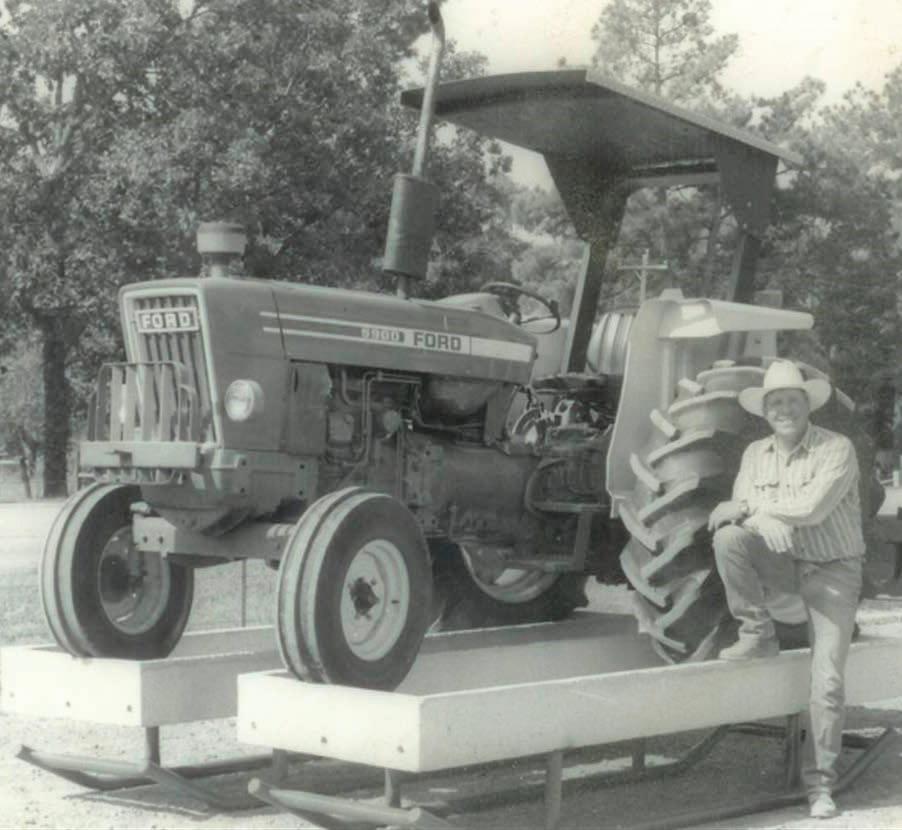

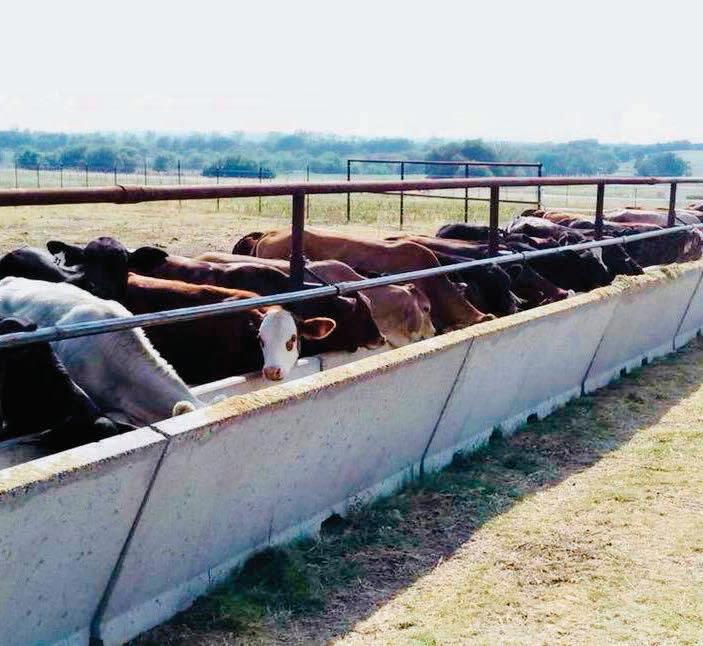


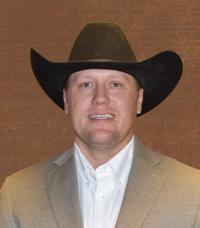
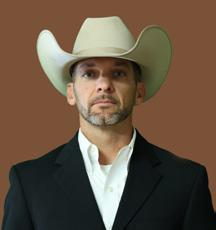
Cactus Feedyard
Matthew Turney, Manager Cactus, TX
office: (806) 966-5151 cell: (806) 282-7077
Centerfire Feedyard
Adam Gerrond, Manager Ulysses, KS office: (620) 356-2010 cell: (806) 390-9034
When Our Folks Drive Through
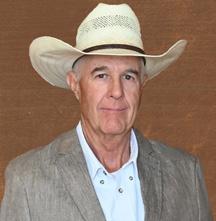
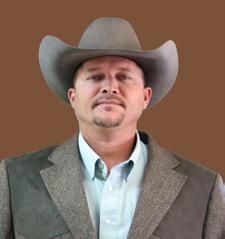

Frontier Feedyard
Jon Vanwey, Manager Spearman, TX office: (806) 882-4251 cell: (719) 251-2381
Stratford Feedyard
Pistol Audrain, Manager Stratford, TX office: (806) 396-5501 cell: (806) 753-7133
Burlington Feedyard
Logan Hardin, Manager Burlington, CO office: (719) 346-8532 cell: (620) 575-6702
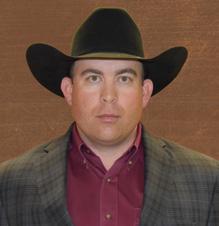
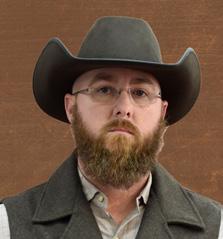

Southwest Feedyard
Kacey Graham, Manager Hereford, TX office: (806) 364-0693 cell: (806) 316-8799
Hale Center Feedyard
Rusty Jackson, Manager Hale Center, TX office: (806) 879-2104 cell: (806) 773-9457
Ulysses Feedyard
Adam Gerrond, Manager Ulysses, KS office: (620) 356-1750 cell: (806) 390-9034
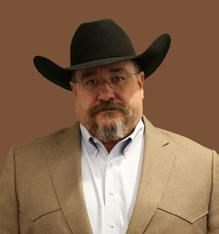
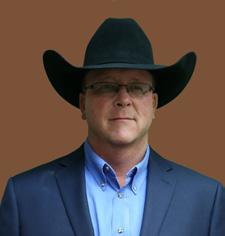


Wolf Creek Feedyard
Keith Brinson, Manager Perryton, TX office: (806) 435-5697 cell: (806) 282-7588
Wrangler Feedyard
Randy Shields, Manager Tulia, TX office: (806) 583-2131 cell: (806) 290-0559
Syracuse Feedyard
Phil Moreman, Manager Syracuse, KS office: (620) 384-7431 cell: (806) 340-4790


By Maddy Bezner
Photos courtesy of Noble Research Institute
In ranching, where every decision can tip the scales of ecosystem health, the power of observation cannot be overstated.
Observation is the cornerstone of a regenerative mindset. Because it marries immediate responsiveness with monitoring over time, it can help effectively adapt to the environment’s ever-changing dynamics.
Noble Research Institute regenerative ranching advisor Caitlin Word says the ability to observe and record land and livestock changes is a powerful entry point for individuals new to regenerative ranching, who might find extensive data collection and scientific methodologies daunting.
“At its core, regenerative ranching revolves around enhancing soil health and ecosystem resilience,” Word says. “Observational skills are crucial because they offer immediate insights into the environment’s health.”
What one sees above ground — a lush grass cover or a patch of bare soil — reflects the complex interplay of biological processes occurring beneath the surface. Word, a seasoned regenerative ranching expert, emphasizes the importance of understanding these visual cues.
“Observing these signs provides direct feedback on our management practices and their effects on the land,” she says. “Everything you see above the ground tells you about what’s happening below it.”
Whether it’s plant health, soil conditions, or livestock behavior, each observation can inform decisions that lead to healthier, more productive land.
One of the simplest yet most effective tools is journaling. Word explains keeping a detailed record of daily observations can transform how you manage land.
“Journaling is as easy as noting that a particular plant appeared where it hadn’t before, or that livestock exhibited certain behaviors on a new pasture,” she says. “Many ranchers already keep detailed records, like entries in a little red book, such as noting that a cow was limping on her left front foot today. This method can also be applied to ecological observations.”

Improving grazing lands begins with boots-on-the-ground observational skills.
For instance, if a new plant species or a wildflower appears, it’s beneficial to document it and possibly research it later. Likewise, recording environmental changes like significant rainfall or signs of erosion can be compelling.
“Just as some ranchers record daily rainfall, why not extend this practice to include other ecological observations,” Word says. “This habit not only keeps a record of changes in your pasture, but it also boosts your awareness and understanding of the environment, helping you make more informed management decisions.”
These records build over time, creating a comprehensive picture of the ecological shifts and enabling you to track progress and identify issues early.
Word says, along with written records, photo documentation stands out as a strategic observational tool.
“You see your pasture every day, and just like watching a child grow, the gradual changes might escape you,” she says.
By taking regular photos — preferably at the same time each year — you can make side-by-side comparisons to visually gauge changes in plant density, species diversity and land cover.
“To effectively monitor changes in your pasture, it’s important to select representative areas for photo documentation,” Word says.
If there are specific areas that are being actively improved upon, document them.
“For example, if an area doesn’t look great right now, take a photo of it and aim to capture its improvement over the next year,” she says.
Word recommends setting up fixed points in a pasture for yearly photos. These fixed points can be marked with something as simple as a brightly colored T-post or a distinctive natural feature like a rock. This method ensures consistency in the photos, making year-to-year comparisons meaningful and informative.
Another practical tool is the use of grazing exclosures. These are small areas fenced off to prevent grazing, thereby serving as control sites used to compare natural vegetation growth against grazed areas.
“It’s a direct way to see how grazing impacts your land,” Word says. “When you use grazing exclosures, they serve as a reference point for evaluating forage utilization. A designated reference point allows you to see how extensively the forage has been grazed down.”
Additionally, if certain plants are being selected preferentially, this can lead to overgrazing of those species and give other plants a chance to proliferate. Word says you can observe this phenomenon in your grazing exclosure.
“Plants once prevalent in the pasture might be found intact within the exclosure, indicating they were grazed out in the surrounding areas. This clearly indicates the plant community dynamics and the degree of forage utilization – essentially, how much forage was consumed or trampled by the livestock.”
By comparing exclosed areas with grazed ones, it is possible to assess how grazing strategies may affect plant diversity and soil health, and then adjust practices based on the observations.
Ultimately, the practice of observation ties back to the fundamental principles of soil health, which should always guide a regenerative ranching transition.
To dive deeper into regenerative ranching, resources like the Noble Land Essentials course offer extensive guidance about both observational and data-driven management practices.
Once comfortable with basic observations, more detailed data collection can be incorporated. Word says this adaptive approach is key to growing a regenerative mindset.
Word suggests by starting with simple observation tools, managers can not only enhance the immediate understanding of the land, but also lay the groundwork for more sophisticated environmental management.
“In doing so, you contribute to a more regenerative mindset, one observation at a time.” T C
START SIMPLE: Begin with simple, manageable tasks. Start with observing and recording what you’re comfortable with and expand as you learn.
AIM FOR OBJECTIVITY: Focus on comparing your current observations with past records. Subjectivity
can cloud our vision and our results if we start comparing our land to neighboring farms or ranches.
BUILD SKILLS OVER TIME: Gradually increase the complexity of your observations by easing into more advanced data collection when you’re ready.

Ranching
By Blair Fannin
Despite record low hay inventories in Texas in 2023, prospects for higher yields this hay season are being fueled by heavy rainfall across major production regions of Texas, according to Texas A&M AgriLife Extension Service experts.
Central, South Central and East Texas hay production regions received double-digit rainfall amounts in some areas this spring. Coupled with warmer nighttime temperatures, conditions have helped spark growth of warm-season forages used in hay production.
The prospects are welcomed considering national hay inventories last summer hit their lowest levels nationally since 1974 when USDA’s National Agricultural Statistics Service began tracking data. Drought throughout Texas exacerbated the problem.
“We still have hay shortages from last year,” said Vanessa Corriher-Olson, Ph.D., AgriLife Extension state forage specialist based in Overton. “Parts of Central and East Texas have had excellent rainfall this fall and spring. Ryegrass and clovers have done well. I’ve talked to some folks who are harvesting ryegrass for hay. The challenge, of course, is to continue to get rainfall.”
Fertilizer prices have been a thorn in the side of many producers after experiencing record prices over the past year. Those price concerns have eased somewhat as ammonium nitrate has scaled back to $530 a ton and ammonium sulfate to $490 a ton. Those prices are 20% to 30% less compared to levels seen two years ago.
Despite higher fertilizer costs, producers have continued to fertilize hay meadows.
“I’m hearing more folks continuing to fertilize because they want or need the production rather than being more concerned about costs,” Corriher-Olson said. “We always recommend getting a soil test.”
In 2023, harvested hay acres in Texas were 4.6 million, up from 4.1 million acres in 2022. However, harvest
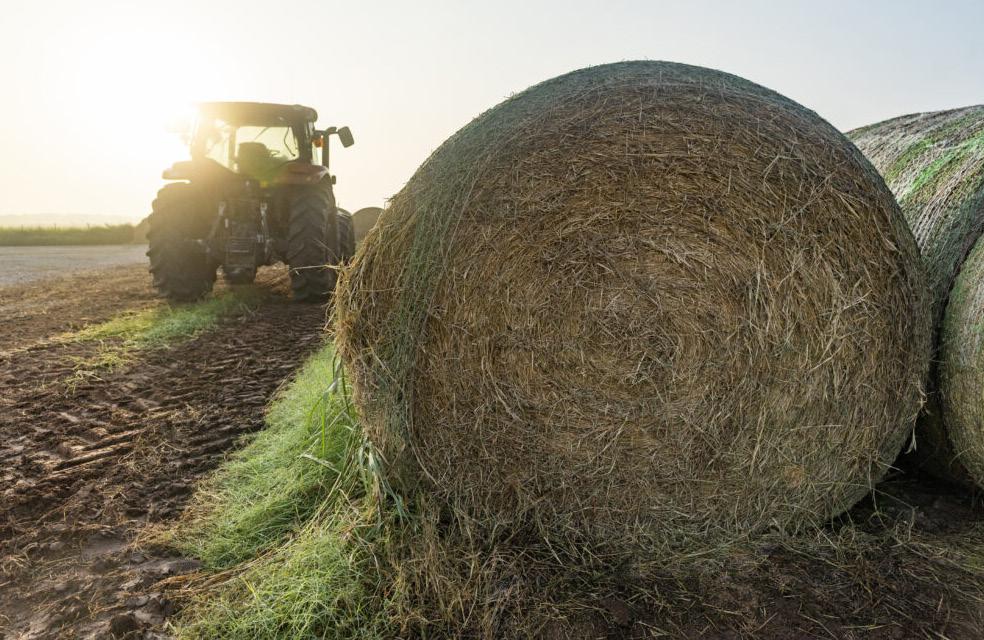
Texas A&M AgriLife Extension Service experts say hay prospects for the coming months should be an improvement over yearago levels. Photo by Texas A&M AgriLife.
numbers were considerably lower compared to 5.8 million harvested acres in 2021 and 5 million acres in 2020.
With those lower inventories of the past few years, hay prices have escalated.
“The cost of everything to produce hay has gone up, and I don’t anticipate they will come down,” CorriherOlson said. “Most producers sell hay on a per-bale basis. Costs will remain high to produce hay and hay prices are expected to remain high due to everyone being short on hay. If we have drought again this summer, that will only exacerbate prices.”
Round bale prices vary between $95 a bale and $120 bale, Corriher-Olson said.
“The Coastal (Bermuda grass) is looking really good. We’re just hoping this rain doesn’t cut off,” said Truman Lamb, an AgriLife Extension agent in Anderson County. “I’ve talked to two or three producers who say they have really good Coastal stands and will be ready to start cutting in about two to three weeks.”
Producers who have cut ryegrass and other coolseason forages are seeing yields between two and twoand-a-half bales per acre.
Silage bales weighed 1,700 pounds with 50% moisture and 850 pounds of dry matter. Lamb said more producers are collecting soil samples to ensure they are getting the most return from fertilizer applications.
“A lot of them are getting closer to soil recommendations and that can be attributed to fertilizer prices,” Lamb said.
Overall, the spring season is setting up favorable prospects for hay production this year.
“We’re excited to get this first round of real hay baled, get some moisture and do it again,” Lamb said. T C
Blair Fannin is a communications and media relations manager for Texas A&M AgriLife Research.
The Texas & Southwestern Cattle Raisers Association Business Partner Program connects companies with 28,000-plus cattle raisers who live for this land.

BUSINESS PARTNER PROGRAM BENEFITS INCLUDE:
• 10% discount on sponsorship and advertising opportunities year-round;
• Early access to Cattle Raisers Convention & Expo opportunities, including booth space;
• Company logo rotation on the Business Partner Thank You page in The Cattleman magazine;
• Opportunity to offer a special discount on your products and services to association members;
• A custom Texas & Southwestern Cattle Raisers Association Partner graphic for website use; and
• Company name listed on the Business Partner page on tscra.org.
For more information and availability, contact Kyle Conway, TSCRA director of corporate relations and sponsorships, at kconway@tscra.org or 817.916.1746.
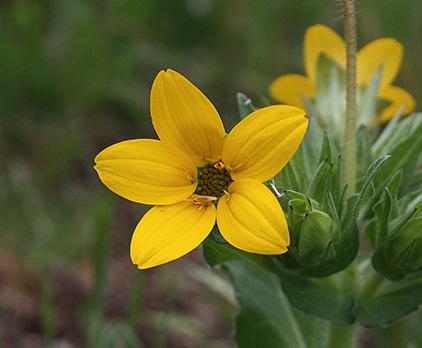
By Kent Ferguson
Photo by R.W. Smith, Lady Bird Johnson Wildflower Center
Yellow Texas-star is a native annual found growing in various soils throughout the southwestern U.S. and Mexico.
In Texas specifically, it is found in clayey or sandy sites in the Central, Southeast, Edwards Plateau and the Rolling Plains areas.
The plant:
• Is leafy, upright and slender and ranges from 6 to 18 inches tall.
• Has simple hispid leaves with upper leaves opposite, while the lower leaves alternate. Blades are 1- to 3-inches long with various shapes ranging from oblanceolate to ovate-lanceolate.
• Produces a single fruit, which is an in-curved achene roughly a quarter-inch long, lying on each petal with two horn-like tips.
• Has a hollow, single central stem, and may be branched in its upper regions.
• Has five yellow-ray flowers about a half-inch long with two distinct ribs down the middle and a notch at the end of the petal.
Yellow Texas-star is aptly named as its ray flowers resemble the five points of the Texas Lone Star. It blooms early in the spring and continues through the summer months.
While Yellow Texas-star has little to no value for cattle. Deer, sheep and goats prefer the plant in its early stages. Many pollinators will use the flower frequently. T C
Kent Ferguson, a retired rangeland management specialist from the USDA Natural Resources Conservation Service, provides plant identification photo stories to help ranchers
In key locations across Texas, Oklahoma and New Mexico, Helena has branches staffed with people who can provide landowners, ranchers and wildlife enthusiasts with all their management needs.
For more information, contact your local Helena representative or visit HelenaAgri.com.



These 16 young women and men graduated from TCU Ranch Management in May after successful completion of the comprehensive curriculum of the program, which carefully covers every aspect that affects the profitability of the ranching business. Intensive classroom study of ranching practices is reinforced in 9,000 miles of travel for on-site case studies of ranches, farms, feedlots, processing plants, market facilities, and research centers. They benefit from years of operating experience with some of the very top people in the ranching profession.
Dewormers, or anthelmintics, are an important part of a preventative herd health program for many cattle operations.
When using a dewormer, it is critical to first check the label and ensure the product is administered according to the directions. This is imperative because of the following variations.
Slaughter withdrawals can range from zero to 48 days depending on the product. Within the same brand, withdrawal windows can vary as many as 21 days between the injectable version and the pour-on version.
Some topical products can be flammable, which is important to be aware of when branding cattle.
There is one injectable dewormer that should not be used for breeding bulls, cattle managed in feedyards or under intensive rotational grazing. Other products to watch out for include those not for use in breeding bulls over one year of age. T C
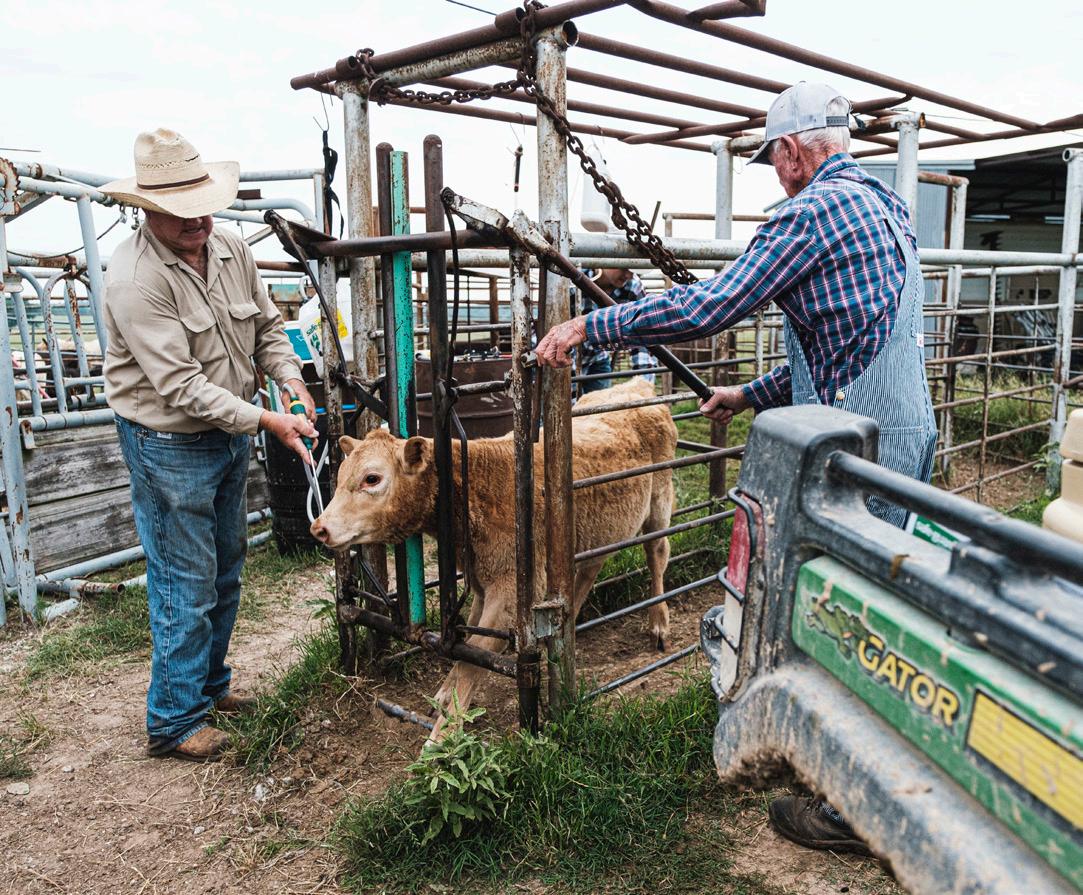
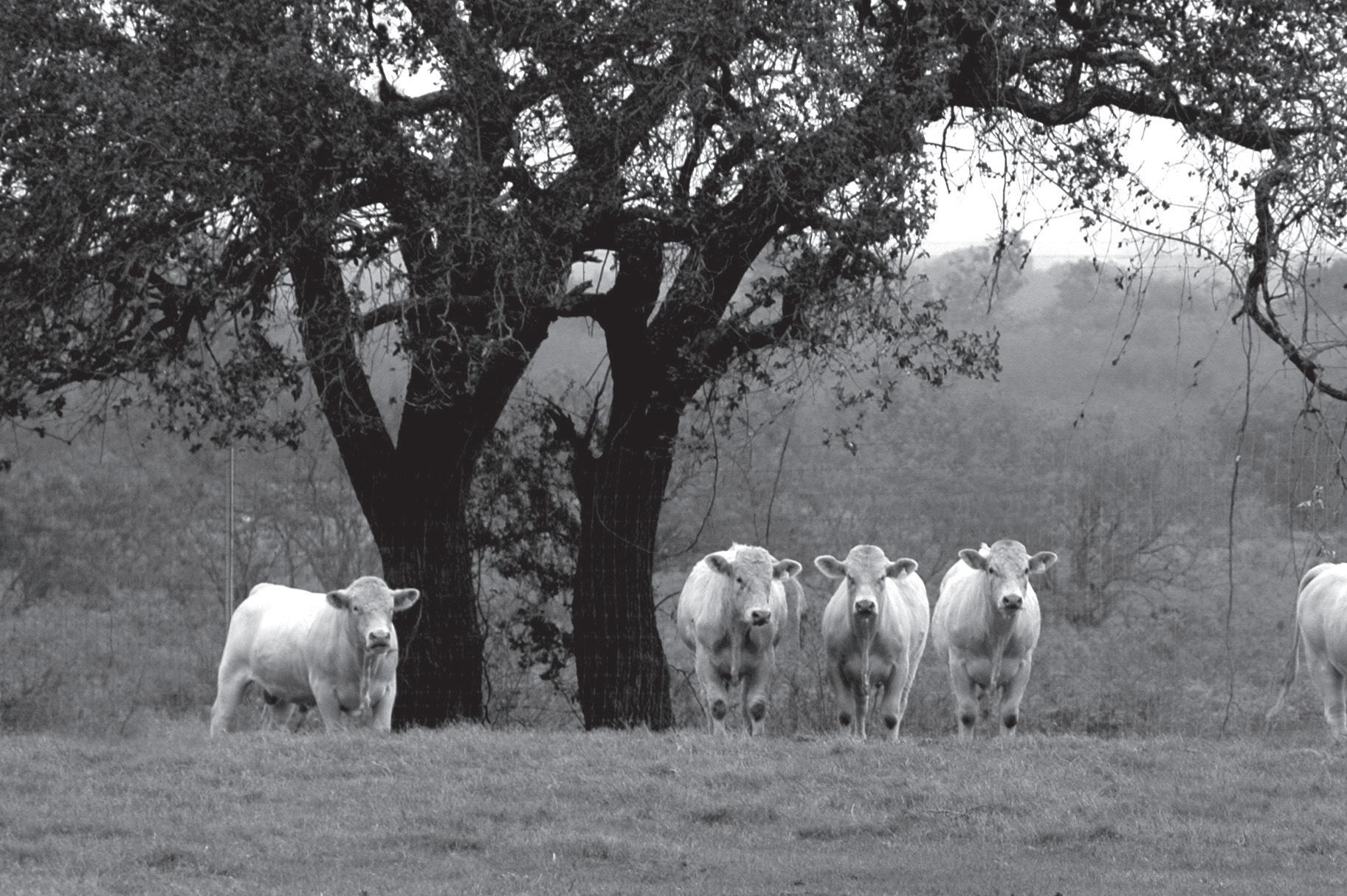
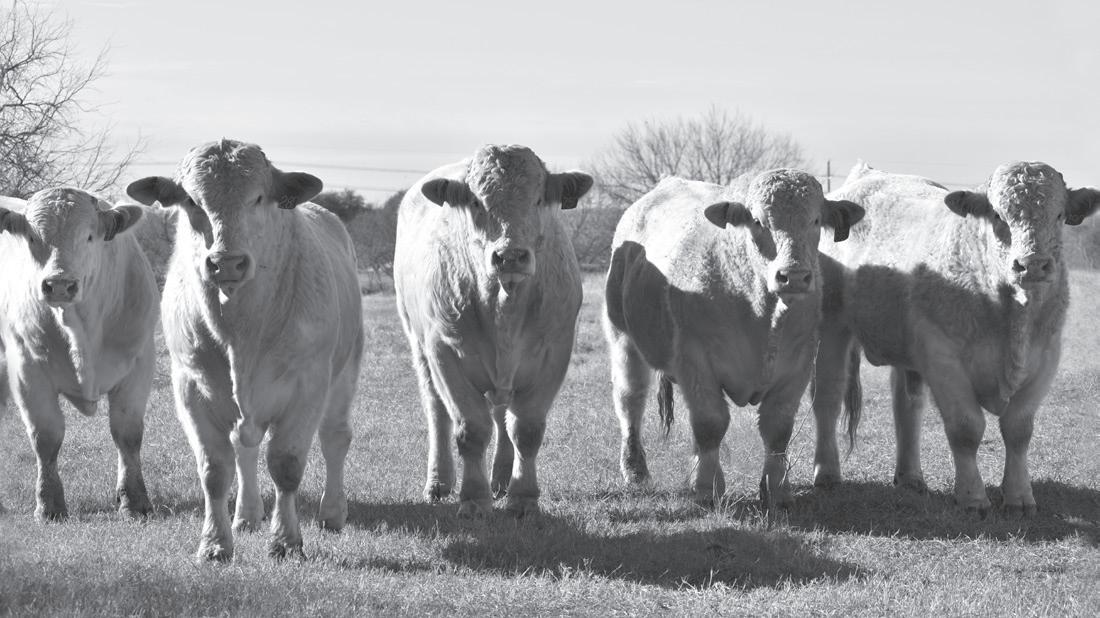


Our Angus Smar tBulls® are mature. They can breed more cows. They can handle the heat. A n d , t
. 1 - 8 0 0 - 5 4 8 - 2 8 5 5
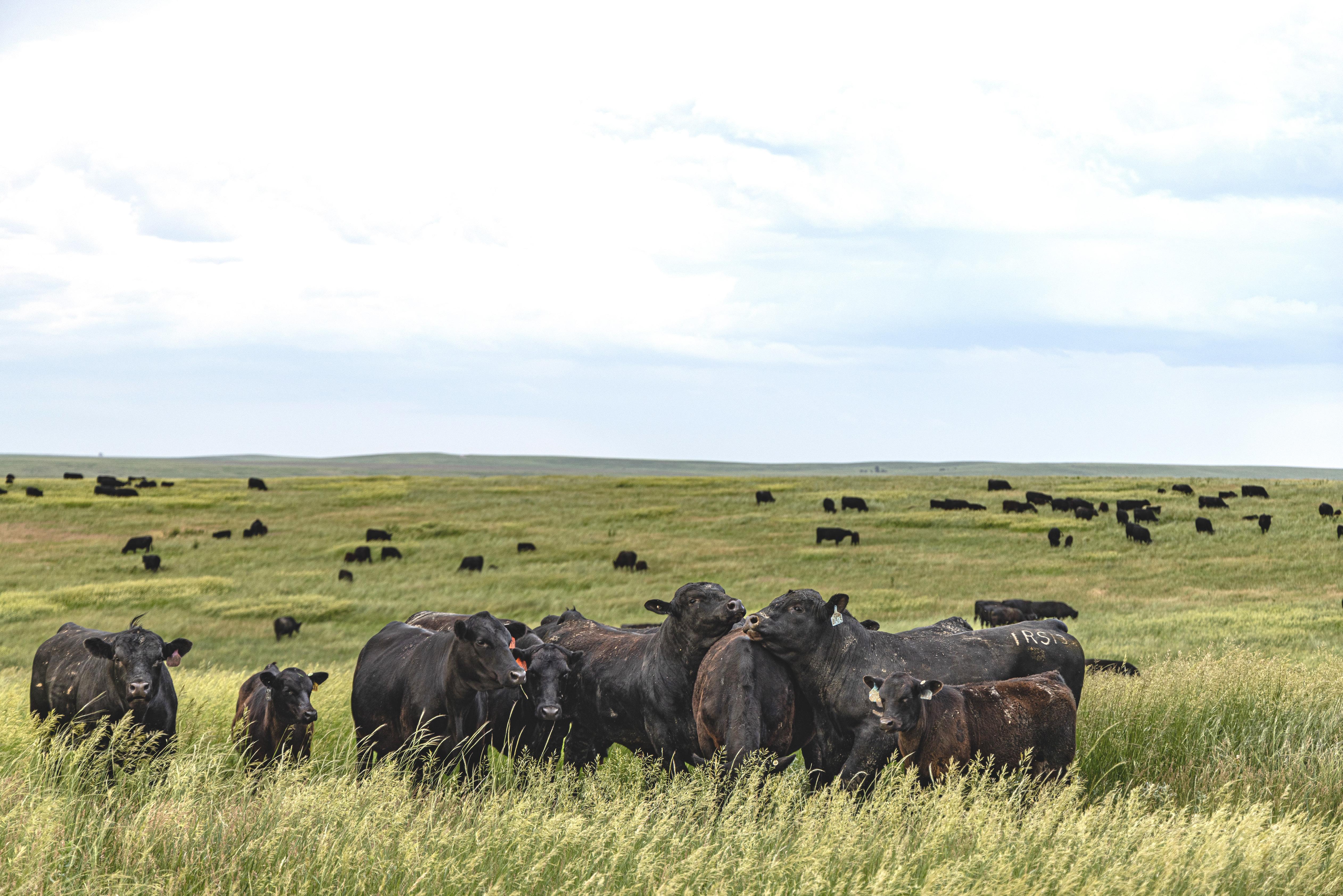
Jorgensen Bulls
A look at U.S. consumer attitudes toward beef.
By Kristen Brown
The past five years have offered a variety of extremes for day-to-day American life.
From the pandemic to weather-related challenges to inflation, the economy has been a rollercoaster. One constant stayed true — beef remains at the center of the plate.
Known as the protein of choice by most Americans, the premium product has weathered natural price increases, and, according to research, remains in high demand and maintains a competitive edge.
Jessica Finck, strategic account manager and meat scientist at Merck Animal Health, discussed the latest research related to beef demand and consumption on a recent TSCRA Talk podcast.
“Traditional value drivers for consumers are price, taste and convenience,” Finck said. “Other expanded drivers from younger consumers include healthfulness, social impact and experience. We are seeing the dynamics of the two take place in the market.”
Consumer Beef Tracker research showed 91% of respondents reported a positive eating experience when enjoying beef at home or at a restaurant; 83% consider the meat’s value when choosing a protein to prepare at home; and 53% rank beef as the top protein for social gatherings and special occasions.
Similarly, in 2023, the International Food Information Council reported 87% of consumers prioritize taste when purchasing beef.
“Producers have really responded to consumers’ desire for taste as we finally hit above 60% Choice and Prime around 2009, and it continued to increase that percentage over the last 15 years,” Finck said.
“That’s really exciting that we can answer what a majority of these generations are asking for.”
When at the meat case, the No. 1 consumer claim is quality grade, specifically USDA Choice and Prime.
Additional purchase label claims that consumers are seeking include U.S. raised, no added hormones, humanely raised, raised locally and no antibiotics.
Segmenting out Generation Z in label evaluation, the expanded drivers of no added hormones or growth

promotants was their No. 1 sought out claim, followed by high-end protein and then USDA Choice or Prime.
Looking ahead, 65% of consumers plan to maintain their beef consumption levels into the future; those who choose to eat less beef consider the price to be the reason. That’s according to the State of Consumer Survey.
Similarly, price jumped in importance from 68% in 2022 to 76% in 2023, as reported by the International Food Information Council. Research from the U.S. Bureau of Labor Statistics shows the sustained impact of inflation has increased the amount consumers spend on groceries by 32% since 2019.
Seeking to stretch their grocery dollars, consumers are trading down their steaks and roasts to ground beef, Finck said. Additionally, consumers are purchasing storebrand products, shopping at value retailers like club stores, and buying in bulk.
Even so, reports show that consumers love beef and demand remains strong.
According to beefresearch.org, while the price per pound consumers say they are willing to pay for steaks held steady at just under $9 in 2023, the retail price consumers actually pay at the checkout counter is seeing record highs approaching nearly $10 per pound.
“Beef is more expensive than other proteins, but beef is still king at the grocery store,” Finck said. “It is still at
$36 billion in terms of dollars sold and the next closest would be poultry, and that’s at $18 billion. We have a premium product that shoppers are actively seeking for the taste and the nutritional aspects.”
Dining out is another area where consumers are shifting their habits.
According to the Annual Meat Conference’s The Power of Meat study, foodservice meals cost approximately three times more than home-cooked meals. Another industry survey reveals 60% of consumers say they are eating out less often than in 2021 to manage expenses.
In evaluating eating styles, 80% of those surveyed by 210 Analytics, which conducts The Power of Meat study, identify as a meat eater; 12% as flexitarian, consumes meat but also has meals without meat; 7% as vegetarian and/or vegan; and 1% as pescatarian, consumes fish and seafood along with a vegetarian diet.
“Meat alternatives, as a whole, are down,” Finck said. “That’s encouraging for any protein source, but especially for beef as these meat alternatives aren’t replacing the protein source that we’ve created.”
Finck explained that beef wins in the minds of consumers when compared to cell-cultured and labgrown alternatives in terms of environmental impact,

hormone and antibiotic-free sustainability, health safety, freshness, appearance and taste.
“At the end of the day, beef producers are providing consumers with a safe, wholesome, nutritious product that is a sustainable, high-quality protein,” Finck said. “You [cattle raisers] are part of an incredible industry that is making a difference and that is something to be proud of.”
To hear more of the conversation, download TSCRA Talk via Apple Podcasts, Google Podcasts, Spotify or Stitcher. T C


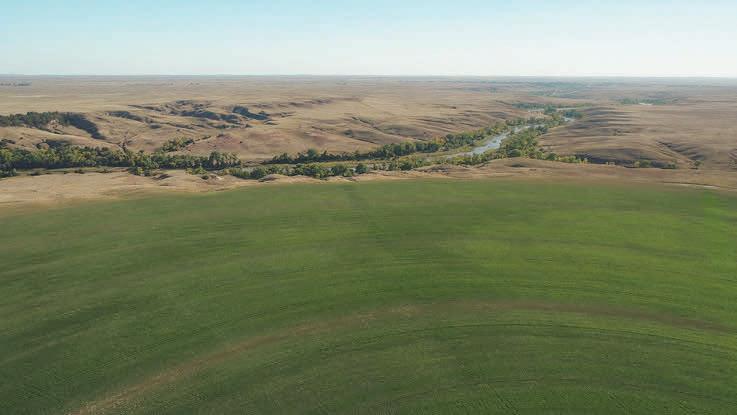



By Karlee Busher
For many cattle raisers, integrity, heritage and selfless service serve as the foundation of a successful life. That truth can be said for Texas & Southwestern Cattle Raisers Association Director Wayne Cockrell.
His passion traces back to his upbringing in the small Central Texas town of Lometa, where he says he was fortunate to get to work for and learn from several iconic cattlemen. He says a lifetime of experience in the cattle business has given him a keen anticipation for the industry’s future.
“The joy is in seeing the next generation, even the grandchildren, involved in the operation,” Cockrell says. “That’s why we do what we do — to bring the next generation into the industry.”
After completing the Texas Christian University Ranch Management Program in 1998, Cockrell began working at the Carter Ranch, which sits outside of Oakwood. He managed the commercial cow-calf and stocker operation for 22 years; while he and his wife, Becky, raised three daughters: Christy, Kelcey and Charlee.
While he was a member for many years prior, Cockrell was elected to the Texas & Southwestern Cattle Raisers Association board of directors in 2017. At first, he admits he did not feel he had the time to commit, but was encouraged to get involved by a fellow board member.
This encouragement led him to step up, volunteer for committees and take on leadership roles.
“It’s hard to balance that time with your family and that was one of my excuses,” Cockrell says. “It’s real easy to have excuses not to get involved, but actually, that’s when you need to — when you have that energy and willingness to ask questions.”
Since joining the association’s board of directors, he has stepped into new leadership roles serving on the executive committee; as chair of the membership development committee; and, most recently, current chair of the cattle health and well-being committee.
“I think a lot of times, we’d all like to stay at home behind the cattle guard and let the world leave us alone, to focus on our daily tasks behind the gate,” Cockrell says. “But realistically, for that opportunity to continue to
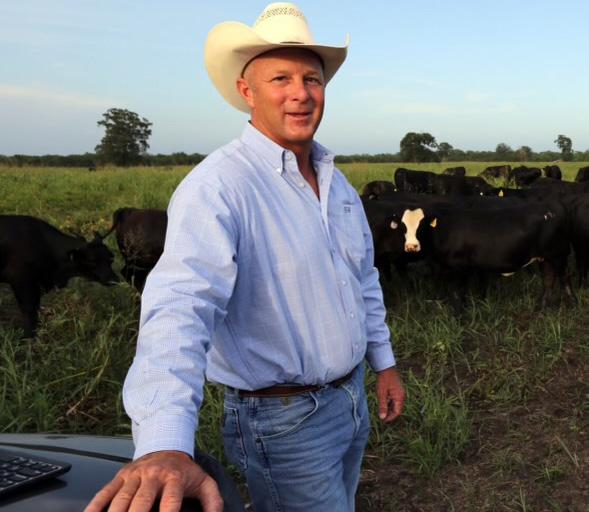
the next generation, we have to do what the generations before us have done, which is to be involved and help shape the direction.”
The experience has opened his eyes to the bigger picture, how members are interconnected and given him a greater appreciation overall.
“The key is understanding how important we are to one another, and that there’s a greater community of operations outside of our own,” Cockrell says.
Nowadays, Cockrell spends his time as a real estate agent with Icon Global Real Estate in College Station, as well as managing a stocker operation with his daughters.
“My daughters partnering with me in the cattle business and them being active members of TSCRA is exciting to see,” Cockrell says. “Never before has there been a greater outreach and greater involvement opportunities for young producers than now.” T C
Karlee Busher is a summer intern for Texas & Southwestern Cattle Raisers Association. Originally from Winters, she is a recent agricultural communications graduate from Texas Tech University.


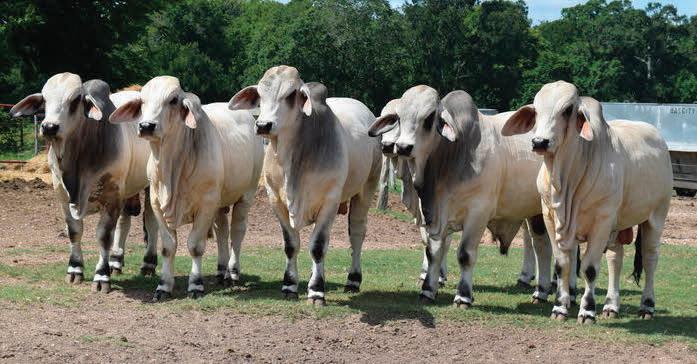



CARL RAY POLK JR. President P.O. Box 155108 Lufkin, Texas 75915

STEPHEN DIEBEL
First Vice President 3907 Salem Rd. Victoria, Texas 77904
John M. “Jack” Shelton III Amarillo, 1984-1986
James L. Powell San Angelo, 1988-1990
Tom Beard Alpine, 1994-1995
C. Coney Burgess Amarillo, 1997-1999
J. Mark McLaughlin San Angelo, 1999-2001
John E. Dudley Comanche, 2001-2003
Bob McCan Victoria, 2003-2005
C.R. “Dick” Sherron Beaumont, 2005-2007
Jon Means Van Horn, 2007-2009
Dave Scott Richmond, 2009-2011
Joe J. Parker Byers, 2011-2013
Pete Bonds Saginaw, 2013-2016
Richard Thorpe lll Winters, 2016-2018
Robert E. McKnight Jr. Fort Davis, 2018-2020
G. Hughes Abell Austin, 2020-2022
Arthur G. Uhl III San Antonio, 2022-2024
VICE PRESIDENTS
Jack Hunt San Juan Capistrano, California
Richard Wortham Austin
P.O. Box 101988 Fort Worth, Texas 76185 817-332-7064 • 800-242-7820
Jason Skaggs Executive Vice President/ Chief Executive Officer
Jaclyn Roberts Parrish Executive Director, Communications & Marketing
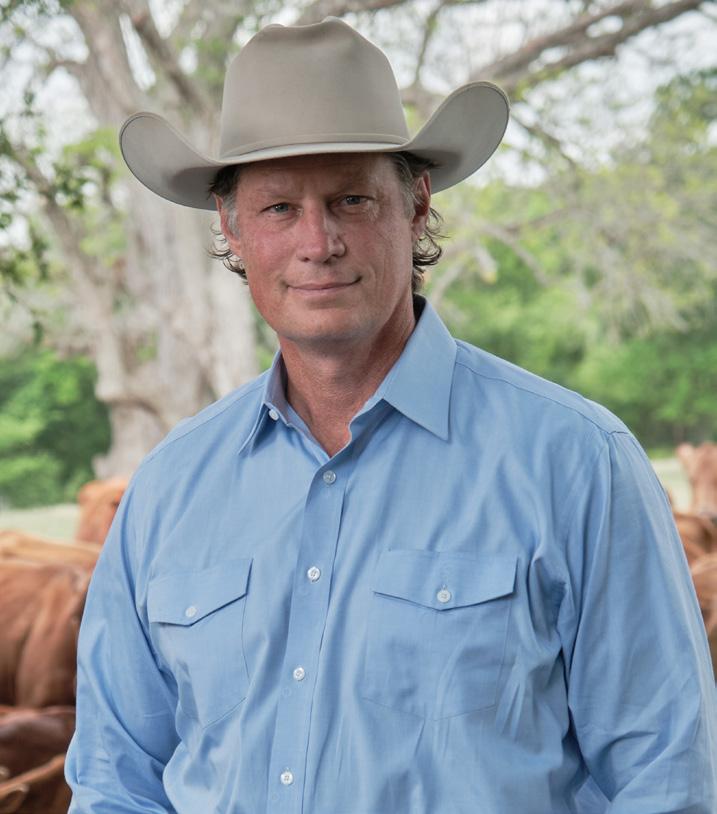
DAN GATTIS
Second Vice President and Secretary/Treasurer 213B W. 8th St. Georgetown, Texas 78626
Emily Lochner
Executive Director, Engagement & Education
Grace Dunham Executive Director, Events & Partnerships
Megan Wills Executive Director, Finance & Human Resources
Michele Woodham Executive Director, Insurance Services
Scott Williamson Executive Director, Law Enforcement, Brand & Inspection Services
Lisa Walker Executive Director, Membership & Operations
919 Congress Ave., Suite 750 Austin, Texas 78701 512-469-0171
Melissa Hamilton Executive Director, Government Relations
SCHEDULED FEEDING.
CATTLE COUNTING.
WILDLIFE DETECTION.
LIVESTREAM VIDEO.
OPPORTUNITY GROWTH.
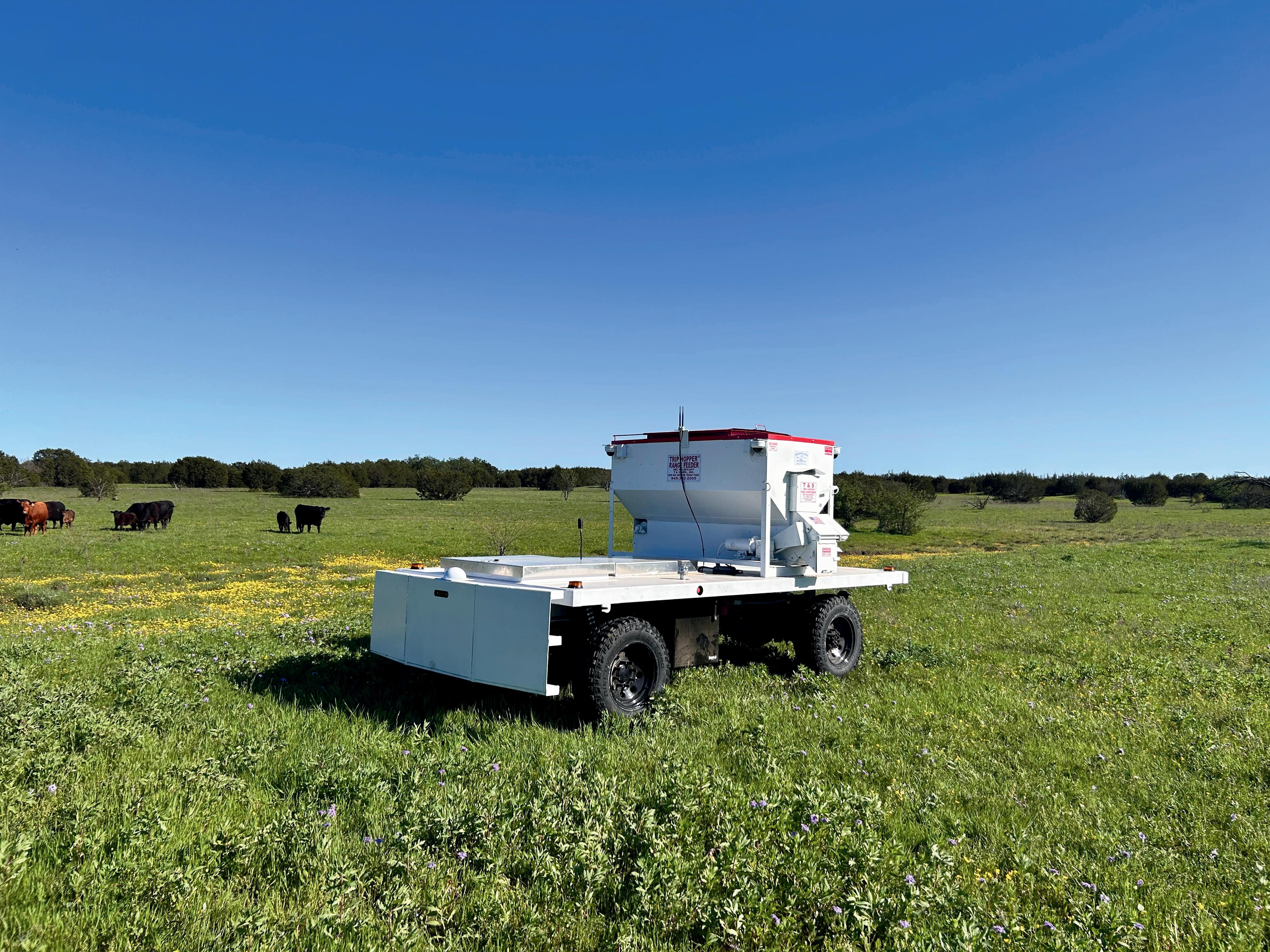

DIRECTORS
Joe M. “Jody” Bellah, Throckmorton
Blake Birdwell, Canyon
E. S. F. “Swasey” Brainard II, Pampa
J. K. “Rooter” Brite Jr., Bowie
Donnell Brown, Throckmorton
Campbell Burgess, Amarillo
Deborah Clark, Henrietta
Lynn Cowden, Skellytown
J. B. Daniel, Crowell
James Henderson, Memphis
Clayton Henry, Wichita Falls
Brooks Hodges, Guthrie
Joe Leathers, Guthrie
Frank McLelland, Tahoka
Jeff Mitchell, Amarillo
Gage Moorhouse, Benjamin
Diaz W. Murray, Wichita Falls
J. Malcolm Shelton IV, Amarillo
Dale A. Smith, Amarillo
Jim Thompson, Breckenridge
Ross Thompson, Iowa Park
Wesley Welch, Lubbock
HONORARY DIRECTORS
William L. “Buck” Arrington, Pampa Van Baize, Nocona
Emry Birdwell Jr., Henrietta
Mary Lou Bradley-Henderson, Childress
R. A. “Rob” Brown Jr., Throckmorton
J. D. Cage, Muleshoe
Mike Gibson, Paducah
Ronald J. “Ron” Gill, Chico
Robert B. Mansfield, Amarillo
Tom Moorhouse, Benjamin
Boots O’Neal, Guthrie
James Palmer, Roaring Springs
Wilson Scaling, Henrietta
Chris Scharbauer, Amarillo
Tom Watson, Muleshoe
John Welch, Wolfforth
A. B. “Buck” Wharton III, Vernon
Tom Woodward, Decatur
Kevin Busher, Winters
Charles M. “Charley” Christensen Jr., San Angelo
C.A. “Chili” Cole IV, San Angelo
Alan F. Curry, San Angelo
James H. Dudley IV, Horseshoe Bay
Amanda Dyer, Fort Davis
Johnny Ferguson, Big Lake
D.A. “Day” Harral, Fort Stockton
Ron Helm, Van Horn
Heath Hemphill, Coleman
Shelby W. Horn, Fredericksburg
Larry R. Horwood, Sterling City
Grant Jones, Rochelle
Mark W. Jones, Brady
W. Clay Jones, Brady
Ty Keeling, Boerne
Lorenzo Lasater, San Angelo
Brian T. McLaughlin, Midland
David L. Neal, San Angelo
Gerald Nobles Jr., Brady
James Oliver, Ozona
Wade Perks, San Angelo
Jessica Tate, Marfa
James Uhl, Fort McKavett
Cody Webb, Barnhart
Ken Welch, Baird
Ray W. Willoughby III, Eldorado
HONORARY DIRECTORS
C. A. “Chip” Cole III, San Angelo
William C. “Billito” Donnell Jr., Alpine
Richard Gates, Marfa
W. H. “Billy” Green III, Albany
Rafe Hargrove, Rotan
Dr. Joe Pat Hemphill, Coleman
Ken Jordan, San Saba
Don Keeling, Fredericksburg
Chris Lacy, Fort Davis
Laurence M. Lasater, San Angelo
Ben Love, Marathon
Len P. Mertz, San Angelo
Tom Perini, Buffalo Gap
Bill Phinizy, Gail
Frank Price, Sterling City
Gordon E. Sauer, Fredericksburg
Danny B. Stewart, Sterling City
Rick Tate, Marfa
Cliff Teinert, Albany
Dennis W. Webb, Barnhart
W. C. “Billy” Williams, Mertzon
DIRECTORS
Ford Drummond, Pawhuska, Oklahoma
HONORARY DIRECTORS
Les Nunn, Pauls Valley, Oklahoma
DIRECTORS
Edward Bordovsky Jr., Riviera
Austin Brown III, Beeville
W. Christopher Bush, Refugio
James Clement lll, Kingsville
David S. Crow, Corpus Christi
Dustin Dean, Floresville
David DeLaney, Kingsville
Robert “Bobby” Dobson, Birmingham, Alabama
James L. “Jamie” Donnell Jr., Fowlerton
J. David Eppright, Cost
Benjamin Eshleman III, Corpus Christi
Joseph B.C. Fitzsimons, Carrizo Springs
Cody Fry, Lueders
Jim L. Gates, Pearsall
Milton S. Greeson Jr., Victoria
Bret Griffith, Del Rio
Heath Grigg, Kingsville
Marty R. Harris, Tilden
Anson Howard, San Antonio
Leslie Kinsel, Cotulla
Claude Koontz, San Antonio
Steven J. Mafrige, Tilden
Richard Marbach, Victoria
Beth Knolle Naiser, Sandia
Federico Nieto, Raymondville
T. Michael O’Connor, Victoria
Jason Peeler, Floresville
J.R. Ramirez, La Pryor
Gilly Riojas, Corpus Christi
Michael Sasser, Corpus Christi
Lew Thompson, Pearsall
C. Clark Welder, Beeville
John Zacek, Victoria
HONORARY DIRECTORS
Steve G. Beever, Pearsall
Richard H. Bennett, San Antonio
Chip Briscoe, Carrizo Springs
Martin W. Clement II, Kingsville
Thurman S. Clements Jr., Victoria
Nixon Dillard, Pleasanton
Trainor Evans, Mercedes
Thomas J. “Tommy” Haegelin, Concan
Dr. Philip C. Hardee, Beatrice, Alabama
Allen C. “Dick” Jones IV, Corpus Christi
David W. Killam, Laredo
Dan W. Kinsel III, Cotulla
Steve C. Lewis, San Antonio
Jim McAdams, Seguin
James A. McAllen, Linn
Tim Pennell, Westhoff
Jim Peters, Quemado
Scott Petty Jr., San Antonio
Tom Risinger, Weslaco
M. Stuart Sasser, Corpus Christi
Frates Seeligson Jr., San Antonio
Richard Traylor, Batesville
Roger F. Welder, Victoria
David W. Winters, Del Rio
Bill Cawley, Crockett
Wayne Cockrell, College Station
Herff Cornelius Jr., Wadsworth
Carlos Detering III, Houston
Gardner H. Dudley, Houston
Lloyd French IV, Houston
Dan Gattis, Georgetown
Kelley Sullivan Georgiades, College Station
George Harrison, Bay City
Robert Hodgen, Houston
Colt Hoffman, Marlin
Clay Kenley, Crockett
Clive Runnells III, Austin
John Sumner Runnells III, Bay City
Tony Spears, Rosanky
John “Rocky” Sullivan, Galveston
Claudia Scott Wright, Richmond
Jay C. Evans, Dripping Springs
Leroy Ezer, Anahuac
Frank Green, Liberty
Tom J. Haynie, Navasota
Coleman H. Locke, Hungerford
Katharine Armstrong Love, Austin
Richard M. Lucas Jr., Houston
William “Alan” McNeill, Beaumont
Evalyn Moore, Richmond
Raymond E. Moore IV, Richmond
Rick Peebles, Baytown
Gary Price, Blooming Grove
Gordon Richardson, Caldwell
Charles R. “Butch” Robinson, Navasota
Nolan Ryan, Round Rock
Ed Small, Austin
Guy F. Stovall Jr., El Campo
Gerald Sullivan, Galveston
John L. Sullivan, Galveston
Robert J. Underbrink, Houston
Beau Brite White, Rosanky
Dr. M. R. “Mike” Wirtz, Brenham
April Bonds, Saginaw
Missy Bonds, Saginaw
John L. Cantrell, Cresson
Ian Chapman, Madill, Oklahoma
Hunter Crow, Dallas
James T. Dangelmayr, Muenster
Seth Denbow, Weatherford
Crawford Edwards, Fort Worth
John Greer, Henrietta
Jason Harlow, Dallas
Pete Hudgins, Sherman
Tom Johnson, Wortham
Ken Leiber, Fort Worth
Stefan Marchman, Fort Worth
William H. McCall, Fort Worth
Dan Nance, Haslet
Susan Roach, Fort Worth
Stephen S. “Steve” Sikes, Fort Worth
Bragg Smith III, Dallas
Curtis Younts Jr., Belton
Bradford S. “Brad” Barnes, Fort Worth
George Beggs IV, Fort Worth
John W. Carpenter III, Dallas
Barrett D. Clark, Breckenridge
Markham B. Dossett, Waco
Bob Drake, Davis, Oklahoma
James H. “Jim” Dudley, Comanche
John Z. Kimberlin Jr., Dallas
James E. “Jim” Link, Crowley
Jon David Mayfield, Dublin
C. H. “Terry” McCall, Comanche
Bob Moorhouse, Weatherford
Russell “Rusty” Noble, Ardmore, Oklahoma
Mary Joe Reynolds-Montgomery, Fort Worth
Tom L. Roach III, Bozeman, Montana
Stephen T. “Steve” Swenson, Dallas
Bart Wulff, Dallas
there’s never a dull moment at the auction barn.
By Elyssa Foshee Sanders
Before becoming a market inspector, Galynn Mazoch was a third-grade schoolteacher, but she always preferred the open air of the Texas Gulf Coast to the inside of a classroom.
So, when the position of Texas & Southwestern Cattle Raisers Association market inspector opened near her hometown of El Campo, Mazoch seized the opportunity to work outdoors. Twenty-five years later, it appears she made the right decision.
“I just took it over and started doing it,” she recalls. “And I really liked it because I got to see a lot of people, and I was kind of doing my own thing outside.”
On Mondays, she can be found in Edna and on Tuesdays, she’s in El Campo, inspecting incoming cattle at the sale barn and recording brands, ear marks and other identifying features to ensure the animals were not stolen.
“Livestock theft has been going on forever,” she says. “It’s crazy how often it happens, and it can be tough to locate stolen property. Ear tags can be cut out, so branding is the best way to recover your cattle if they get stolen.”
Branding helped Mazoch recover a trailer of stolen cows at an auction in Edna five years ago.
“Two gentlemen came in from Navasota pulling a 36-foot trailer with cows crammed up into the first section. I thought, ‘That’s kind of weird. Why would you drive all the way down here?’”
Suspicious, Mazoch recorded the brands and let her supervisor know.
“Turns out, they had stolen the cattle from up around Navasota, which is almost three hours away. They dumped half the load off at another sale on the way to Edna. But those cattle they had stolen, some of them were branded. That’s how we caught them.”
To thwart would-be thieves, Mazoch advises ranchers to avoid placing pens near the road, keep gates locked and maintain a head count of their herd. While there’s no failsafe method to prevent theft, she says keeping an eye out for suspicious activity is one of the best deterrents.
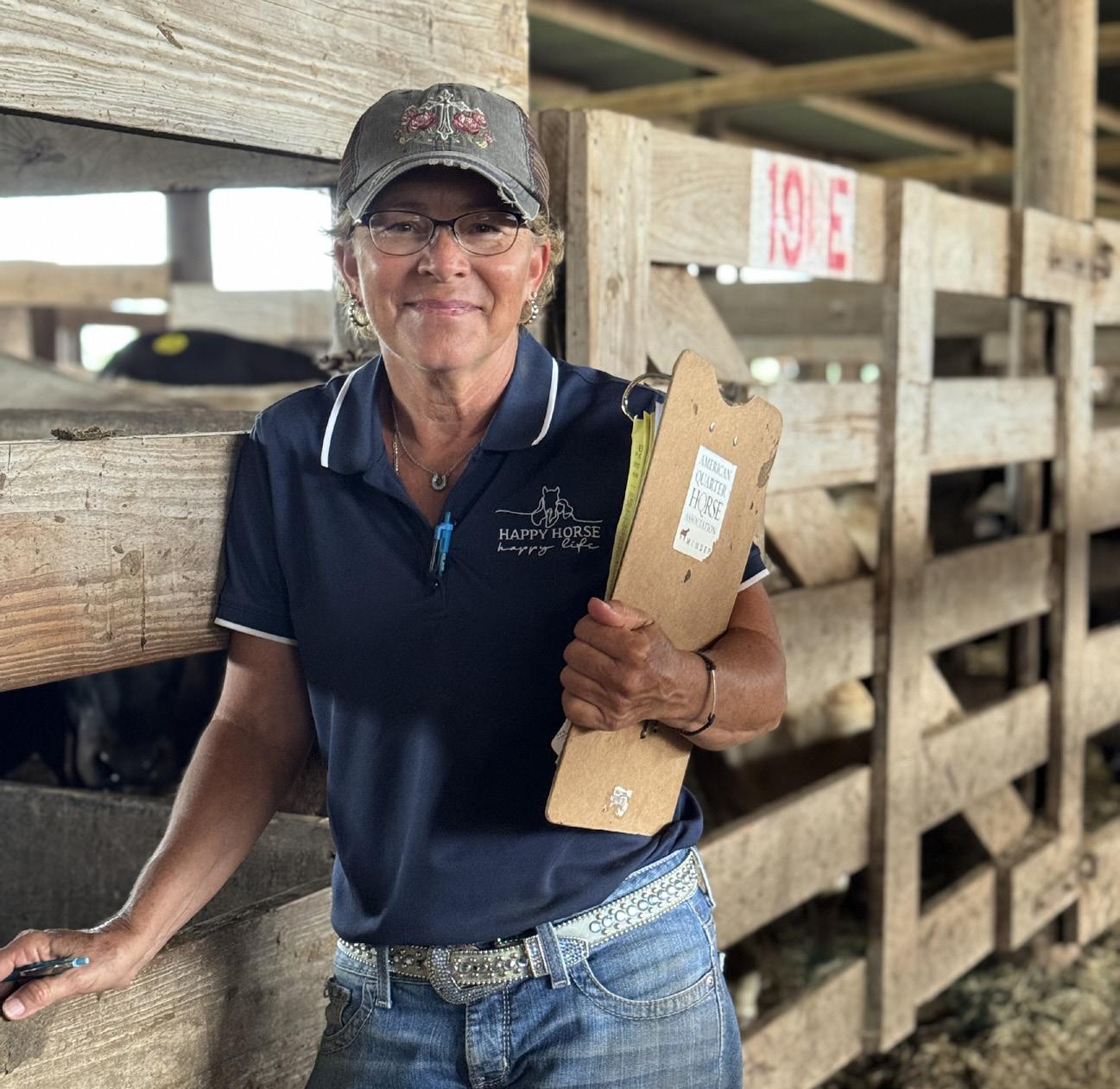
“It’s important for ranchers to look out for each other,” says Mazoch. “Not just your own property, but your neighbor’s, too.”
After 25 years, that sense of community is still Mazoch’s favorite part of the job.
“It’s the people,” she says. “Talking to them about their kids, their cattle, the market, the weather. I can go to the girl who does my hair and ask her, ‘How much rain did you get?’ She’s like, ‘I don’t know!’ You ask the rancher, ‘How much rain did you get?’ and they’ll know the exact number.
“There’s always excitement at the barn. It’s just a lot of fun.” T C





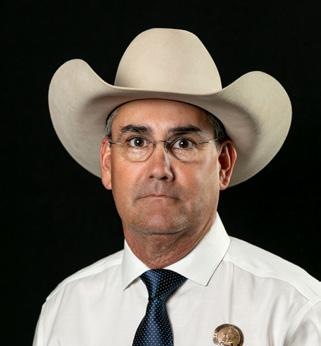

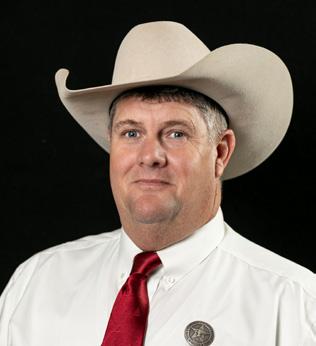
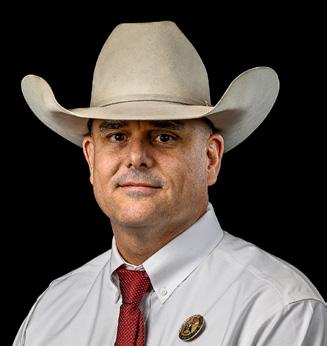
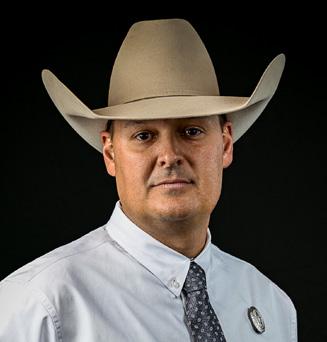

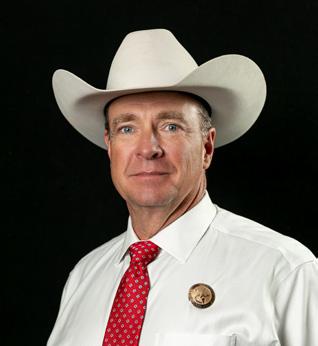
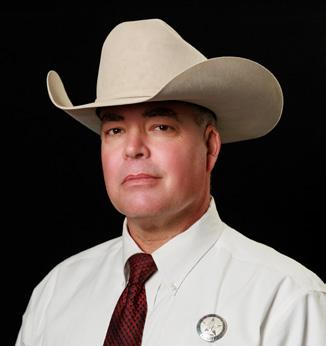
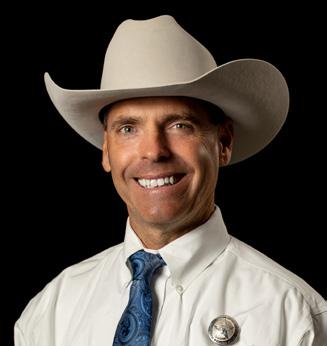

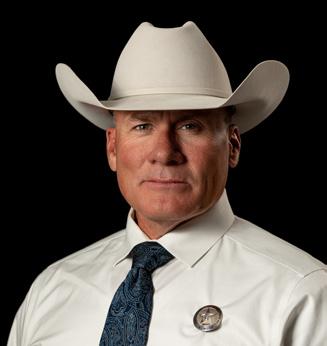
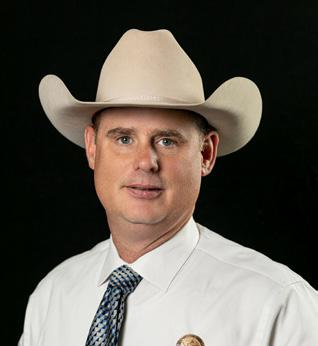


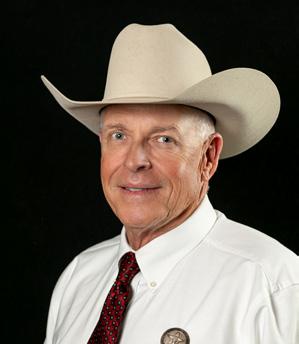



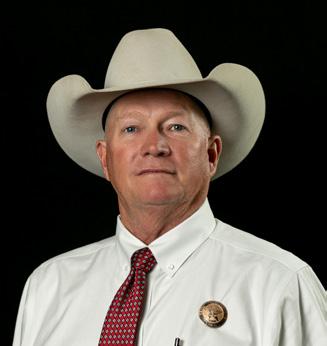
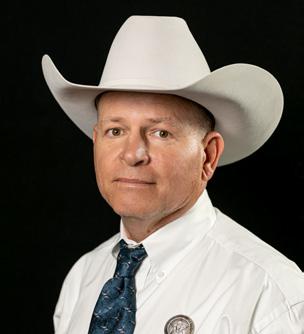
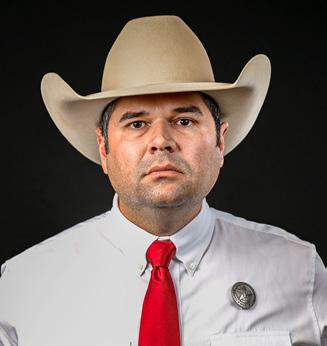

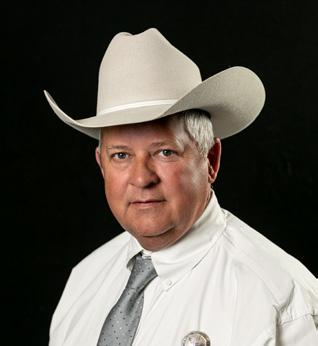

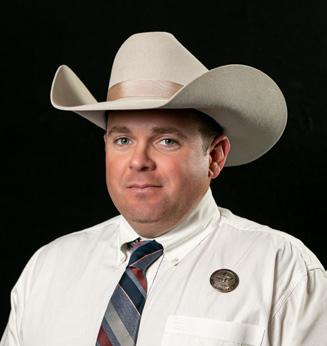
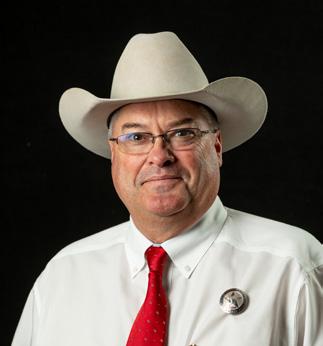
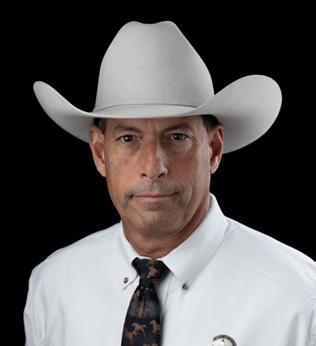
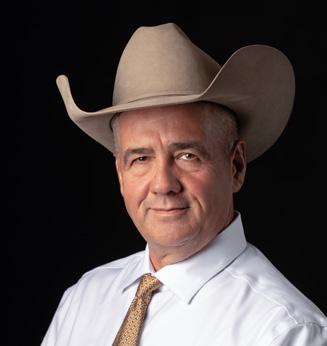
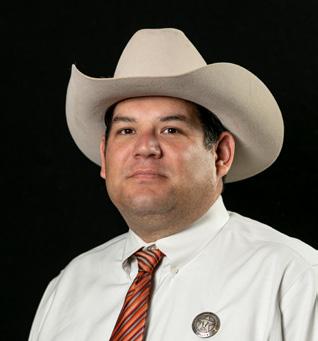
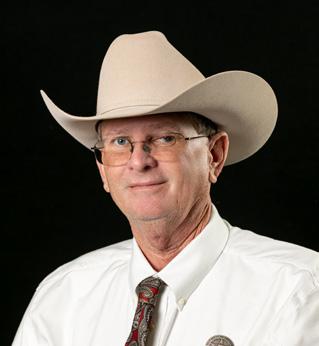
12 Points Ranch Honey Grove
5B Cattle Fredericksburg
Davy Addington Decatur
Amarillo National Bank Amarillo
Anchorage Farms Poolville
Andy Fletcher 4F Cattle Caldwell
The Anita Baloge Memorial Angel Horse Foundation Alpine
BK Whitetails LLC Hondo
Black Pine Insurance Taylor
Bohl's Red Polls Devine
Brahman Darlin Beef Bastrop
Emilie Brandes Hallettsville
Brothers Cattle Co. Hallettsville
Jordan Brown Amarillo
Bobby & Karla Buff Fort Towson, Oklahoma
Brianna Burton Arnett, Oklahoma
CAP Cattle Co. Rising Star
Casa Conejo Boerne
CD Cattle Co. Leonard
CDP Cattle Co. Temple
McKenzie Cloud Breckenridge
Cooper Ranch Monument, New Mexico
Richard Cosner Roland, Oklahoma
Elena Davis Coupland
Davis Ranch Los Fresnos
Diamond M Ranch Marble Falls
Julie Diebel Victoria
DJ Perry Farm & Cattle Alba
Judson Dorman Marlow, Oklahoma
Hayes Duke Fulshear
E-H Angus Wills Point
Donna L. Eardley Carrizo Springs
El Asilo Ranch Pearsall
El Paisano Ranch Rio Grande City
Eli Huffman Family Houston
Feather Creek Ranch Grapeland
Fiasco Cattle Co. Midway
Chance Fite Olney
Flat Creek Ranch Flatonia
Andy Fry Burnet
Clint Harbinson D'Hanis
Alan Hettler Idalou
Paxton Hettler Lubbock
Reid & Angie Holleman George West
HyMeadow Ranch Evant
Jennings Ventures LLC Mason
Karstedt Land & Cattle Midland
Hadleigh Keath Harlingen
Killian Cattle
Wellington
Kline Ranch Bastrop
L&B Cattle LLC Smiley
Lindsey Ranch Throckmorton
LP Ranch Elgin
Tara Mallett Big Spring
MJL5 Livestock LLC Fredericksburg
MJP Ranches LLC Albany
Danny Neskorik Cee Vee
Nix Farms Tolar
Obliviland Jacksonville
Jeremy Omens Norman, Oklahoma
Otto Farms LLC Damon
Brittany Perkins Bertram
Andrew Jackson Pope III Medina
Curtis Qualls
Dallas
R5 Cattle Co. Tyler
Rancho Llueve Poco Freer
Reata Holdings LLC Midland
Landon Reed Palestine
Riley Roberts & Family Encino
Rock Lake Ranch College Station
Rocky Mill Cattle Cleburne
Running H Ranch & Cattle Stockdale
Schronk Custom Ag Ltd. Hillsboro
Serenity Cattle Co. Roosevelt, Oklahoma
Jeff & Sherry Sheppard Robert Lee
SMF Enterprises LLC Center
Phillip Speairs Fort Worth Spring Creek Ranch Austin
Paul & Lea Ann Stasney Rising Star
Sun A Ranch Flatonia
Hudson Thigpen Pearsall
Top Line Farm LLC New Caney
Tripe P Ranch LLC New Braunfels

University Lands Midland
Walters Cattle Justin
Jeremy Wethington Hamlin
Wild Prairie Farm Azle
Wildfire Recovery Attorneys Ventura, California
Williams Family Anadarko, Oklahoma
Winkle Farm Winnsboro
WP Land & Cattle Co. Woodson

Aquifer Exploration & Freshwater Testing; Petroleum Exploration; Natural & Artificial Contaminant Testing; Bedrock & Soil Testing; Expansive Clays; Rare Earth Elements; Sand & Gravel; Basalt Enhanced Weathering; Statistical Rain Estimation; Geothermal; Saline Reservoir Exploration; PFAS Testing.
325-473-4400 - Office Any &
Elkhart Horse Auction
Where: Elkhart
Phone: 903-764-1495
Sale Day: Saturday
Contact: Tiffany Patterson, 903-388-7288
Atascosa Livestock Exchange
Where: Pleasanton Phone: 830-281-2516
Sale Day: Tuesday
Contact: Marvin Bendele, 210-213-5890
Four County Auction
Where: Industry
Phone: 979-357-2545
Sale Day: Tuesday
Contact: Lisa Sebastian, 979-270-3041
Muleshoe Livestock Auction
Where: Muleshoe
Phone: 806-272-4201
Sale Day: Friday
Contact: Leo Aviles, 956-437-3899
Beeville Livestock Comm.
Where: Beeville
Phone: 361-358-1727
Sale Day: Friday
Contact: Robert Bridge, 361-542-6693
Meridian L/S Comm. Co.
Where: Meridian Phone: 254-435-2988
Sale Day: Monday
Contact: Larry Brown, 254-265-1920
Clifton Livestock Comm. LLC
Where: Clifton Phone: 254-675-7717
Sale Day: Wednesday
Contact: Larry Brown, 254-265-1920
J & J Livestock Auction
Where: Texarkana
Phone: 903-832-3576
Sale Day: Saturday
Contact: Cheri Beal, 903-280-4554
Brazos Valley Livestock Comm.
Where: Bryan
Phone: 979-778-0904
Sale Day: Tuesday
Contact: Nina Nygard, 512-281-6753
Caldwell Livestock Comm.
Where: Caldwell
Phone: 979-567-4119
Sale Day: Wednesday
Contact: Mark Nygard, 512-281-6330
Lockhart Auction
Where: Lockhart
Phone: 512-398-3476
Sale Day: Thursday
Contact: Nina Nygard, 512-281-6753
Bruce Overstreet Livestock
Where: Pittsburg
Phone: 903-856-3440
Sale Day: Monday
Contact: Michelle Willeford, 903-767-0670
Tri County Livestock Market
Where: New Summerfield
Phone: 903-322-4940
Sale Day: Saturday
Contact: Jerry Boulware, 936-465-1597
Coleman Livestock Auction
Where: Coleman Phone: 325-625-4191
Sale Day: Wednesday
Contact: Dave Williams, 325-669-2030
Cattleman’s Columbus Livestock Auction
Where: Columbus Phone: 979-732-2622
Sale Day: Wednesday
Contact: Lisa Sebastian, 979-270-1228
Comanche Livestock Exchange
Where: Comanche Phone: 325-356-5231
Sale Day: Saturday
Contact: Michael Davis, 254-879-3121
The New Gainesville Livestock Auction
Where: Gainesville
Phone: 940-665-4367
Sale Day: Friday
Contact: Robin Gibbs, 903-227-0791
Coryell County Comm.
Where: Gatesville Phone: 254-865-9121
Sale Day: Wednesday
Contact: Ray Davis, 254-718-5512
Cattleman’s Livestock Comm.
Where: Dalhart
Phone: 806-249-5505
Sale Day: Thursday
Contact: Clifton Miller, 806-570-7439
Hereford Livestock Auction
Where: Hereford
Phone: 806-240-3082
Sale Day: Tuesday
Contact: Joe Bob Via, 806-452-9280
Cuero Livestock Comm. Where: Cuero Phone: 361-275-2329
Sale Day: Friday
Contact: Kaylee Malatek, 979-942-0323
Texas Cattle Exchange
Where: Eastland Phone: 254-629-2288
Sale Day: Tuesday
Contact: Ronnie Ober, 817-371-7071
Dublin Livestock Auction Where: Dublin Phone: 254-445-1734
Sale Day: Friday
Contact: Ronnie Ober, 817-371-7071
Erath County Dairy Sale Where: Dublin Phone: 254-968-7253
Sale Day: Friday
Contact: Bob McBryde, 940-859-6217
Stephenville Cattle Co. Where: Stephenville Phone: 254-968-4844
Sale Day: Wednesday
Contact: Bob McBryde, 940-859-6217
Flatonia Livestock Comm. Where: Flatonia Phone: 361-865-3538
Sale Day: Monday
Contact: Shannon Gallip, 512-995-1492
Schulenburg Livestock Auction
Where: Schulenburg Phone: 979-743-6566
Sale Day: Saturday
Contact: Vance Weltner, 210-473-9099
Floydada Livestock Sales
Where: Floydada
Phone: 806-983-2153
Sale Day: Wednesday
Contact: JE Stone, 806-777-4396
Pearsall Livestock Auction
Where: Pearsall
Phone: 830-334-3653
Sale Day: Wednesday
Contact: Clarence Stevens, 210-415-0441
Gillespie Livestock Co.
Where: Fredericksburg
Phone: 830-997-4394
Sale Day: Wednesday
Contact: Larry Bowden, 210-846-0380
Gonzales Livestock Market
Where: Gonzales
Phone: 830-672-2845
Sale Day: Saturday
Contact: Landyn Maguglin, 361-492-9484
Nixon Livestock Comm.
Where: Nixon
Phone: 830-582-1561
Sale Day: Monday
Contact: Landyn Maguglin, 361-492-9484
Longview Livestock
Where: Longview
Phone: 903-235-6385
Sale Day: Thursday
Contact: Paul Pruitt, 903-725-6200
Mid-Tex Livestock Auction
Where: Anderson
Phone: 936-825-3970
Sale Day: Thursday
Contact: Rick Faught, 936-442-1039
Navasota Livestock Auction
Where: Navasota
Phone: 936-825-6545
Sale Day: Saturday
Contact: Rick Faught, 936-442-1039
Seguin Cattle Co.
Where: Seguin
Phone: 830-379-9955
Sale Day: Wednesday
Contact: Elizabeth Cortez, 830-857-1945
Hamilton Livestock Comm.
Where: Hamilton
Phone: 254-386-3185
Sale Day: Tuesday
Contact: Bob McBryde, 940-859-6217
Gore Family Auction Center
Where: Silsbee
Phone: 409-782-0612
Sale Day: Saturday
Contact: Christy McCoy, 409-782-0612
Athens Comm. Co.
Where: Athens
Phone: 903-675-3333
Sale Day: Friday
Contact: Brandy Baughman, 903-440-4382
Edinburg Livestock Auction
Where: Edinburg
Phone: 956-383-5671
Sale Day: Saturday
Contact: Coney Alvarez Jr., 956-437-3899
Hubbard Livestock Market
Where: Hubbard
Phone: 254-576-2584
Sale Day: Monday
Contact: Bob McBryde, 940-859-6217
Sulphur Springs Livestock Comm.
Where: Sulphur Springs
Phone: 903-885-2455
Sale Day: Monday
Contact: Paul Pruitt, 903-725-6200
East Texas Livestock Auction
Where: Crockett
Phone: 936-544-2246
Sale Day: Tuesday
Contact: Cheyenne London, 936-222-3689
Big Spring Livestock Auction
Where: Big Spring
Phone: 432-267-5881
Sale Day: Wednesday
Contact: Bruce Brandenberger, 254-977-5763
Edna Livestock Auction
Where: Edna
Phone: 361-782-7666
Sale Day: Monday
Contact: Galynn Mazoch, 979-578-1823
Kirbyville Auction Barn
Where: Kirbyville
Phone: 409-423-2612
Sale Day: Saturday
Contact: Erica Morgan, 409-509-1946
Gulf Coast Livestock Market
Where: Alice
Phone: 361-664-4395
Sale Day: Tuesday
Contact: Ramiro Garcia, 361-460-0008
Johnson County Cattle Auction
Where: Cleburne
Phone: 817-556-9090
Sale Day: Saturday
Contact: Lee Snyder, 254-707-1682
Karnes City Auction
Where: Karnes City
Phone: 830-780-3382
Sale Day: Saturday
Contact: Elizabeth Cortez, 830-857-1945
Karnes County Livestock Exchange
Where: Kenedy
Phone: 830-583-2574
Sale Day: Thursday
Contact: Elizabeth Cortez, 830-857-1945
Cattlemen’s Livestock Comm.
Where: Paris
Phone: 903-784-2238
Sale Day: Saturday
Contact: Lana Caldwell, 903-908-0530
Paris Livestock Auction
Where: Paris
Phone: 903-739-2575
Sale Day: Wednesday
Contact: Robin Gibbs, 903-227-0791
Hallettsville Livestock Comm.
Where: Hallettsville
Phone: 361-798-4336
Sale Day: Tuesday
Contact: Kaylee Malatek, 979-942-0323
Giddings Livestock Comm.
Where: Giddings
Phone: 979-542-2274
Sale Day: Monday
Contact: Nina Nygard, 512-281-6753
Lexington Livestock Comm.
Where: Lexington
Phone: 979-773-2922
Sale Day: Saturday
Contact: Nina Nygard, 512-281-6753
Buffalo Livestock Comm.
Where: Buffalo
Phone: 903-322-4940
Sale Day: Saturday
Contact: Mallory Steen, 903-390-0594
Raywood Livestock Market
Where: Raywood
Phone: 936-587-4941
Sale Day: Monday
Contact: Harvey Williamson, 963-334-5325
Groesbeck Auction & Livestock
Where: Groesbeck
Phone: 254-729-3277
Sale Day: Thursday
Contact: Mallory Steen, 903-390-0594
Live Oak Livestock Auction
Where: Three Rivers
Phone: 361-786-2553
Sale Day: Monday
Contact: Marvin Bendele, 210-213-5890
Jordan Cattle Auction
Where: Mason
Phone: 325-347-6361
Sale Day: Monday
Contact: Warren Ottmers, 830-669-2262
West Auction
Where: West Phone: 254-826-3725
Sale Day: Thursday
Contact: Ray Davis, 254-718-5512
Union Comm.
Where: Hondo
Phone: 830-741-8061,
Sale Day: Monday
Contact: Clarence Stevens, 210-415-0441
Milam County Livestock Auction
Where: Cameron
Phone: 254-697-6697
Sale Day: Friday
Contact: Rick Faught, 936-442-1039
Nacogdoches Livestock Exchange
Where: Nacogdoches
Phone: 936-564-8661
Sale Day: Thursday
Contact: Michael Witcher, 936-556-0992
Corsicana Livestock Market
Where: Corsicana
Phone: 903-872-1631
Sale Day: Tuesday
Contact: Lee Snyder, 254-707-1682
Panola Livestock
Where: Carthage
Phone: 903-693-6361
Sale Day: Tuesday
Contact: Lori Blankenship, 936-234-3441
Livingston Livestock Exchange
Where: Livingston
Phone: 936-327-4917
Sale Day: Saturday
Contact: Harvey Williamson, 963-334-5325
Lonestar Stockyards
Where: Amarillo
Phone: 806-677-0777
Sale Day: Tuesday
Contact: Gary McClellan, 806-334-0517
Emory Livestock Auction
Where: Emory
Phone: 903-473-2512
Sale Days: Tuesday & Saturday
Contact: Brandy Baughman, 903-440-4382
Calvert Livestock Co.
Where: Calvert
Phone: 979-364-2829
Sale Day: Friday
Contact: Ray Davis, 254-718-5512
Hunt Livestock Exchange
Where: Henderson
Phone: 903-657-2690
Sale Day: Monday
Contact: Samuel Steadman, 318-617-1141
Jordan Cattle Auction
Where: San Saba
Phone: 325-372-5159
Sale Day: Thursday
Contact: David Munden, 325-456-7253
Center Auction Co.
Where: Center
Phone: 936-598-4395
Sale Day: Wednesday
Contact: Michael Witcher, 936-556-0992
Triple G Livestock Auction LLC
Where: Rio Grande City Phone: 956-437-1988
Sale Day: Friday
Contact: Coney Alvarez Jr., 956-437-3899
Tulia Livestock Auction
Where: Tulia
Phone: 806-995-4184
Sale Day: Thursday
Contact: Tommy Thompson, 806-690-4080
Abilene Auction
Where: Abilene Phone: 325-673-7865
Sale Day: Tuesday
Contact: Dave Williams, 325-669-2030
Stone Livestock Comm.
Where: Mt. Pleasant
Phone: 903-575-9099
Sale Day: Tuesday
Contact: Paul Pruitt, 903-725-6200
Producers Livestock Auction
Where: San Angelo Phone: 325-653-3371
Sale Day: Thursday
Contact: Bruce Halfmann, 325-315-5972
Southwest Livestock Exchange
Where: Uvalde Phone: 830-278-5621
Sale Day: Thursday
Contact: Clarence Stevens, 210-415-0441
Mort Livestock Exchange
Where: Canton
Phone: 903-287-6386
Sale Day: Special Sales Only
Contact: Paul Pruitt, 903-725-6200
Brenham Livestock Auction
Where: Brenham Phone: 979-836-3621
Sale Day: Friday
Contact: Lisa Sebastian, 979-270-3041
El Campo Livestock Exchange LLC
Where: El Campo
Phone: 979-543-2703
Sale Day: Tuesday
Contact: Galynn Mazoch, 979-578-1823
Wharton Livestock Auction
Where: Wharton
Phone: 979-532-3660
Sale Day: Wednesday
Contact: Galynn Mazoch, 979-578-1823
Wichita Livestock Sales
Where: Wichita Falls
Phone: 940-541-2222
Sale Day: Wednesday
Contact: R.C. Langford, 832-330-7279
Vernon Livestock Market LLC
Where: Vernon
Phone: 940-552-6000
Sale Day: Tuesday
Contact: Dennis Wilson, 940-613-7693
Decatur Livestock Market
Where: Decatur
Phone: 940-627-5599
Sale Day: Monday
Contact: Rebecca Benson, 940-389-6382
Winnsboro Livestock Auction
Where: Winnsboro
Phone: 903-365-2201
Sale Day: Friday
Contact: Alan Pruitt, 903-725-6200
Graham Livestock Comm. LLC
Where: Graham
Phone: 940-549-0078
Sale Day: Monday
Contact: Kyla Rater, 940-284-9968

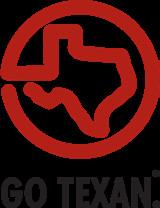








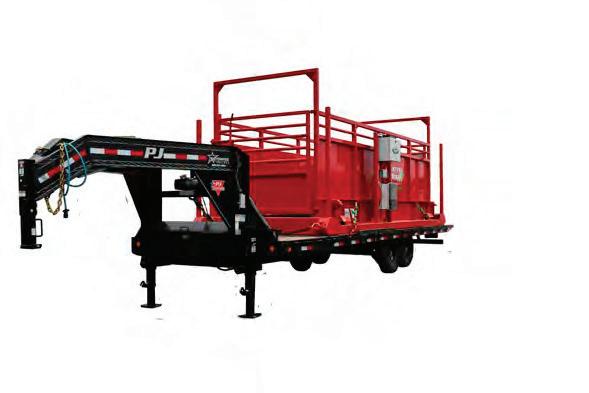

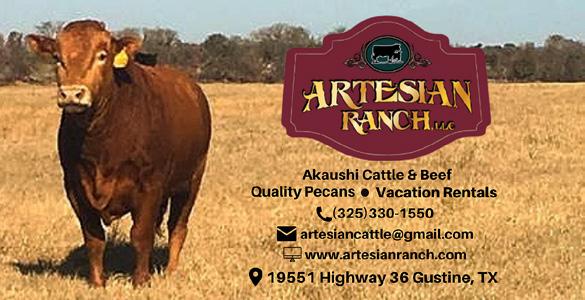


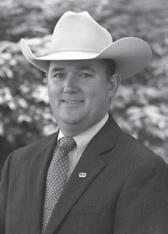

Greg • GAR@GardinerAngus.com www.GardinerAngus.com
• Phone: 325-643-2225 Cell: 325-647-9168 • Fax: 326-643-6235
Email: rlhmd@familymedical.us
Registered Black Angus WWW.LITTLEROBEANGUSRANCH.COM



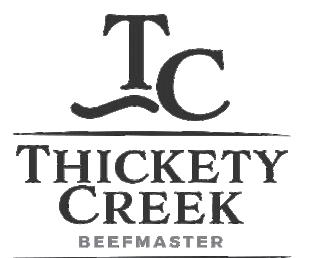

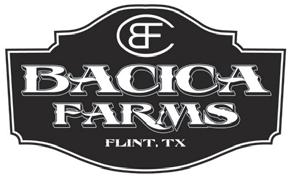


Mike & Carla Bacica 11707 FM 2868 Flint, TX 75762
Mike: 903-520-0390 mbpga@aol.com Carla: 903-530-8551 wtnca@aol.com



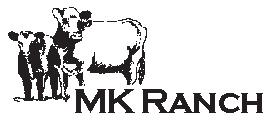

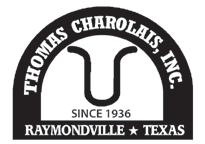
McDade, Texas Rusk, Texas 512.970.1595 512.970.3588

C ATTLE C OMPANY
Registered Brangus & Charolais Bulls
713.204.4903 or 713.253.4804 Call about bulls • Cuero, Texas R AMRO LLC/

Caleb Boscamp 830-857-5189
Julie Boscamp 830-857-5129 julieboscamp@yahoo.com 303 County Road 459 • Waelder, TX 78959 www.arrowheadcharolaisranch.com
Dennis Cha r olais Bull s 40 years of selective breeding/performance testing for… Easy Calving and… Explosive Growth Eric and Angie Dennis Saint Jo, TX 940/995-2161 940/841-2792 Cell

Nipp 580 513.3555














John 325-642-0745 • Tom 325-642-0748 Comanche, Texas; Ph. 325-356-2284; Fax 325-356-3185 Email: john@dudleybros.com

“Registered Herefords Since 1938” 923 Hillside Ave. Canadian, TX 79014 806-323-2906 lee@indianmoundranch.com www.indianmoundranch.com Lee & Jacqui Haygood
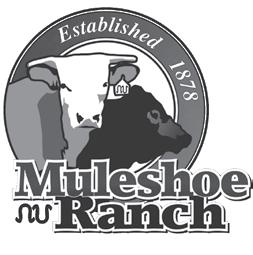
J .T . E chols DVM
P.O. Box 709 • Breckenridge, TX 76424 Of: (254) 559-9739 • Cell: (254) 559-0156 muleshoeranch@gmail.com
Registered Polled Herefords & Black Baldies FOR SALE
Contact: Nina Neel Sanders 214-454-8587 • Brady, TX
NOACK HEREF OR DS
“Quality Registered Herefords” Est.1921 – Bulls for sale at all times out of good milking cows Office: 512-446-6200 Cell: 979-218-0065


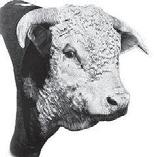

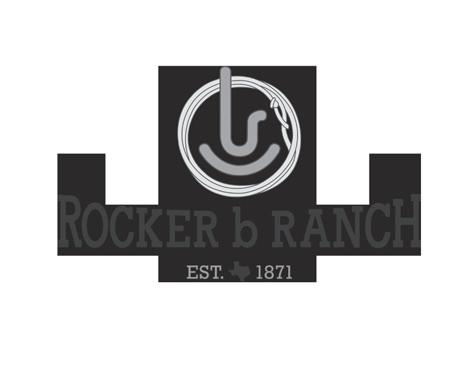


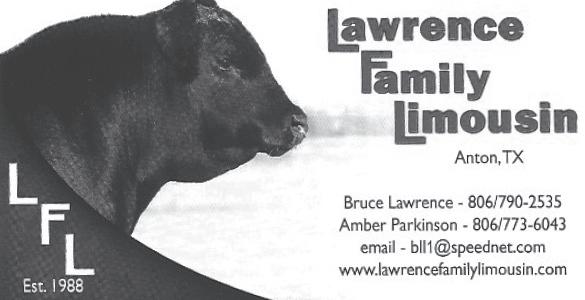


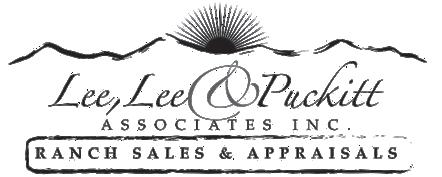

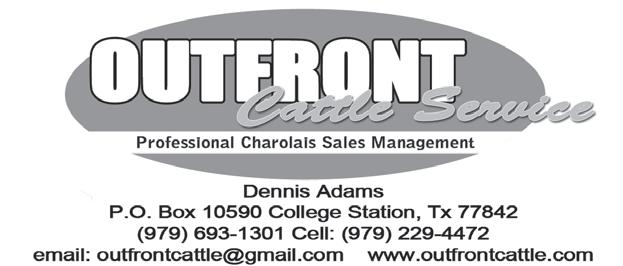


virtually new 5 strand barb

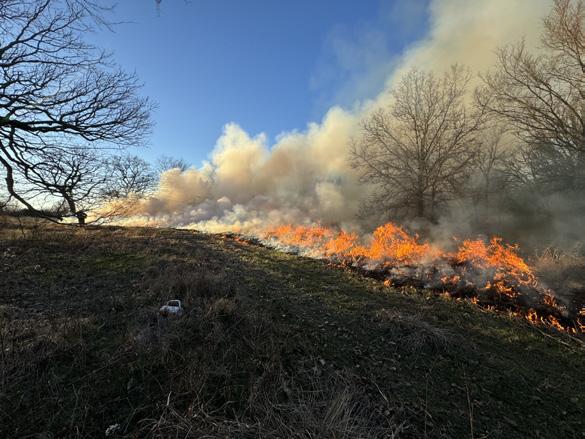


w/swinging gates, w/part of the property being on pvmt.. Lays in two tracts of 1,120 ac. +/- in one at $1,600/ac. and 1,600 ac. +/- in the other at $1,000.00 which can be purchased together or separately.
NEW LISTING! CLA NEW LISTING! CLAYTON, NM YTON, – 9 ac. +/- located on pvmt. behind a large convenience store on which has been partially begun infrastructure for an RV park. This property will also lend itself well as a large development such as new or existing businesses expanding their company.
UNION CO., NM UNION CO., NM – Just out of Clayton, NM, 2 sections +/- located on pvmt. complete with two large circles containing 398.4 ac. +/- & 452.94 ac. +/- irrigated by pivot sprinklers w/four irrigation wells and accompanying irr. equipment, on pvmt. together w/a lease of 800 ac. +/- of Kiowa National Grassland and across the hwy. a large feedyard w/four circles irrigated by ¼ mile sprinklers, six irr. Wells and accompanying irr. equipment. The two sections w/the grass lease & the feedyard w/four adjoining quarters can be purchased together or separately. www.scottlandcompany.com Ben G. Scott - Broker • Krystal M. Nelson - NM QB 800-933-9698 5:00 a.m./10:00 p.m.
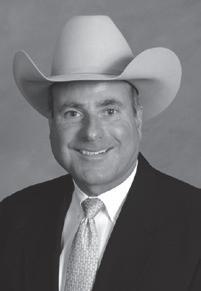



Simmental & SimAngus BULL SALE
21st Annual Bull Sale
March 8, 2012
March 6, 2025
San Saba, Texas
Private Treaty Sales
Mike Mallett
10602 North Hwy 281 • Lampasas, TX 76550
Home: 512-556-8548 • Cell: 512-556-1021 www.mallettsimmentals.com
Our cattle are perfomance tested. Mike and Connie Mallett • 512-556-1021 Lampasas, Texas • mmcmallett@outlook.com

Stonewall Valley Ranch

Registerd Texas Longhorn bulls, cows, heifers, roping steers, trophy steers, semen, mounts skulls for sale. Overnight accommodations
www.stonewallvalleyranch.com 512-970-4676 (HORN) or 512-751-2386 (BEVO)

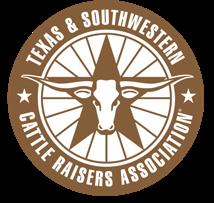
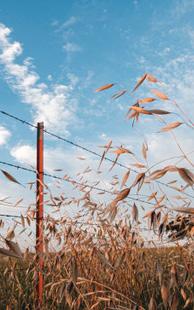



MONDAY, JULY 8 –
WEDNESDAY, JULY 10
NCBA Summer Business Meeting Where: San Diego, California
WEDNESDAY, JULY 10 –SUNDAY, JULY 14
Texas FFA Convention Where: Houston
THURSDAY, JULY 11
Wichita Falls Luncheon Where: McBride’s Steakhouse, Wichita Falls When: 11:30 a.m.
TSCRA Ranch Gathering Where: Albany When: 5:30 p.m.
SUNDAY, JULY 14 –
THURSDAY, JULY 18
Texas County Ag. Agents Assoc. Meeting Where: Dallas
TUESDAY, JULY 16
Ranching 101: Actions Affecting Calf Prices Where: Online When: 1 p.m.
WEDNESDAY, JULY 17 –
SUNDAY, JULY 21
43rd Texas Ranch Roundup Where: Wichita Falls
THURSDAY, JULY 18
TSCRA Ranch Gathering Where: Henderson When: 5:30 p.m.
SATURDAY, JULY 27
Special Replacement Female Sale Where: Jordan Cattle Auction, San Saba When: 10 a.m.
THURSDAY, AUG. 1
TSCRA Ranch Gathering Where: Crockett When: 5:30 p.m.
MONDAY, AUG. 5 –
WEDNESDAY, AUG. 7
Texas A&M AgriLife Beef Cattle Short Course Where: College Station
THURSDAY, AUG. 15
TSCRA Ranch Gathering Where: Beaumont When: 5:30 p.m.
TUESDAY, AUG. 20
Ranching 101: Beef Exports Equal Producer Profit Where: Online When: 1 p.m.
SATURDAY, AUG. 24
Special Replacement Female Sale Where: Jordan Cattle Auction, San Saba When: 10 a.m.
WEDNESDAY, SEPT. 4
TSCRA Ranch Gathering Where: Stephenville When: 5:30 p.m.
THURSDAY, SEPT. 5
TSCRA Ranch Gathering Where: Sulphur Springs When: 5:30 p.m.
THURSDAY, SEPT. 12
Wichita Falls Luncheon Where: McBride’s Steakhouse, Wichita Falls When: 11:30 a.m.
TSCRA Ranch Gathering Where: Waco When: 5:30 p.m.
THURSDAY, SEPT. 12 –
SUNDAY, SEPT. 22
Oklahoma State Fair Where: Oklahoma City
TUESDAY, SEPT. 17
Ranching 101: Shooting Season, Know Your Limits Where: Online When: 1 p.m.
TSCRA Ranch Gathering Where: Decatur When: 5:30 p.m.
SATURDAY, SEPT. 21
TSCRA Young Producer Clay Shoot Where: Boerne When: 2:00 p.m.
MONDAY, SEPT. 23
Gardiner Angus Ranch: 20 th Annual Fall Production Sale Where: Ashland, Kansas
FRIDAY, SEPT. 27 –SUNDAY, OCT. 20
State Fair of Texas Where: Dallas
SATURDAY, SEPT. 28
Special Replacement Female Sale Where: Jordan Cattle Auction, San Saba When: 10 a.m.
THURSDAY, OCT. 3
Dudley Bros.: 63rd Annual Bull Sale Where: Comanche When: 12 p.m.
FRIDAY, OCT. 4
Jorgensen Land & Cattle: Pasture-Ready SmartBull Sale Where: Ideal, South Dakota When: 5:30 p.m.
TUESDAY, OCT. 8
Powell Ranch Herefords: 27th Annual Production Sale Where: Fort McKavett When: 12:30 p.m.
THURSDAY, OCT. 10
Texas Agricultural Land Trust Working Lands Innovation Summit Where: Henrietta
TSCRA Ranch Gathering Where: Fredericksburg When: 5:30 p.m.
SUNDAY, OCT. 13 –
TUESDAY, OCT. 15
Texas Cattle Feeders Assoc.: Annual Convention Where: San Antonio
TUESDAY, OCT. 15
Ranching 101: Building a Bull-Buying Budget Where: Online When: 1 p.m.
SATURDAY, OCT. 26
44 Farms: Fall Bull Sale Where: Cameron When: 10 a.m.
TSCRA Texas A&M Football Tailgate Where: College Station
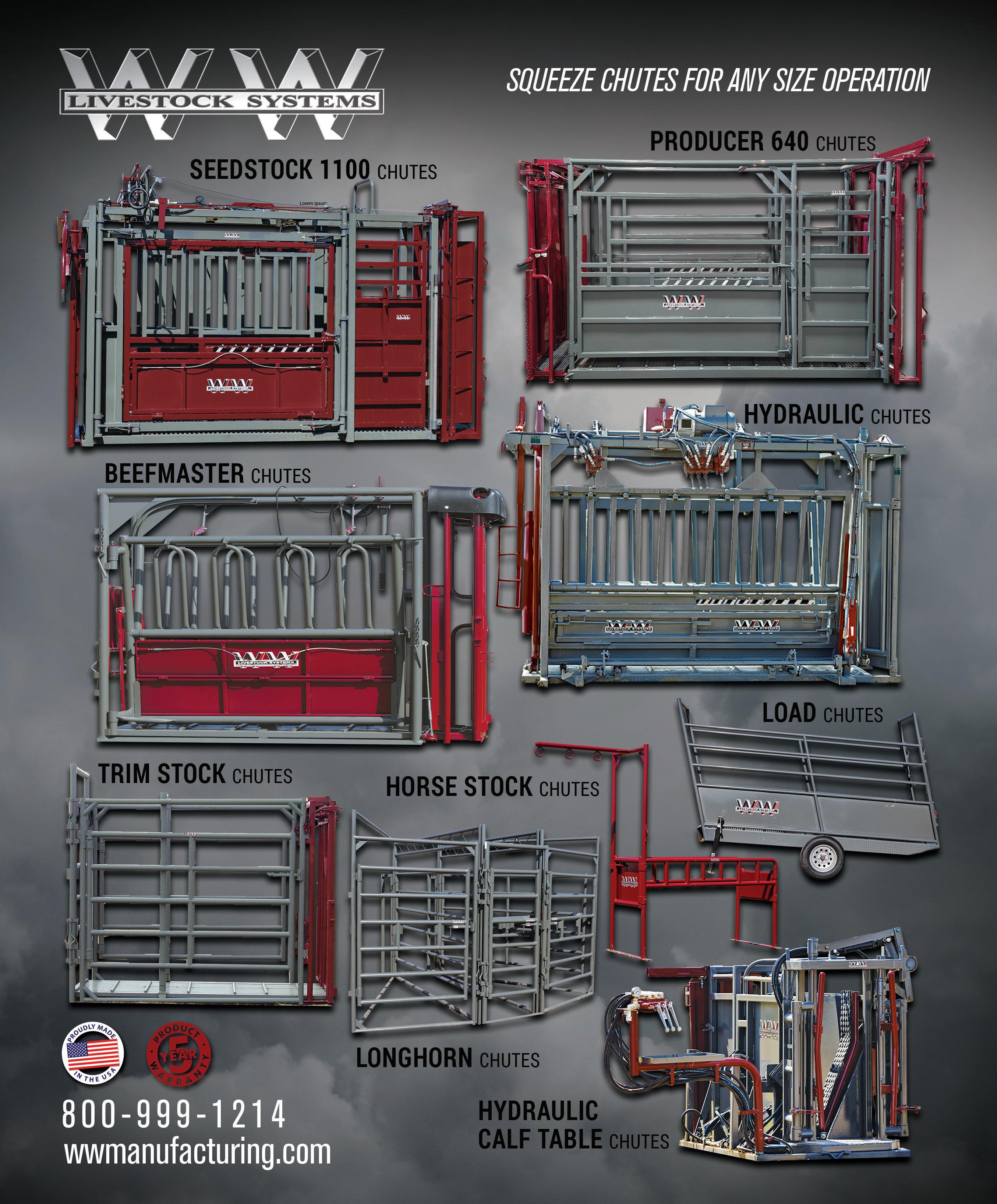

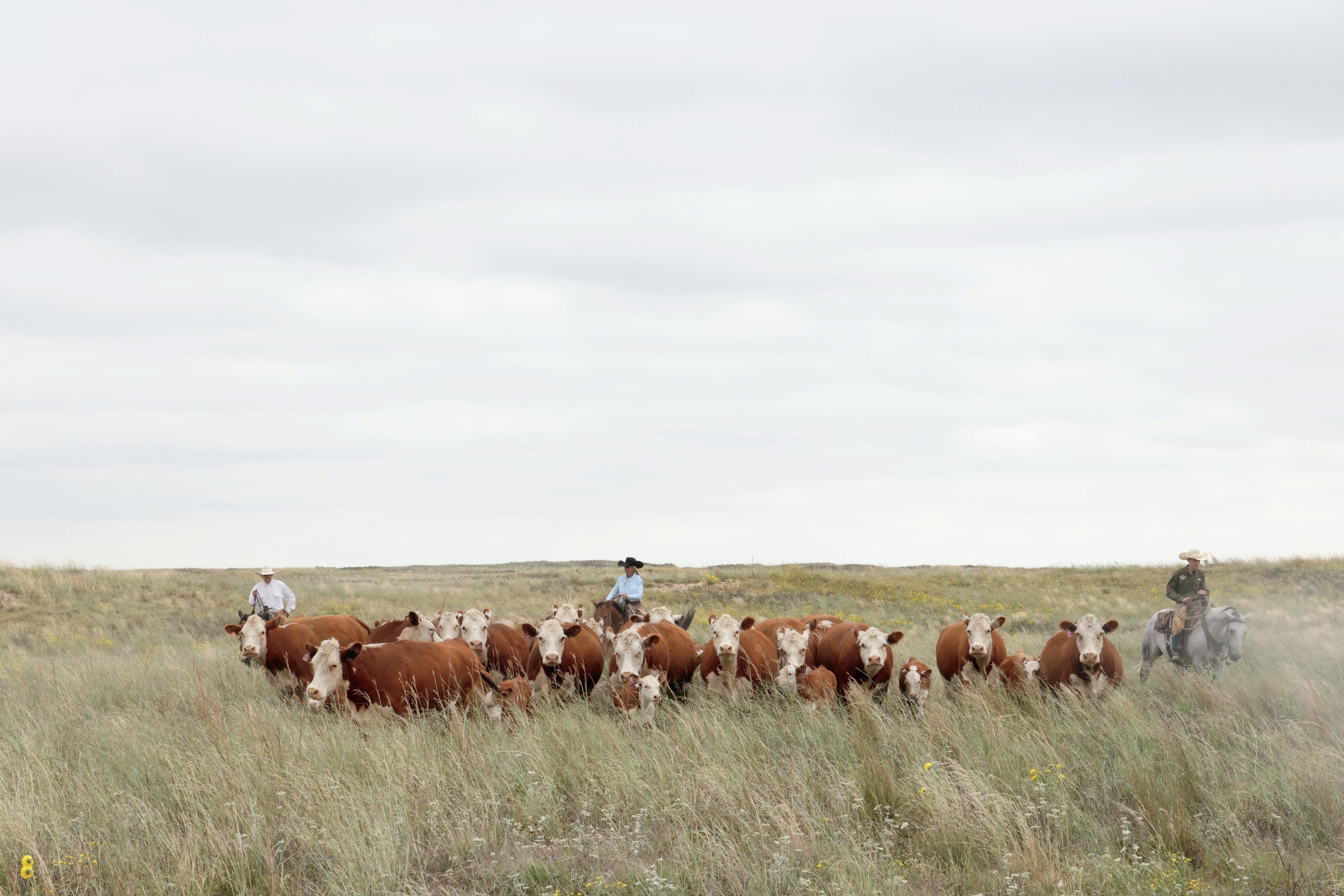




Two scenes from the Clyde Burnett Ranch near Benjamin are depicted on the cover in July 1924. The top photo features the crew enjoying a chuckwagon meal, followed by branding in the lower image.
In the magazine’s pages is a story titled Cattle Breeding in the Light of Modern Science , which recounts progress made in animal evaluation. The author explains how many of the first prominent cattle breeders began their business lives as butchers.
“The reason for this is easy to understand when one’s attention is called to it…they were compelled by their business to become good judges of livestock and their standards of judgment did not emphasize any useless fancy points, but their aim was to know the animals which would yield them the most meat of the best quality at the cheapest price.” T C



